Connect With Us

2017 forecast:


2017 forecast:
Rockville, MD - When it comes to American cuisine, there are few things more iconic than steakhouses. The slabs of marbled meat, the sizzling grills, the oozing butter, and the dripping bravado, maybe even a cowboy hat or two for ambiance—it's enough to make even fictional steakophile Ron Swanson misty-eyed.
Yet for all the traditional steak dinners ordered daily, there are restaurants nationwide pushing the concept of the all-American steakhouse to new culinary heights, according to market research firm Packaged Facts in the brand new report 2017 Forecast: Culinary Trend Tracking Series.
Last month, May 2023, the United States Supreme Court released an opinion in Sackett v. EPA (styled Sackett II), in which the Court unanimously held that the Environmental Protection Agency (EPA) overstepped its jurisdiction in classifying wetlands on the Sackett property as “waters of the United States” (WOTUS). In short, the Court’s opinion significantly limits the jurisdictional reach over “waters of the United States” under the Clean Water Act (CWA) and ended the use of the “significant nexus” test to determine whether a wetland is subject to federal jurisdiction.
the EPA concluded the homeowners were illegally dumping onto “the waters of the United States.”
In Sackett II, a five-vote majority established a two-prong test that must be satisfied to exercise federal authority over a wetland. The Court stated:
“In sum, we hold that the CWA extends to only those wetlands that are 'as a practical matter indistinguishable from waters of the United States.' Rapanos, 547 U.S., at 755 (plurality opinion) (emphasis deleted). This requires the party asserting jurisdiction over adjacent wetlands to establish 'first, that the adjacent
[body of water constitutes]… ‘water[s] of the United States,’ (i.e., a relatively permanent body of water connected to traditional interstate navigable waters); and second, that the wetland has a continuous surface connection with that water, making it difficult to determine where the ‘water’ ends and the ‘wetland’ begins.”'Id., at 742.”
What does this mean for Florida wetlands?
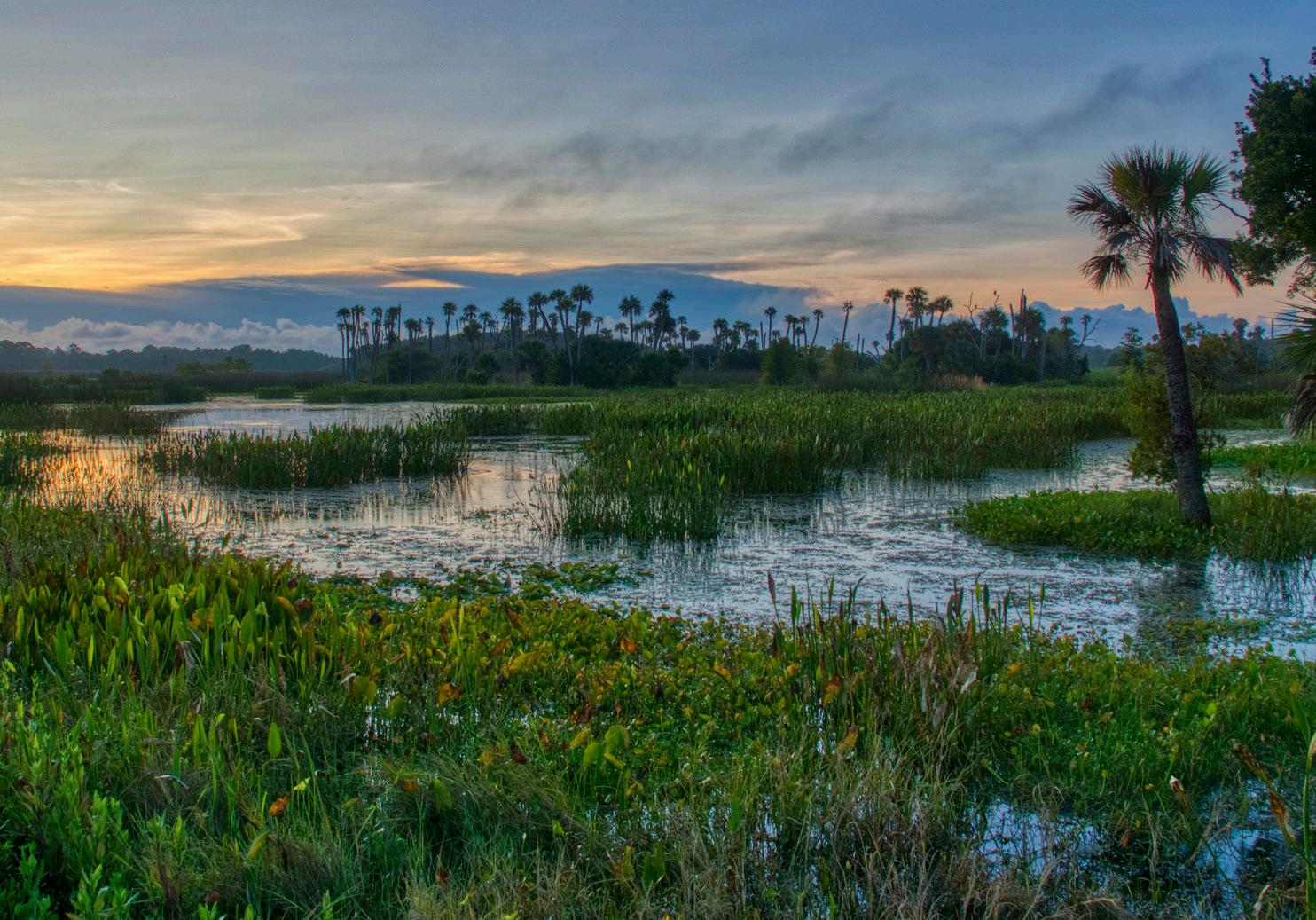
The CWA preserves, and this ruling confirms, state primacy over water. Florida’s
Sackett II
"The steakhouse is back and will capture our attention in 2017. Not that the classic restaurant style ever disappeared, but a renewal of the model is taking place in response to new sources of beef and new flavorful expressions of the concept that get chefs and diners excited," says David Sprinkle, research director, Packaged Facts.
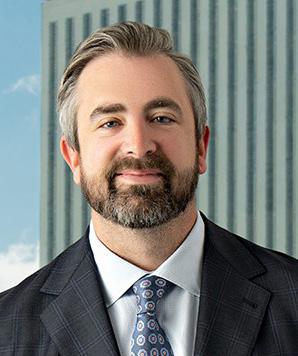
Today's steakhouse menus increasingly feature grass-fed cattle, locally raised animals, heritage varieties, meat butchered and dry aged in-house, and dishes that stem from the whole animal, not just the premium cuts. And that's just the meat. Creative side dishes in lieu of old standards, global and seasonal flavors, and a wider menu selection also distinguish these new school operations.
The specific facts in this case concerned homeowners who had purchased a lot near Priest Lake in Idaho and began backfilling their property with dirt and rocks. Months later, they received a notification from the EPA that they were in violation of the Clean Water Act, “because their property contained protected wetlands.” The EPA claimed the wetlands on their lot are “adjacent to” an “unnamed tributary” on the other side of a 30-foot road and that the tributary feeds into a non-navigable creek, which then flows into a navigable lake. Utilizing the “significant nexus” test,
Chefs and consumers both want their meat to taste delicious and to feel good about its’ consumption, too. This new breed of steakhouse broadcasts its mission to support local ranchers, factor in sustainability and animal welfare, and create a dining experience that showcases culinary flair, not just a grill master's skill at cooking steak to the requested doneness. These operations are also designed to be more inclusive, more of a great place for all kinds of people to dine well, not just traditionminded men on expense accounts.
As a result, the modern steakhouse is increasingly similar to other modern restaurants with a focus on distinctive
 By RYAN MATTHEWS, Shareholder, GrayRobinson
By RYAN MATTHEWS, Shareholder, GrayRobinson
been the talk of the town since 2016.
The annual 60-day legislative session concluded May 5 as lawmakers managed to escape Tallahassee on time with no need to extend the process in order to land the budget, a rare event in comparison to years past.
Following a 2022 election cycle that saw Republicans gain supermajorities in the House and Senate, the controlling party had carte blanche to adopt their agenda this session. Working seamlessly with the Governor, numerous big-ticket items were passed in the substantive policy areas of: housing; education choice; tort reform; immigration; data privacy; conservation; as well as numerous social issues that highlight the potential future aspirations of our sitting Governor.
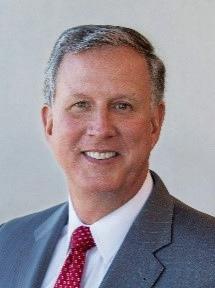
coming in, before vetoes, at $117 billion, which was well above the Governor’s Recommended Budget of $114.8 billion and far exceeded both the House and Senate’s initial budgets, which hovered more than $113.5 billion each. The state’s budget has doubled since 2010 due in large part to continued economic growth and general revenue collections.
alternative water supply funding.
"As Jollibee debuts in Florida, we anticipate seeing not only a multitude of excited Jollibee patrons waiting to get their hands on their Jollibee favorites, but also first-timers waiting to have their own Jollibee experience," said Jose Miñana, Jollibee Foods Corporation's Group President for North America. "There's no greater joy for us than serving the needs and tastes of Jollibee fans in the community. At Jollibee, we aim to bring families together for happy moments over great tasting food with superior value, served with warm and friendly service – our own brand of joy."
With the opening, Floridians will get to try Jollibee's signature menu items such as the world famous Chickenjoy. This dish is delicately breaded to be crispylicious on the outside and juicylicious inside. The well-loved Jolly Spaghetti is a favorite of both kids and kids-at-heart because of its signature sweetstyle sauce, loaded with chunky slices of savory ham, ground meat, and hotdog. Other classic menufavorites include the juicy and cheesy Jolly Hotdog, and the Peach Mango Pie, which is made with real Philippine sweet mangoes and a flaky golden brown crust. See JOLLIBEE page 15
Governor DeSantis has proven to be a champion of the River of Grass and the Everglades. They continue to receive significant budget attention from both the Governor and the legislature. 2023 was no exception as more than $600 million was appropriated for restoration and water quality improvements.
The 2023 Legislative Session brought with it the largest budget in the state’s history,

While, nationally, talk of a pending recession exists, Florida has shown little evidence of a slowdown. The environment has benefitted greatly from the state’s economy through the Governor’s recommended budgets and the legislature’s willingness to fund programs that benefit the state’s natural resources.
Included in the 2023 budget is more than $1 billion for water quality improvements, the highlights of which are: $200 million for the revamped and expanded the FDEP Wastewater Grant Program; $105 million for the new Indian River Lagoon Water Quality Improvement Program; $70 million for the C-51 Reservoir; $433 million in member water projects, again before the dreaded veto pen; and $60 million in
The brand has become a symbol of nostalgia and warm childhood memories for many overseas Filipinos in the U.S. To many, Jollibee is the go-to restaurant of Filipinos for both special

In addition to the Everglades, conservation programs were undoubtedly a big winner, bringing home over $1 billion. The Florida Wildlife Corridor, since first making its appearance in 2021 had more than $850 million appropriated, while the Florida Forever program received $100 million, in addition, the Florida Communities Trust (FCT) received a standalone $15 million.
From a policy perspective, dozens of bills relating to the environment were filed, however, few ultimately passed. By and far the most substantive was HB 1379, by Representatives Kevin Steele and Toby Overdorf, which dealt with a wide swath of environmental programs at the FDEP.
CONTINUED ON
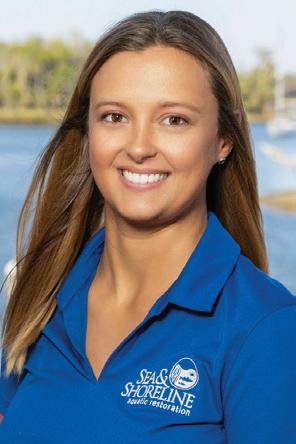
Seagrass loss is occurring on a global scale with estimates exceeding 30% based on total coverage as first recorded in the late 1800s.
Throughout Florida, seagrass has decreased by 15% to 50% depending on the area, as some locations are more impacted than others. Recent evidence suggests that the rate of loss and the extent of degradation is accelerating.
Globally, the rate of disappearance has increased from less than 1% per year prior to 1940 to 7% per year after 1990.
Global seagrass loss is estimated at 10,000 km2 annually.
Seagrass is typically found in shallow coastal waters, making it uniquely susceptible to disturbance and anthropogenic (human derived) impacts. Many factors contribute to the decline, including habitat fragmentation, direct destruction from boating, eutrophication (excessive nutrient enrichment), development, and effects from climate change.
Declines in this resource have negative impacts such as an increase in harmful algae blooms (HABs), accelerated erosion, increased CO2 emissions, and a lack of foraging grounds for manatees.
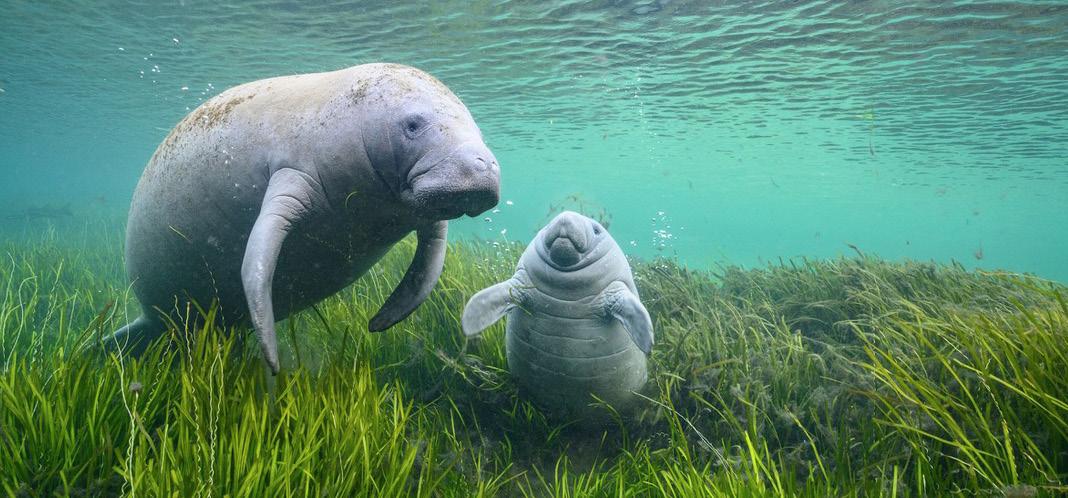
There are about 60 species of seagrasses worldwide; of these, seven are native to Florida. Two of the more common species are turtle grass [Thalassia testudinum] and shoal grass [Halodule wrightii]. There are other aquatic plants akin to seagrass that live in freshwater and brackish systems.
Collectively, they are known as submerged
aquatic vegetation (SAV). Seagrass and SAV are often colloquially used interchangeably because they provide many of the same benefits to their surrounding ecosystems. Seagrass and SAV are considered keystone species for the numerous ecosystem services they provide, including habitats for a myriad of fish species and other wildlife.
During some point in their lifecycle, about 80% of critically important commercial and recreational fish and shellfish rely on these habitats. Seagrass and SAV also serve as a primary food source for charismatic fauna, such as manatees and sea turtles. Herbivores, ranging from large manatees to the smallest of sea urchins, have been documented foraging in both naturally occurring and restored areas.
Loss of this vital nutrition source contributes to an overall lack of biodiversity, perpetuating environmental decline.
The seagrass and SAV roots and rhizomes, with their complex interlocking matrices, physically hold sediments in place. By stabilizing the bottom sediments, these aquatic plants reduce resuspension and turbidity. Their blades create drag in the water
column which attenuates wave energy to reduce erosion in high-energy environments.
Each year, hundreds of millions of dollars are allocated to shoreline projects, with an ever-increasing focus on utilizing nature-based solutions to protect against erosion. Robust seagrass and SAV ecosystems provide this nature-based solution for shoreline protection and building resiliency in vulnerable areas. Seagrass and SAV also sequester nutrients and carbon, from both the water column and sediments, within their tissues and meadow-associated sediments.
Seagrass meadows can sequester nearly three times the amount of carbon as terrestrial forests, mitigating the effects of climate change and ocean acidification. In freshwater systems, dense SAV meadows can serve as major sinks for nutrients that would otherwise fuel HABs.
One of the greatest challenges facing global seagrass and SAV conservation is raising awareness. Local and federal agencies alike have realized the value of these ecosystems and the investments required to protect and restore them.
Many grassroots initiatives have joined the fight as well, serving as valuable partners to complete this work.
Aquatic restoration is a complex, multistep, multi-year process that involves cultivating planting units, installation, maintenance, and long-term monitoring. During the past decade, this process has been fine-tuned for waterbodies throughout the state. As a result, several major restoration projects have been successful.
More than 90 acres of aquatic habitat were restored in Crystal River, which naturally expanded to over 300 acres in subsequent years. The project began in 2015 and phase one was just completed this year. In the Caloosahatchee River, 22 acres were restored in 2019, with plans for over 50 additional acres of SAV installation this coming summer. And in the summer of 2023, five tributaries to the Indian River Lagoon (IRL) will be restored with seagrass and SAV, totaling more than 3,000 planting units in all.
As research and methods evolve, new innovative strategies for protection and restoration of aquatic ecosystems are born. Stormwater treatment areas offer a unique opportunity for seagrass and SAV installation, improving water quality prior to discharge into the receiving body, which is usually already impaired. Such is the case with the Indian River Lagoon, where any improvement to in-bound waters is extremely beneficial for the lagoon system. Multitrophic projects, designed to address several environmental concerns in one project, strive for the restoration of all ecosystem functions.
By approaching these projects holistically, critical seagrass and SAV restoration work can be performed with a high level of success, resulting in the improved functioning of these incredibly valuable ecosystems.●

Publisher
Staff Writers
BLANCHE HARDY, PG
Senior Correspondent
MBA, MSRED, LEED Green Associate
Contributing Writers and Columnists
RACHEL ARNDT Communications Manager
Tampa Bay Watch
FRANK BERNARDINO
Co-Founder
Anfield Consulting
MICHEL BRUNEAU
Ph.D., P.Eng. Dist .M.ASCE, F.SEI, F.CAE
LEO CANNYN PMP, P.E., ENV SP Principal Project Manager Beryl Project Engineering
MACIE J. H. CODINA and RALPH A. DEMEO, Esq. Guilday Law Firm
KATIE KRAMER
Environmental Supervisor
Sea & Shoreline
JERRY L. MALLAMS, P.G. Operations Bureau Chief Southwest Florida Water Management District
RYAN MATTHEWS Shareholder GrayRobinson
TOM STRICKLAND Recycling Coordinator City of Gainesville
ADAM TANK Chief Customer Officer Transcend Software
HERSCHEL T. VINYARD, Jr. Special Counsel Adams and Reese
The Florida Specifier makes every effort to ensure the accuracy and validity of all editorial and advertising content. The newspaper is independent in its views and does not support, endorse or guarantee any data, statements or opinions that appear under any reference or are attributed to or quoted from any known source. The views expressed by authors do not necessarily reflect the views of SPECIFIER PUBLISHING LLC or the Florida Specifier

The Florida Specifier (ISSN 0740-1973), founded in 1979, is published every other month for $60 per year in-state; $80 out-of-state, by SPECIFIER PUBLISHING LLC, P.O. Box 1857, Tallahassee, FL 32302. Subscription refunds are not provided. Local tax applies.
Please inquire about free subscriptions for non-profits, schools, etc.
POSTMASTER: Send address changes to the FLORIDA SPECIFIER P.O. Box 1857, Tallahassee, FL 32302.
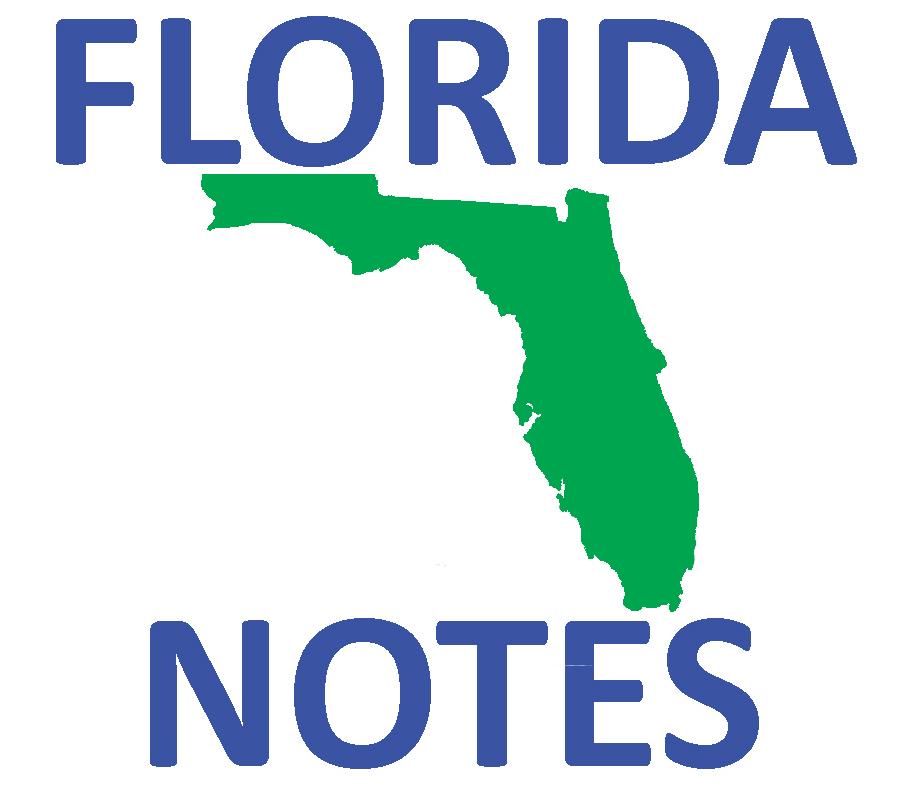
© Copyright 2023 by SPECIFIER PUBLISHING LLC. All rights reserved. No part of this publication may be reproduced or transmitted in any form without the publisher’s prior written permission.
Florida Specifier P.O. Box 1857 Tallahassee, FL 32302 Admin@FloridaSpecifier.com
The U.S. Army Corps of Engineers, Jacksonville District, and the South Florida Water Management District (SFWMD) recently completed two National Environmental Policy Act (NEPA) meetings to receive public input for scoping the Feasibility Study and Environmental Impact Statement (EIS) for the Lake Okeechobee Component A Reservoir (LOCAR).
The SFWMD is conducting the studies and exploring opportunities for above-ground water storage north of Lake Okeechobee.
The study area covers a large portion of the Lake Okeechobee Watershed north of the lake itself and will provide ecological benefits to the lake and northern estuaries.
The proposed LOCAR is intended to store excess water in the northern watersheds and release the excess at times when it is beneficial for the region. This increased storage capacity is anticipated to reduce the duration and frequency of high and low water levels in Lake Okeechobee, which are harmful to the lake’s ecology.
The reservoir will also help reduce discharges from Lake Okeechobee to the northern estuaries frequently impacted by related algal blooms.
The United States Geological Survey (USGS) has issued Revised Framework for Hydrogeology of the Floridan Aquifer, the principal source of freshwater for agricultural irrigation, industrial, mining, commercial, and public supply in Florida and southeast Georgia.
This publication provides an update of the hydrogeologic framework of the Floridan aquifer system underlying Florida and parts of Georgia, Alabama, and South Carolina.
This is the first update of the framework in more than 30 years and it incorporates new borehole data showing a detailed conceptual model that describes the major and minor units and zones of the system.
This update will allow authorities and resource managers to more accurately monitor aquifers, improving their ability to protect the resource and determine the near- and long-term availability of groundwater.
The SFWMD has recently shared 10 easyto-follow tips on how to reduce monthly water bills and conserve hundreds of gallons of water, both indoors and outdoors.
One of the main culprits of water waste, as highlighted by the SFWMD, is leaks, which can occur both inside and outside of your home. The District suggests using your water meter to identify any leaks.
To do so, turn off all faucets and water-using appliances, and make sure that nobody uses any water during the testing period. Wait for the hot water heater and ice cube makers to refill. Go to your water meter and take note of the current reading. Wait for 30 minutes, making sure that no water is used during this time. Afterward, read the meter again. If you notice any changes in the reading, it is likely that you have a leak that needs fixing.
As per an article published in Nature, there is evidence indicating that there has been a rise in the global mean sea level (MSL) acceleration since the 1960s. However, detecting this phenomenon at a local level has been a challenge due to the natural variations in the rate of MSL change.
A recent report has studied tide gauge records along the U.S. Southeast and Gulf coasts, and it has been found that there is an unprecedented MSL acceleration of over 10mm per year since 2010. This acceleration is the highest recorded in at least 120 years.
The report attributes this acceleration to an ocean dynamic signal that surpasses the response from historical climate model simulations. The study's implications are significant in the context of predicting the impact of rising sea levels on coastal communities and infrastructure.
St Johns River WMD Launches Redesigned General Information Permitting Webpage
The St. Johns River Water Management District (SJRWMD) has recently introduced an updated landing page on their website to provide the public with more comprehensive information about their permitting program. The new landing page features a photo-based interface that offers easy access to an overview of the permitting groups work.
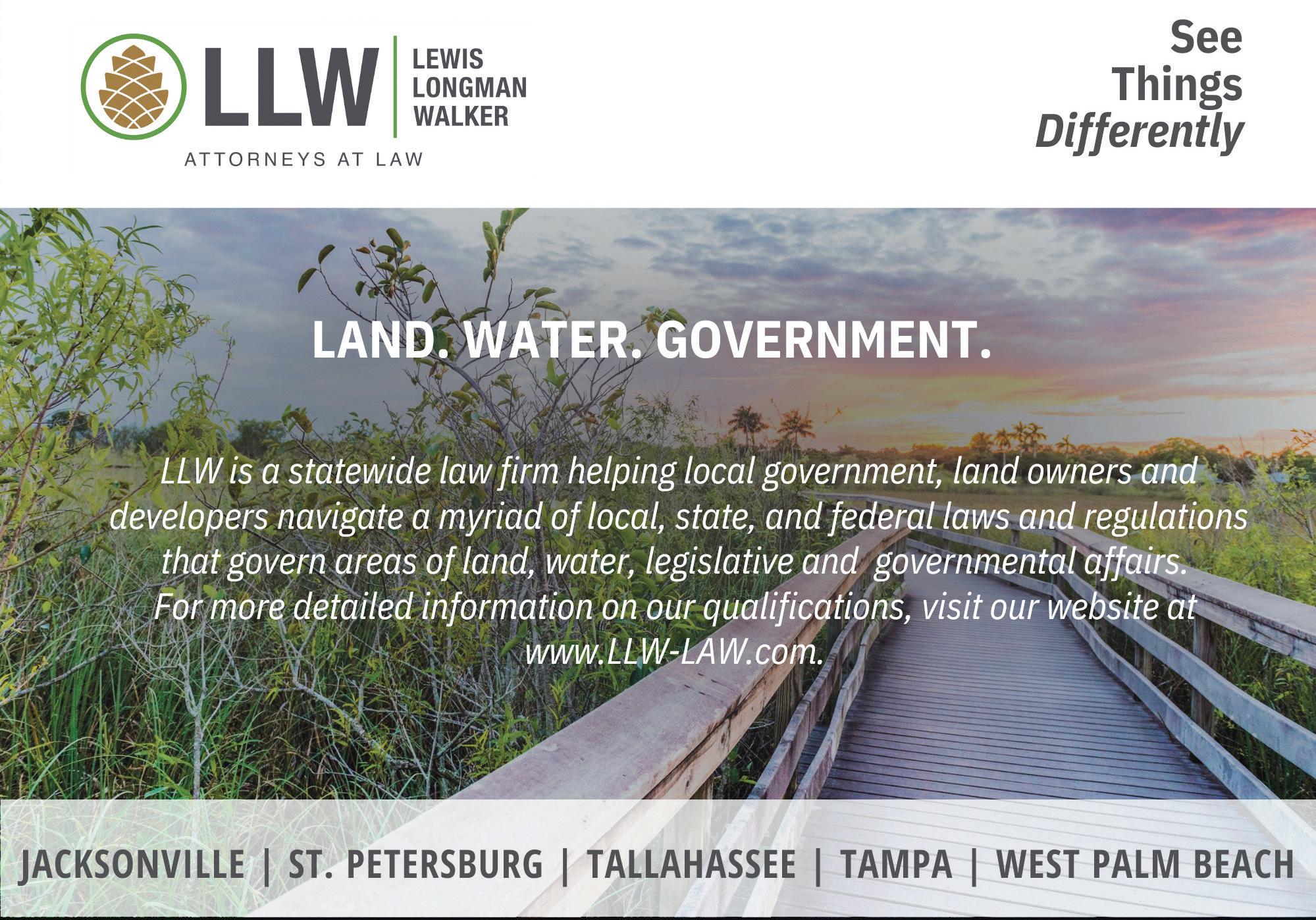
However, it's important to note that this new website is not designed to replace the existing ePermit portal that is used for applying or tracking permits. The previous related URLs are still available, and users can access them by visiting sjrwmd.com/ permitting.
One of the most useful features of the newly added website is its map-based interactive tool. This tool allows visitors to search for the latest permits by city, county, or specific address. The permits are color-coded with dots that provide a high-level overview of the permit, and users also have the option to view additional details. This interactive tool is especially helpful for those who want to stay informed about the latest permits in their area.
Overall, the SJRWMD's new landing page is a welcome improvement in terms of user experience. It provides a user-friendly interface that is easy to navigate, and it offers more comprehensive information about the permitting program.
National Fish and Wildlife Foundation Supports Development of Florida Gulf Environmental Benefit Fund Restoration Strategy
The National Fish and Wldlife Foundation (NFWF) has announced an award of up to
$4.5 million to the Florida Fish and Wildlife Conservation Commission (FWC) and other entities in Florida to support the development and implementation of programs and projects under the Gulf Environmental Benefit Fund.
This new planning effort is intended to serve as a framework to restore and conserve Florida’s Gulf Coast natural resources. The team will identify priority projects for future funding consideration from NFWF’s Gulf Environmental Benefit Fund. The projects receiving funding will remedy harm or risk of future harm to natural resources that were affected by the 2010 Deepwater Horizon oil spill.
The NFWF recalls a U.S. District Court approved two plea agreements resolving certain criminal charges against BP and Transocean related to the Deepwater Horizon oil spill in 2013. Provisions within the plea agreements direct a total of $2.5 billion to the National Fish and Wildlife Foundation over a five-year period. And from that amount, NFWF will receive more than $356 million for projects to protect or restore natural resources in Florida.
SFWMD Conducts Lower East Coast Water Supply Plan Stakeholder Meetings
The SFWMD has announced the first public meeting seeking community input on the proposed 2023 Lower East Coast (LEC) Water Supply Plan Update. The Water Supply Plan will assess current and projected water needs in the LEC Planning Area
through 2045, and includes Palm Beach, Broward, and Miami-Dade counties as well as most of Monroe County and the eastern portions of Hendry and Collier counties. The meeting will be available via Zoom and the meeting materials will be posted to the Lower East Coast Water Supply Plan webpage before the meeting.
The meeting will be live streamed and recorded. At the conclusion of the meeting, the recording will be posted to the District’s YouTube page.
Participation is strongly encouraged. Public input is critical to ensuring the water supply plan update addresses the needs of the region.
The Florida Legislature Addressed
Local Fertilizer Management Ordinance Restrictions in the State’s Budget Proposal
The Florida Legislature has passed an
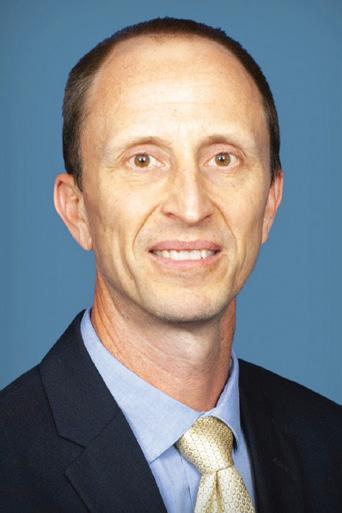
QUESTION: What does the District do to prepare for hurricane season?
ANSWER: Yearround, the District operates 84 water control structures in its 16-county area. These structures assist with flood protection, manage lake water levels, and prevent saltwater from flowing up freshwater streams and creeks.
To prepare for hurricane season, staff conduct annual hurricane readiness checks of all the District’s structures to ensure they are working properly.
This includes making certain all structure gates are functioning correctly and that each emergency generator is working and fully fueled.
Q: What is a critical structure?
A: Some of our flood control structures are considered critical structures, such as the structures associated with the Tampa Bypass Canal System. This system routes flood water from the Hillsborough River around the cities of Tampa and Temple Terrace, providing protection from river flooding.
Used in 2017 during Hurricane Irma, the canal system was moving up to 3 billion gallons of flood water a day, sparing homes and businesses along the lower Hillsborough River from flooding. Due to their important flood protection role, these structures are considered critical structures.
Q: What is the largest flood control system in the District?
A: The Tampa Bypass Canal System is the largest flood control system in the District.
It is made up of nine flood control structures, a 6.5-mile earthen dam, and 15.7 miles of canals, and impounds flood waters from the Hillsborough River into the 16,000-acre Lower Hillsborough Flood
Detention Area.
As the detention area fills with water from the river and the surrounding 450-square-mile watershed, the flows then enter the Tampa Bypass Canal and are safely diverted to McKay Bay, protecting the cities of Temple Terrace and Tampa from flooding.
The Tampa Bypass Canal System was constructed in response to massive flooding caused by Hurricane Donna in 1960.
Q: How are the structures operated?
A: All the Tampa Bypass Canal structures, along with many other District structures, can be operated remotely or manually. All the District’s mission-critical water control structures, including the 17 flood control structures, are operated remotely by staff using a computer. This allows staff to operate structures 24/7 from any location. About half of the District’s water control structures must be manually operated, with staff having to be physically present at the location to operate the structure.
Q: What actions does the District take during an active storm threat?
The2023 Atlantic Hurricane Season began on June 1 and the Florida Division of Emergency Management (FDEM) is encouraging residents to take precautions to safeguard their homes and businesses. The season is from June 1 to November 30.
"As we saw in the 2022 hurricane season, it only takes one storm to cause significant impacts and devastate a community,” said FDEM Director Kevin Guthrie. "If you haven’t already, take the time now to finalize your hurricane preparedness plans for your families and businesses, build your disaster supply kit during the ongoing disaster sales tax holiday, and start any lastminute home-hardening projects to mitigate impacts from future storms.”
Governor Ron DeSantis recently announced that a record $2.7 billion in tax relief will be provided to the people of Florida. This will comprise of two sales tax holidays for disaster preparedness, with the next on set from Aug. 26 to Sept. 8.
The FDEM strongly encourages all Floridians to take a few essential steps now to ensure their personal safety and that of their family in the event of a hurricane or
tropical storm. The following checklist can serve as a guide as you begin your planning process:
A: During an active storm threat, District officials activate its Emergency Operations Center (EOC) to monitor tropical storms and hurricanes.
Depending on the level of activation, the District will mobilize appropriate emergency personnel to report to the EOC for extended shifts. Staff will monitor and document water levels and operate water control structures on water bodies throughout the District’s 16-county area as needed.
EOC officials will maintain direct communications with the state and affected county EOCs and distribute information to the media, the public and District employees.●
Jerry Mallams is a licensed professional geologist in Florida and has worked for the District for 26 years. Jerry manages the 84 District-owned flood control and water conservation structures and canal rights of way within the 16-county area. In addition, he oversees the maintenance of 271,000 acres of District conservation lands. The District’s Emergency Operations Center (EOC) also resides under Mallams’ bureau.
Get Educated, Get Informed
Learn about community disaster plans and community warning systems. Every household is encouraged to have a battery-oper-
Therecent 2023 Legislative Session in Florida concluded with the state budget for Fiscal Year 2023-24 being sent to Governor Ron DeSantis. The Governor praised the significant investments made in Florida's environment and natural resources, which serve as the backbone of its thriving economy.
Notably, the budget included a remarkable $1.6 billion allocation towards Everglades restoration and water quality projects. Additionally, Florida has managed to maintain elevated levels of reserves while making unprecedented investments in infrastructure and the environment.
In order to uphold Florida's strong financial position amidst challenging economic conditions, Governor DeSantis vetoed $510.9 million.
Governor DeSantis aimed to invest $2.5 billion in water resource protection over four years in 2019. However, the Florida Legislature and Governor surpassed
this target by securing over $3.3 billion. The Governor is continuing this historic investment with Executive Order 23-06, which calls for $3.5 billion over the next four years for Everglades restoration and water resource protection, including water quality and supply. The state budget has initiated this investment by allocating more than $1.6 billion.
In the 2023 Budget, there is over $694 million allocated towards Everglades restoration initiatives, which encompasses the following projects:
• $356.5 million for the Comprehensive Everglades Restoration Plan (CERP).
• $64 million for the EAA Reservoir to continue the momentum of this critical project to reduce harmful discharges and help send more clean water south of the Everglades.
• $50 million is included for specific project components designed to achieve the greatest reductions in
harmful discharges to the Caloosahatchee and St. Lucie Estuaries as identified in the Comprehensive Everglades Restoration Plan Lake Okeechobee Watershed Restoration Project Draft Integrated Project Implementation Report and Environmental Impact Statement dated August 2020.
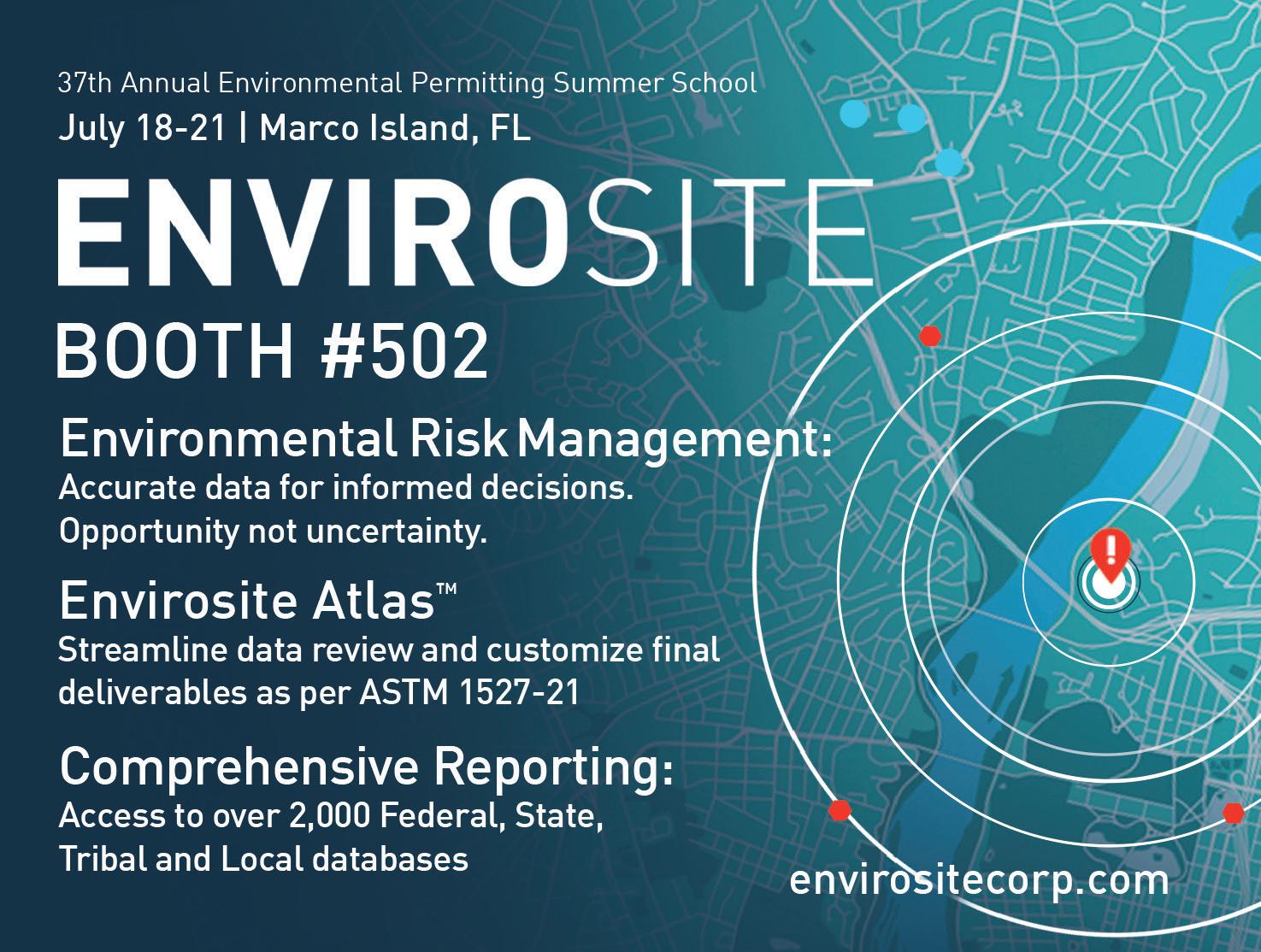
• $96.1 million is included for the Northern Everglades and Estuaries Protection Program.

As part of the budget, there is an allocation of $796 million to improve water quality in specific areas. The goal is to achieve significant and measurable nutrient reductions, particularly in vital waterbodies throughout the state. Additionally, the initial suggestions of the Blue-Green Algae Task Force will be put into practice. The budget allocates funds for various initiatives to improve the quality of Florida's water resources, including $50 million for the restoration of the state's world-re-
nowned springs. It also includes $85 million for the continued stabilization, water treatment, and closure of Piney Point, as well as $59 million to combat the effects and impacts of harmful algal blooms, including blue-green algae and red tide.
Furthermore, the budget sets aside $17 million to support ongoing oyster restoration efforts in Apalachicola Bay, which will increase the supported acreage to 2,000 acres of durable oyster habitat.
To support the agricultural industry, the budget includes over $2.8 billion, with $52.4 million specifically designated for citrus research, the Citrus Health Response Program, and consumer awareness marketing.
Lastly, the budget provides $1 billion to safeguard important properties and waterways, including $850 million for lands within the Florida Wildlife Corridor and $100 million for the Florida Forever Program to support land conservation and recreation. ●
Complete a Personal Assessment
Make a list of your personal needs and your resources for meeting them in a disaster environment.
ated or hand-crank weather radio to ensure they can continue to receive alerts from the National Weather Service in the event of power outages or damaged cell towers.
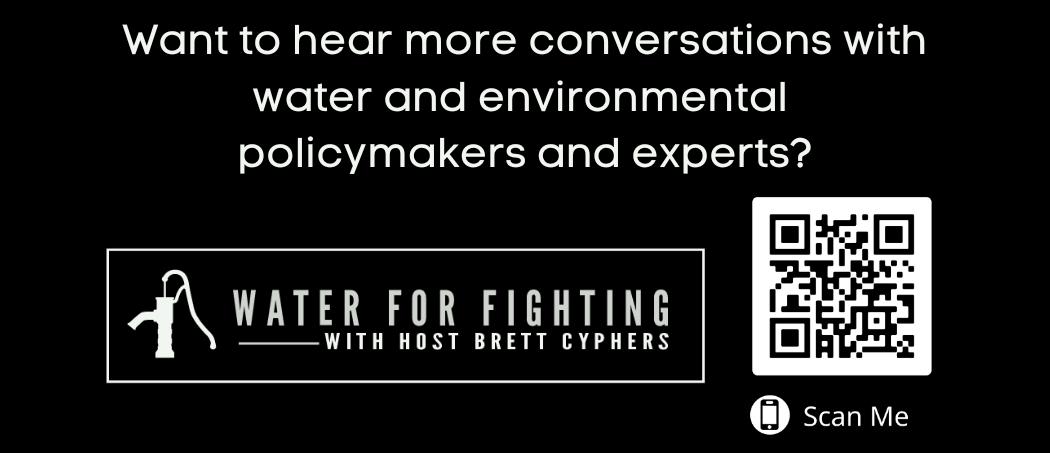
Prepare an Emergency Kit
Every household should have a fully stocked disaster supply kit with at least 7 days of items, including consideration of children, pets, and seniors. Florida’s Disaster Preparedness Sales Tax Holiday is ongoing and provides residents with the opportunity to purchase supplies tax-free during one of two 14-day Disaster Preparedness Sales Tax Holidays. For a full disaster supply kit checklist, visit FloridaDisaster.org/Kit.
Know Your Home, Know Your Zone
Visit FloridaDisaster.org/Know to learn what evacuation zone you live in.
Know your home’s ability to withstand hurricane-force winds.
Have a Plan for Your Pets
Have a safe place to take your pets if you cannot bring them with you during an evacuation. Never leave your household
pets behind during a hurricane or tropical storm.
Assemble a portable pet disaster supply kit with essential supplies to care for your pet.
Utilities
Know how and when to turn off water, gas and electricity at the main switches and valves.
Keep any tools you will need near gas and water shut-off valves.
Turn off utilities only if you suspect lines are damaged or if local officials instruct you to do so.
Safety Devices
Be sure you know where your fire extinguishers are and how to use them. Install smoke alarms on every level of your home, especially near the bedrooms.
Install a battery-operated or battery backup carbon monoxide detector.
Several times a year, test your smoke alarms to ensure they are working properly.
Important Records and Documents
Keep copies of important family records and other documents (birth and marriage certificates, Social Security cards, passports, wills, deeds, financial, insurance, medical/immunization records, and copies of current bills) in a safe deposit box or other waterproof location.
Inventory Home Possessions
Make a record of your possessions — in writing or video — to help you claim reimbursement in case of loss or damage.
Reduce Home Hazards
Have defective electrical wiring and leaky gas connections repaired.
Place large, heavy objects on lower shelves. Have cracks in ceilings and foundations repaired.
Plan for Your Business
Make a plan for your business at floridadisaster.biz. ●
According to the latest report released by the Climate Prediction Center, a subdivision of the National Weather Service, the National Oceanic and Atmospheric Administration (NOAA), has forecasted that the upcoming Atlantic hurricane season is expected to exhibit a level of activity that is in close alignment with the average. This projection is based on extensive research and analysis of various meteorological factors, and it is intended to provide the public with a comprehensive understanding of what to expect in terms of weather conditions and potential hazards in the coming months. As always, it is advisable to closely monitor updates from NOAA and other reliable sources to stay informed and prepared for any unforeseen circumstances.
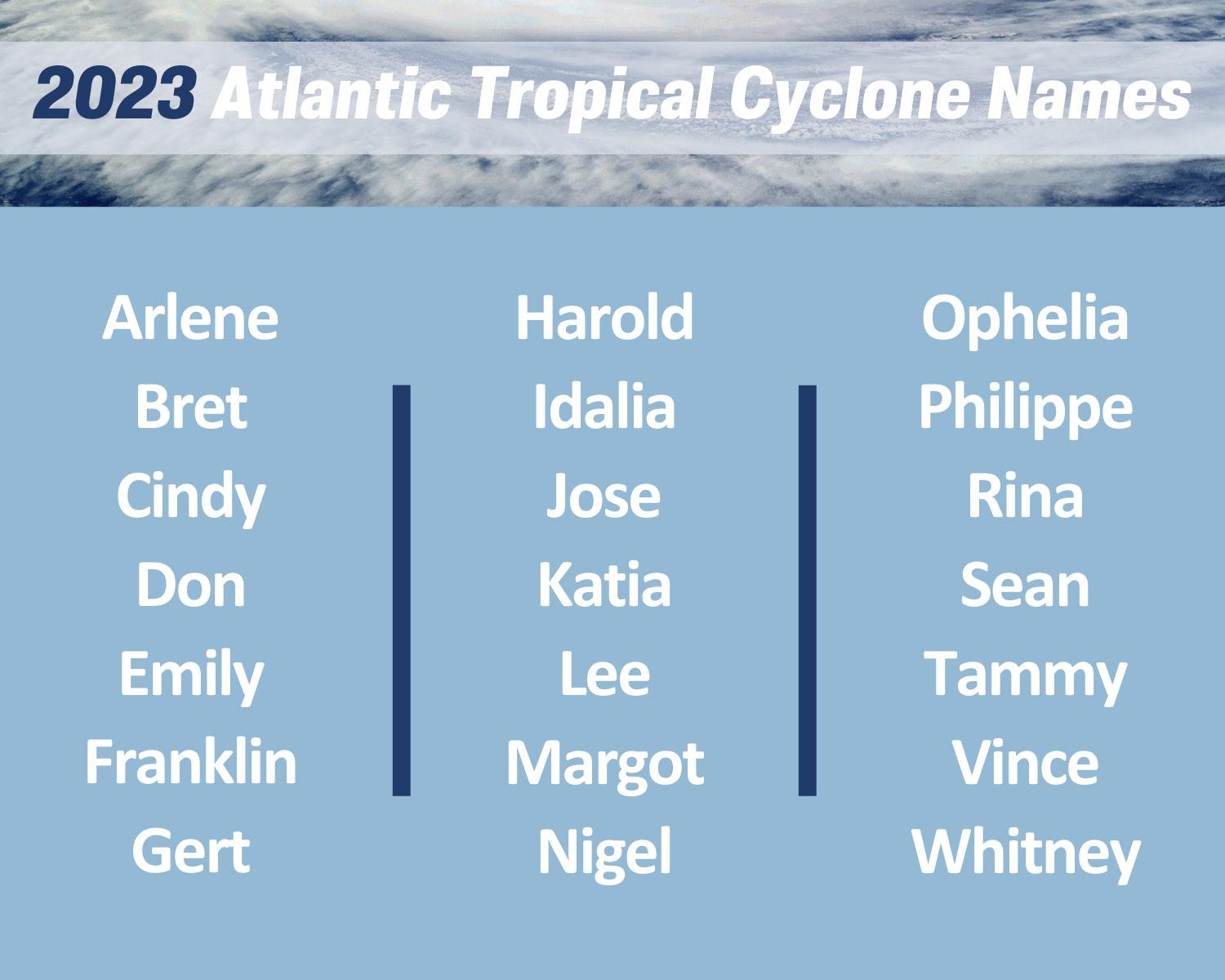
Based on the recently released Atlantic hurricane season outlook by the NOAA, which spans from June 1 to November 30, it has been determined that there is a 40% likelihood of experiencing a near-normal season, a 30% likelihood of an above-normal season, and a 30% likelihood of a below-normal season. This forecast provides valuable information for individuals and organizations living or operating in areas that are prone to tropical storms and hurricanes, allowing them to make informed decisions and take necessary precautions to mitigate any potential risks or damages.
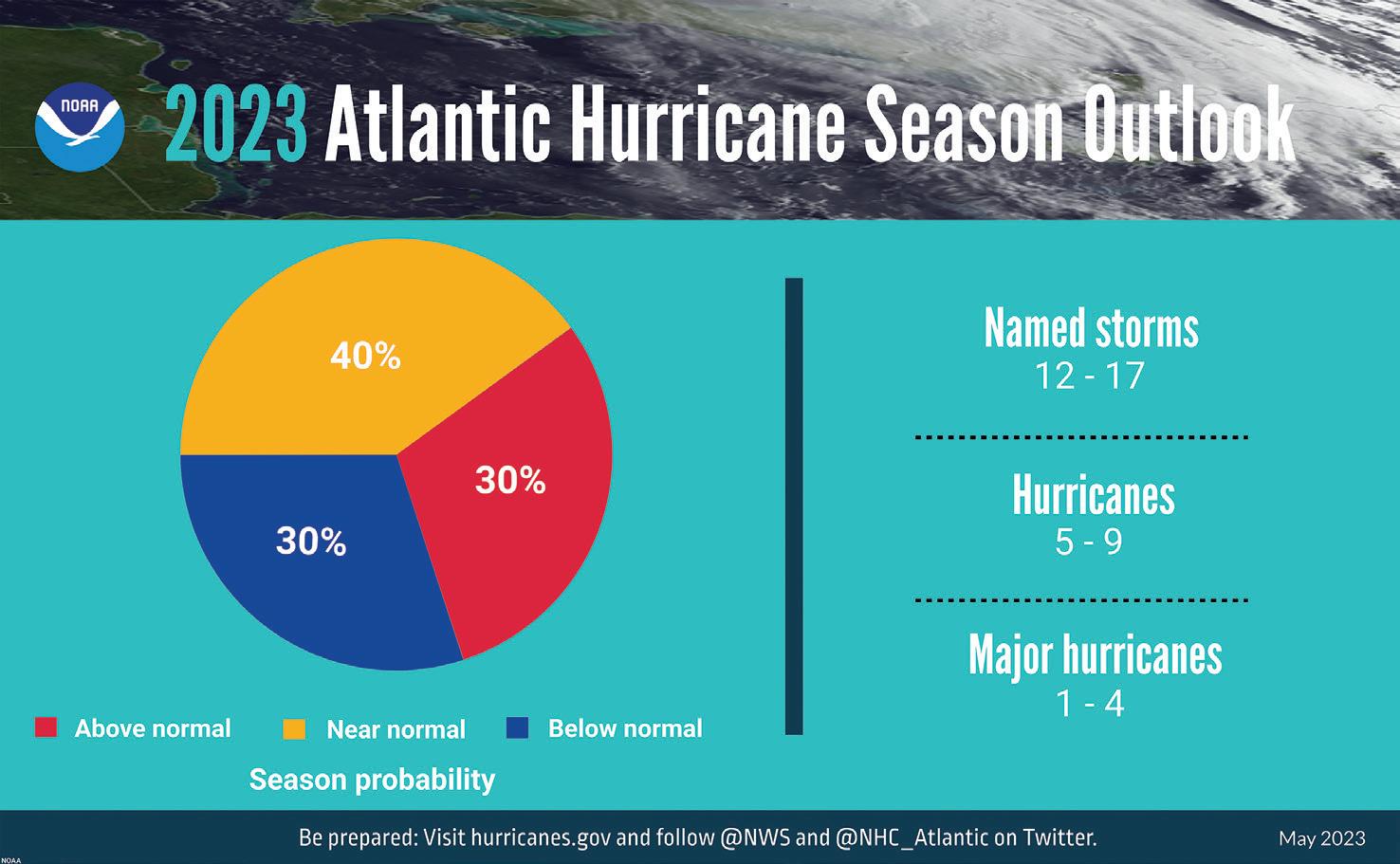
The NOAA is forecasting that there is a possibility of 12 to 17 named storms occurring in the upcoming period. These storms are expected to exhibit wind speeds of 39 mph or higher. Additionally, the forecast predicts that out of these storms, 5 to 9 could potentially intensify into hurricanes, characterized by wind speeds of 74 mph or higher. Furthermore, there is a chance that 1 to 4 of these hurricanes could attain the category 3, 4, or 5 status, which is marked by wind speeds of 111 mph or higher.
FROM WOTUS PAGE 1
state law has an expansive definition of wetlands, so only federal wetland protection has been modified. Not a single wetland in Florida loses all protection because of the Sackett II decision.
What happens to Florida’s 404 wetland program?
Florida’s 404 wetland permitting program delegated by EPA to the Florida Department of Environmental Protection (FDEP) likely will not change in the short or medium term.
FDEP adopted the federal Navigable Waters Protection Rule (NWPR) for determining what is a federal jurisdictional wetland under the 404 permitting program, as NWPR was the federal wetlands rule in effect at the time the program was delegated to Florida.
Federal law allows states 12 months from the time the EPA promulgates a new wetland rule to adopt that rule in delegated programs. That law spared Florida’s regulated community the whiplash of changes to the interpretation of jurisdictional wetlands triggered by EPA’s decision to disregard NWPR and promulgate a new
Based on the latest predictions, it has been forecasted that the upcoming Atlantic hurricane season will exhibit a relatively lower level of activity as compared to the preceding years. The anticipated outcome is primarily attributed to the presence of opposing factors that have the potential to either impede or promote storm formation. Consequently, the current forecast indicates a hurricane season that aligns within the normal range, thereby minimizing the likelihood of catastrophic weather events. ●
set of wetland rules drafted by the Biden Administration.
Sackett II should cause the EPA to propose new wetland rules or seek authority from Congress to regulate additional wetlands.
In the meantime, FDEP will continue to regulate wetlands under state law and should continue to use NWPR in the delegated 404 program until a new rule is promulgated by EPA.●
Tampa Bay Watch launched an Oyster Shell Recycling Program in 2022 by partnering with local restaurants in the Tampa Bay area. The pilot year was a success in that nearly 50,000 pounds of shells were recycled.
Recycled shell is delivered to a depository to cure for a minimum of three months to ensure that no non-native organisms or disease is introduced to Tampa Bay waters.
The waste oyster shell is used to create Vertical Oyster Gardens (VOGs) which are suspended from docks to create a hard substrate to which juvenile oysters can attach.
The shells will also create oyster shell bars to restore lost habitat systems to the bay, prevent further erosion of the shoreline, and improve water quality through natural biological filtration.
The Eastern Oyster (Crassostrea virginica) is an organism of critical importance in estuaries throughout coastal U.S.
Oysters serve a number of beneficial ecological functions from shoreline stabilization to providing habitat for a number of commercially and recreationally important fish species.
Oysters are vital for the overall health of Florida’s estuaries. As a filter feeder, an adult oyster is capable of filtering up to two gallons of water per hour. With
Waste oyster shells are used to create Vertical Oyster Gardens suspended from docks to create a hard substrate where juvenile oysters can attach and create oyster shell bars to restore lost habitat systems, prevent further erosion of the shoreline, and improve water quality.
Founded in 1993, Tampa Bay Watch is dedicated exclusively to the stewardship and restoration of the marine and wetland environments of the Tampa Bay estuary encompassing more than 400 square miles of open water
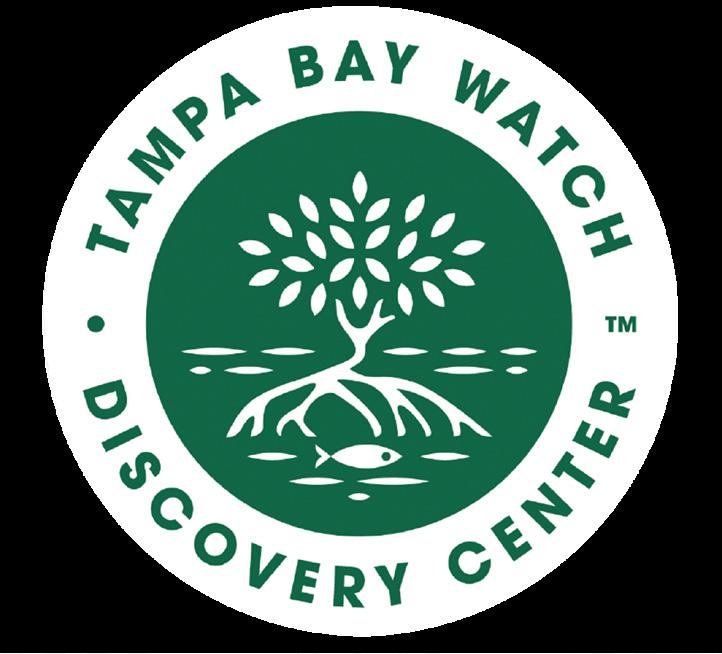
healthy populations that can number in the thousands or more, oyster reefs can have a profound effect on water quality.
Oyster shell is an important tool used to help increase available substrate for fu-
and 2,300 square miles of highly developed watershed. Tampa Bay Watch involves more than 10,000 youth and adult volunteers each year in hands-on habitat restoration projects.
ture oyster populations. In the past, when oyster shell was more readily available, it was used to fill shell bags and then installed in oyster reef projects throughout the bay.
This shell has become increasingly difficult to obtain for large-scale projects. Much of the shell is being deposited in landfills or being shipped out of the region. It is the desire of Tampa Bay Watch to capture the shell before it is shipped out of the region or destined for any landfills.
By implementing a large-scale oyster shell recycling program, the organization hopes to interrupt this process and deploy the oyster shell back into the bay using a number of different methods which will result in an increase in available oyster habitat and exponentially increase oyster populations.
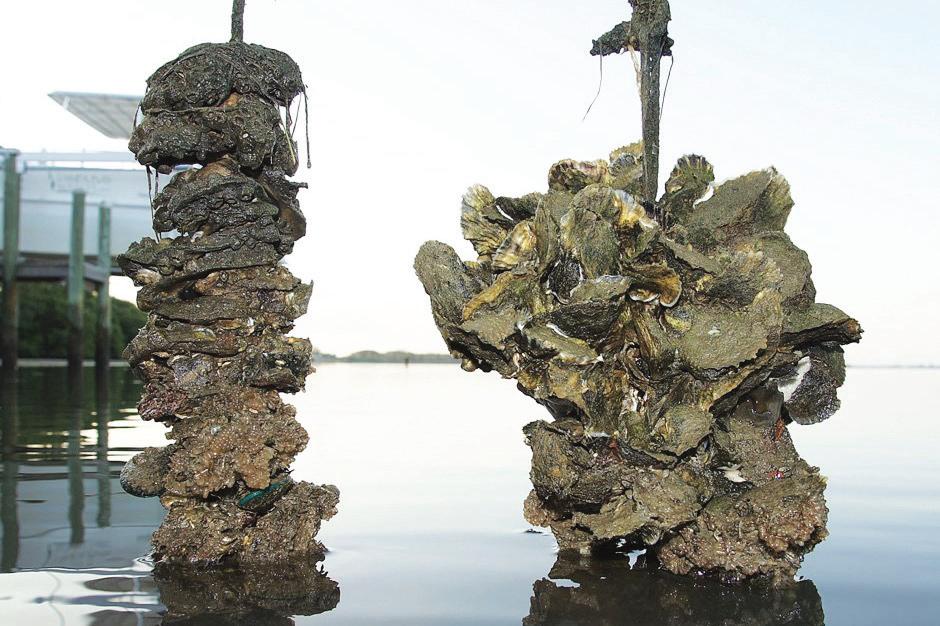
In January 2023, Crabby Bill’s St. Pete Beach and Crabby Bill’s Indian Rocks Beach joined the program, so Tampa Bay Watch hopes to double the results of the oyster shell recycling program this year.
A special thanks to the sponsors of the Oyster Shell Recycling Program: Neptune Flood Insurance and Duke Energy Foundation.●
The proposed overhaul of Texas’ power grid could lead to higher electricity bills for residents. The Public Utility Commission unanimously voted to create a secondary market that would benefit natural gas power plant operators by awarding credits for generating electricity during peak demand and limited reserves.
Despite opposition from ERCOT’s (Electric Reliability Council of Texas) independent market monitor and state senators the changes were approved. Opponents argue that the plan is costly to consumers and will not produce the desired results of permanently strengthening the grid.
The city of Austin has passed resolutions mandating the use of lower-carbon concrete in future construction projects.
The move follows partnerships between the city and low-emission concrete producers, including CarbonCure Technologies, resulting in over a million cubic yards of lower-impact concrete being used in various projects such as the Sarah M. & Charles Seay Building at the University of Texas and the new Lake Austin HEB.
These two projects are estimated to have prevented the release of almost 104 tons of carbon dioxide into the atmosphere.
Concrete production accounts for about 7% of global emissions. CarbonCure and similar companies mitigate the carbon footprint of concrete by incorporating recycled carbon dioxide into the mix, using
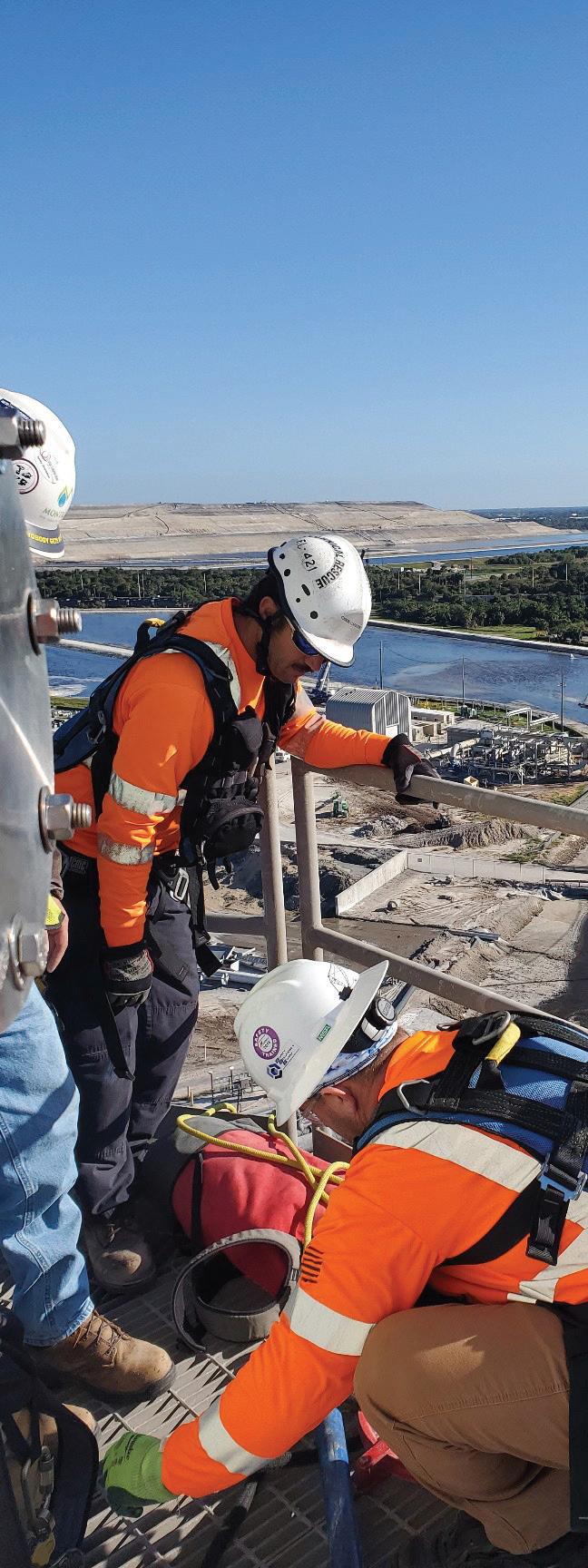
a process that transforms the greenhouse gas into mineral form even after demolition.
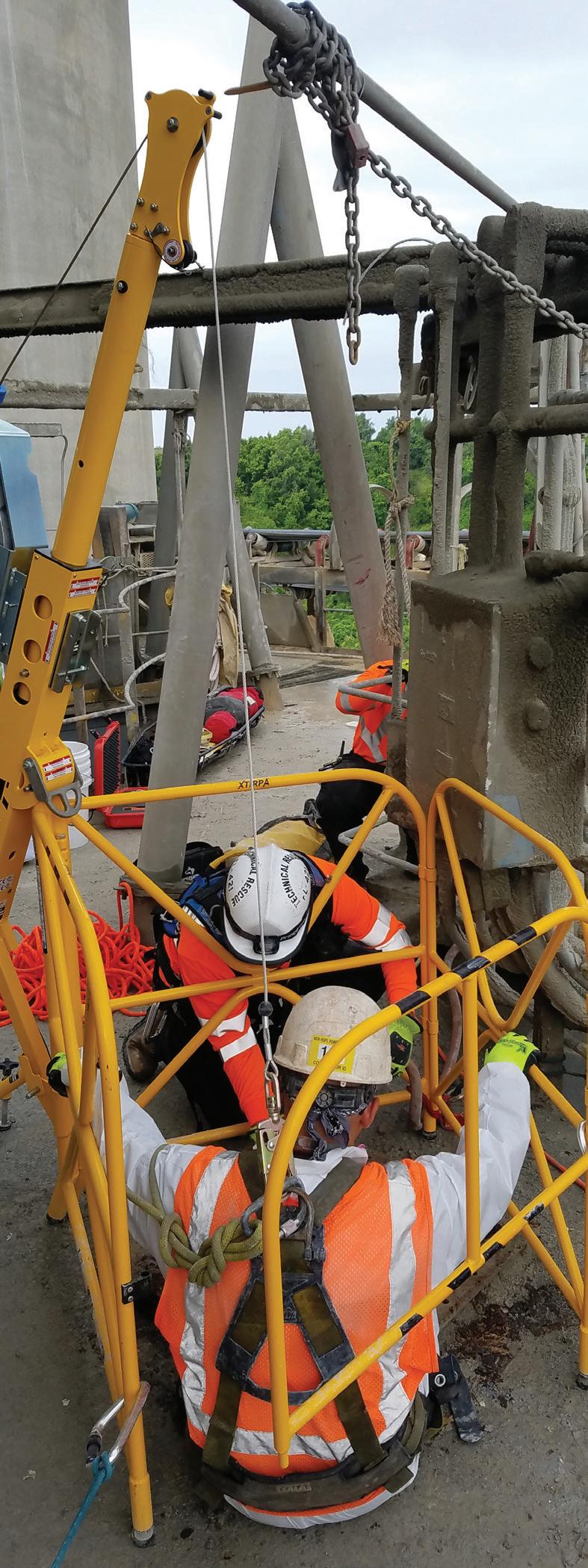
Siemens, a German-based tech company, has announced plans to open a new electric vehicle (EV) charging manufacturing facility in Carrollton, Texas.
The facility will produce electric vehicle charging stations for both residential and commercial use and is expected to create +/- 100 jobs in the area.
This move comes as part of Siemens’ efforts to expand its EV charging infrastructure in the U.S. The facility will occupy a 50,000 square foot building and focus on manufacturing Level 2 EV chargers. The new facility will serve as a hub for the company’s EV charging station production in North America.
Houston based Occidental Petroleum, looking to transition towards becoming a carbon management company, began construction on its first direct-air carbon capture hub located in Ector County, West Texas.
It has the potential to capture up to 1 million metric tons of carbon dioxide every year.
This is part of Occidental’s goal to establish 100 such facilities globally by 2035. The facility is set to launch in 2025 with a starting capture capacity of 500,000 tons of CO² annually.
SolarCycle, a company operating in Odessa, is engaged in solar panel recycling that involves a process of “upcycling” converting discarded PV cells into new, higher-value products.
The company can extract recyclable aluminum, copper, and silver; use the cells’ silicon to make new solar panels; or reprocess the silicon carbide, a material used in the production of semiconductors.
Currently, only 1% of the world’s solar panels are recycled; the majority of those are in Europe, where regulations make it mandatory for manufacturers to recycle photovoltaic waste.
SolarCycle is one of only five companies in the U.S. listed by the SEIA as capable of providing solar panel recycling services.
The industry is still very much in its infancy, challenged by devising a profit producing business model. SolarCycle currently charges $18 per panel received, as opposed to $1-$5 charged by landfill companies.
The company estimates that recycling each panel avoids the emissions of 97 pounds of CO².

Oil and gas companies in Louisiana have allowed more than 27 billion cubic feet of methane to escape from leaks, flaring, and venting since 2019, according to a new analysis by Synapse Energy Economics.
The report, commissioned by the Environmental Defense Fund and Taxpayers for Common Sense, suggests that the fossil fuel industry is both wasteful and a bigger air polluter than previously thought.
The amount of methane released by the industry in Louisiana is enough to meet the natural gas needs of more than half of the state’s homes.
Methane is a potent greenhouse gas, with a warming effect that is approximately 84 times more powerful than CO² over a 20year period. The report calls for stronger regulations to reduce methane emissions from the oil and gas industry.
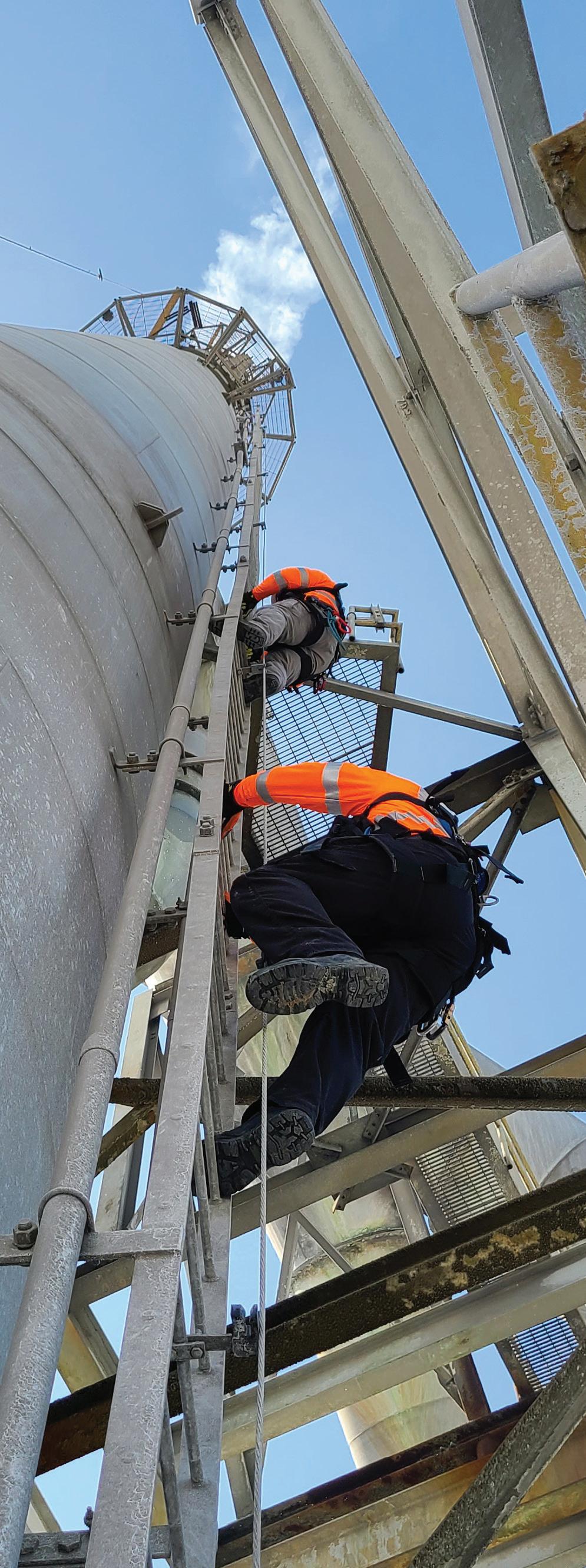
Entergy New Orleans has proposed a $1 billion plan to storm-harden the city’s electrical grid.
The plan includes burying power lines, strengthening poles and equipment, and building a new substation and transmis-
sion lines.
The company states the plan is necessary to protect against increasingly frequent and severe storms, and could reduce the number of power outages experienced by residents during extreme weather events.
The proposal comes after criticism of the company’s response to Hurricane Ida, which left many New Orleans residents without power for days. However, the plan has also faced criticism for its potential cost to ratepayers.
The company has stated that it will seek funding from the Federal Emergency Management Agency (FEMA) and other sources to offset the cost.
Canadian Company Invests
$75 Million for Rare Earth Facility
Ucore Rare Metals Inc, a Canadian company that signed a deal with Louisiana Economic Development to set up a rare earth metal processing site, has announced that it will open in Rapides Parish.
Go Online for More Information on Around The Gulf

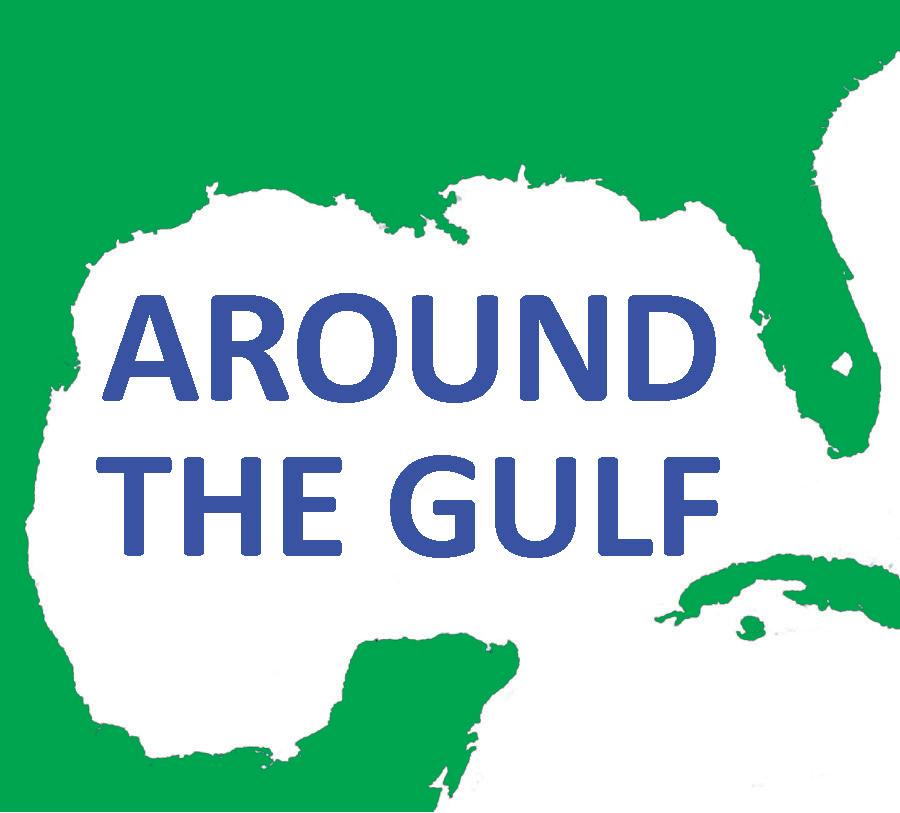
The move will create 100+ jobs, with the company investing $75 million to establish the first modern technology rare earth element separation and purification facility in North America.
The plant will be located at an 80,800-square-foot brownfield facility in Alexandria and is expected to create hundreds of indirect jobs in central Louisiana paying an average of $50,000/year.
The Louisiana Strategic Metals Complex will establish a U.S.-based supply chain of rare earth oxides required to manufacture electric vehicle motors, wind turbine generators, and a variety of consumer goods, including smartphones and power tools.
The plant will help to meet the growing demand for rare earth metals, which are essential in the production of green technologies and consumer goods.
University of New Orleans Wind Energy Hub Awards Inaugural Scholarships
To address an expected shortage of wind energy workers, the University of New Orleans has created the Louisiana Wind Energy Hub and will offer a curriculum highlighting issues of offshore wind structure design, project management, and ocean engineering.
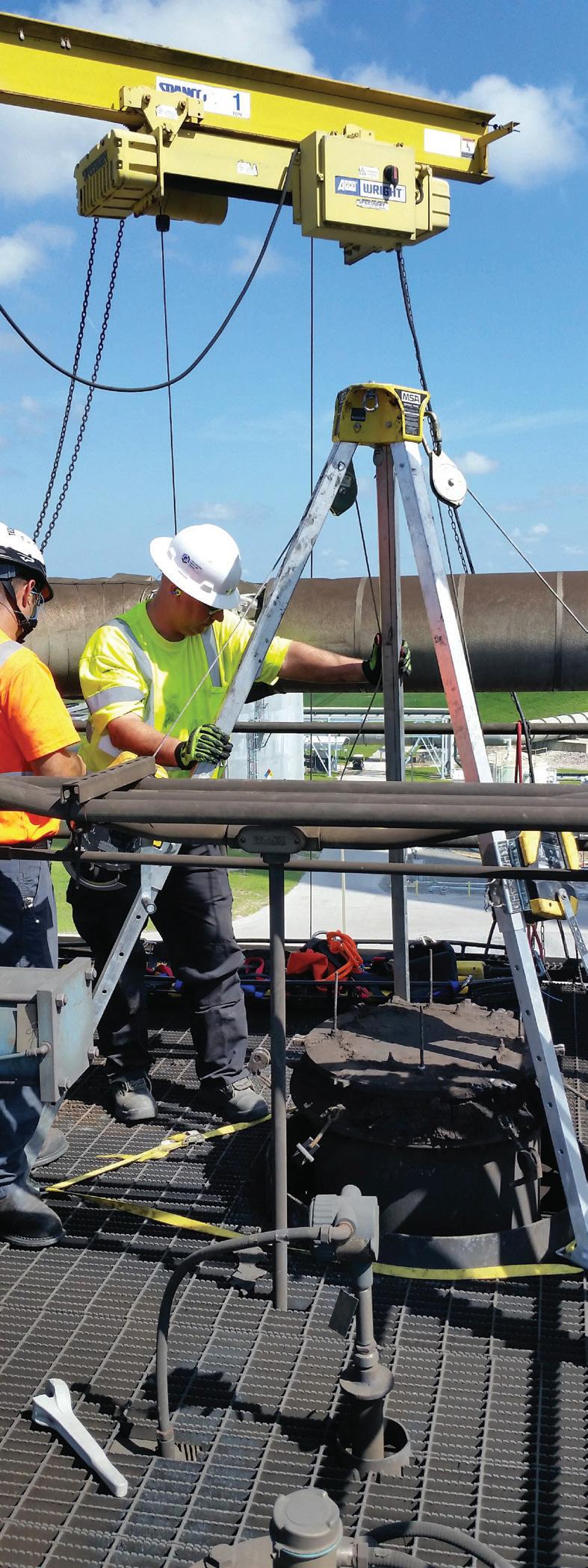

Most Florida residents likely would be surprised to hear a California resident say that earthquakes are not a big deal in the Golden State.
Just like most Californians would be surprised to hear Floridians say that hurricanes are not a big deal in the Sunshine State.
Yet, as surprising as it may seem, I have heard both — and heard it often. In fact, this “denial of disaster” is a widespread phenomenon that I have described extensively (and illustrated with some dumbfounding examples) during the multiple seminars I have given on my book “The Blessings of Disaster” in the past few months.

Adding to the list, in early May, after one such webinar to a Floodplain and Stormwater Managers Association, a member of the audience told me that his sister is absolutely convinced that hurricanes do not strike as far north as Jacksonville, where she lives. And not even her brother (whom, I remind you, is a floodplain manager) could make her change her mind — because, in her lifetime, she has never seen a hurricane up close.
Denial of disaster is a part of human nature. It won’t happen here, simply because it can’t. It always happens elsewhere — to
others. We all experience that denial, to some degree, and it takes a conscious effort to counter that instinct.
Denial of disaster (as ill-advised as it may be) typically arises for a number of wellknown reasons too long to outline here (and better addressed in a book). But let’s not confuse beliefs with facts.
The fact that none of the folks who survived the 1906 earthquake that leveled San Francisco can testify today that it happened (do the math), does not mean it did not happen.
Not only did it happen, but it will happen again. Likewise, Category 3, 4, and 5 hurricanes have hit Florida multiple times, and will hit again. It is never a matter of “if,” but rather a matter of “when.”

The fact that destructive earthquakes and hurricanes of a century ago have been forgotten is irrelevant.
The fact it has not happened yet in somebody’s lifetime, is irrelevant. It certainly was for the folks in Fort Myers Beach, until last September. It certainly was for the folks in Mexico Beach until October 2018.
When a hurricane with 135 to 150 mph winds struck Miami in 1926, a 10-foot-tall storm surge crossed the barrier island and
reached Miami, extending over many city blocks, 372 people died, more than 6,000 were injured, and damage reached $164 billion in today’s dollars (https://www. weather.gov/mfl/miami_hurricane).
This is not trivial considering that only 100,000 people lived in the greater Miami area at the time — the state’s population then was 20 times less than it is today and about 90% of its population was in North Florida and not living on barrier islands).
Again, evidently, none of those who survived it are alive today. Is it forgotten? How many are ready for a repeat of this event? How many acknowledge that it could happen to them, and how many translate this acknowledgment into some actions that will make them able to weather the storm (pun unintended)? To be (ready) or not to be (ready), that is the question.
As Florida embarks on another hurricane season, nobody can pinpoint where and when a Category 3, 4, or 5 will strike.
Hurricanes are turbulent processes, and as such are only predictable in a probabilistic sense — something that unfortunately does not connect instinctively with human nature.
Thankfully, local TV news stations will
start to regularly remind Florida residents (many of whom are new to Florida, having never lived in coastal areas before) to get ready, to get hurricane insurance, flood insurance, wind-resistant windows or shutters, and more.
And most importantly, to follow evacuations orders when issued — which is wise.
If the ocean is planning to trash your living room, don’t get your bathing suit; get out!
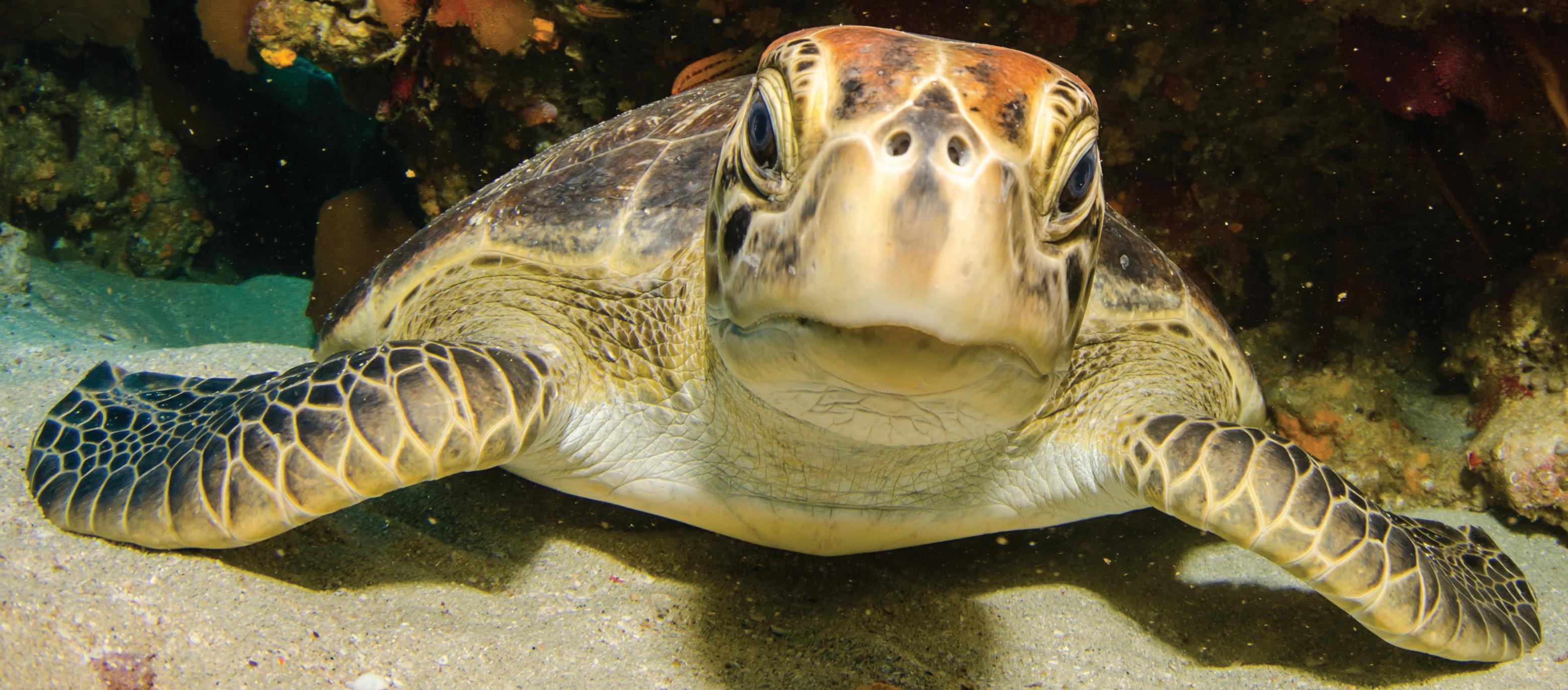

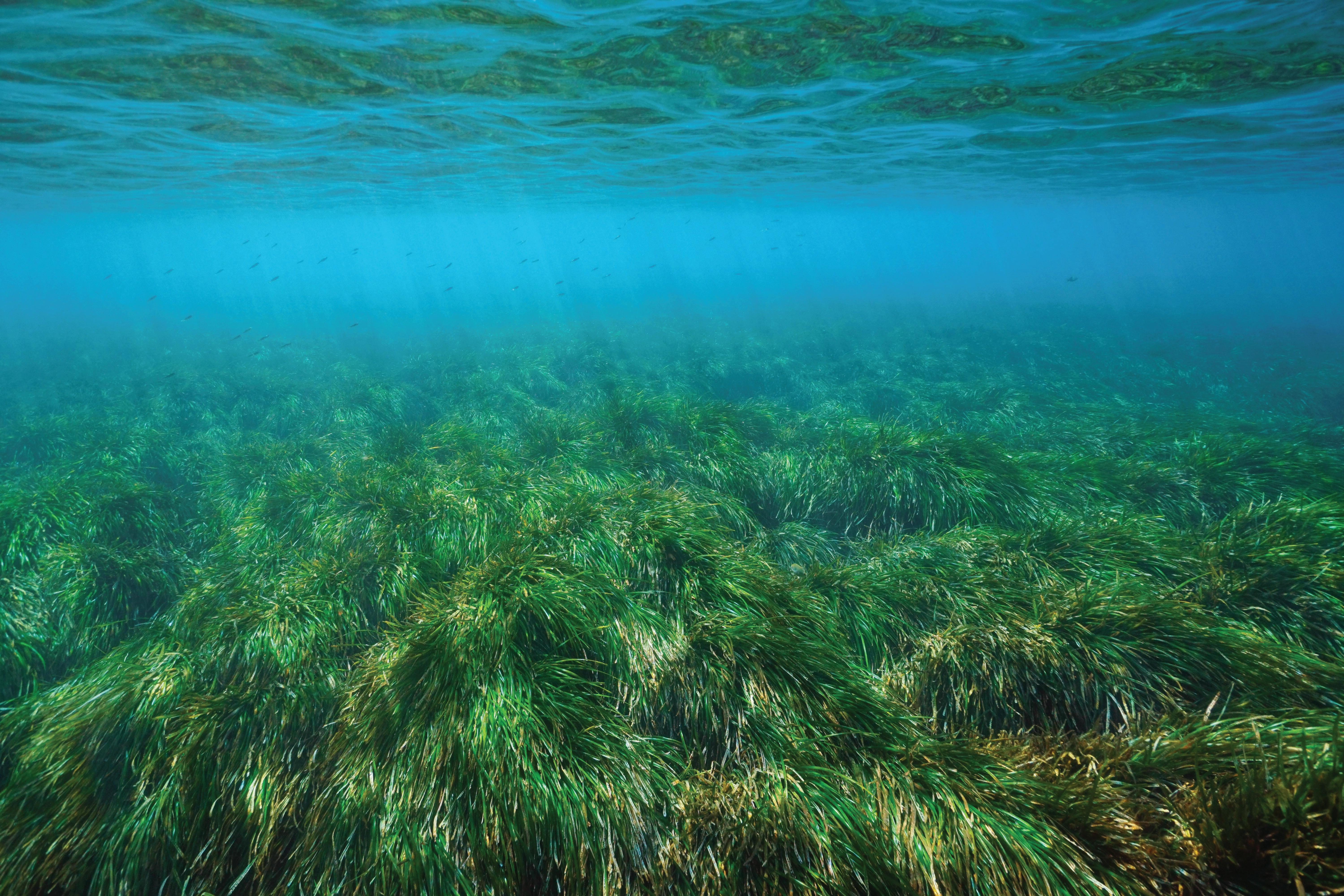
Of the total who decide to “ride out” the Cat 3s, 4s, and 5s there are always fewer who are lucky enough to survive; it’s not worth the bragging rights to be in denial of disasters.●
Michel Bruneau, Ph.D., P.Eng., Dist. M. ASCE, F.SEI, F. CAE, is SUNY Distinguished Professor at the University at Buffalo, and author of The Blessings of Disaster: The Lessons That Catastrophes Teach Us and Why Our Future Depends on It He has spent decades developing engineering strategies to enhance the resilience of infrastructure. He is Director Emeritus of an NSF-funded Engineering Center that focused on enhancing the disaster resilience of communities and a

TheOrlando Utilities Commission (OUC) has been recognized by Sierra Club this year for their commitment to reaching 100% Net Zero CO2 emissions by 2050.
The OUC earned a “B” rating in Sierra Club’s first annual report issued in 2021.
OUC plans to reduce emissions to 50% by 2030 and 75% by 2040.
The Sierra Club surveyed 77 utilities for this year’s report card. The OUC is the highest scoring utility in Florida and one of only two Florida utilities to earn a “B” rating.
“Balancing sustainability with reliability, resiliency, and affordability is our constant focus,” said Clint Bullock, the OUC’s General Manager & CEO. “As with previous findings, this latest report shows we are on the right course for a clean energy future.”
The OUC is undertaking a number of steps to reach their zero emissions goal.
The utility purchased the Osceola Generating Station (OGS), a 510-megawatt (MW) simple-cycle natural gas-fired power plant to facilitate their plan to phase out and retire Stanton Energy Center’s (SEC) coal-fired Unit 1 by 2025.
The SEC’s Unit 2 will be converted to natural gas by 2027. The utility anticipates
the OGS will be fully operational by 2025, assuming its role to mitigate solar production fluctuations maintaining system-wide electric reliability.
The OUC developed an Electric Integrated Resource Plan (EIRP) and is implementing their resulting 30-year clean energy roadmap that includes recommendation to significantly reduce the use of coal by 2025 and to eliminate it entirely by 2027.
The Solar SunRisers are the seven utilities exhibiting the highest solar ambition as demonstrated by increase in watts per customer solar ratio between the base year (2021) and the four-year forecast (2025).
SACE issues an annual Solar in the Southeast report evaluating emissions trends for utilities across the Southeast. The 2022 report indicates OUC is on track to increase its solar watts per customer by 1,333 to reach 1,932 watts per customer by 2025, the most of any electric utility in Florida.
“Our designation as a ‘SunRiser’ is a
testament to the innovative spirit that characterizes our team, said OUC General Manager and CEO, Clint Bullock. “I am very proud of our team’s shared focus to reach net zero CO2 emissions by 2050.”
The OUC has committed $420 million to increasing its solar energy footprint, including the opening of two, 74.5 MW solar farms in 2024. By 2025, the OUC’s solar energy capacity is projected to produce 496 megawatts (MW), enough power for 90,000 typical Florida homes.
To help assure the reliability, the OUC announced an agreement to explore deployment of a Malta Inc. long-duration energy storage power plant as a reliable and commercially viable solution to achieve the utility’s net-zero carbon emission goals. Malta’s storage solution converts excess electricity into thermal energy which is stored in salt and coolant.
Pairing Malta’s energy storage system with the OUC’s increasing investment in solar energy generation should help meet their
carbon-reduction goals.
Malta’s utility-scale 100+ megawatt system provides more hours of energy storage than lithium-ion batteries and provides energy storage diversity.
The increased duration power plant has the potential to ensure grid reliability for renewable energy resources, like solar.
When needed, the Malta plant regenerates gigawatt hours of electricity for residential and commercial use.
Malta, Inc. developed the 100 megawatt Zero-Carbon Power Plant, as a like-forlike replacement for fossil fuel-fired plants that deliver on-demand clean energy 24/7.
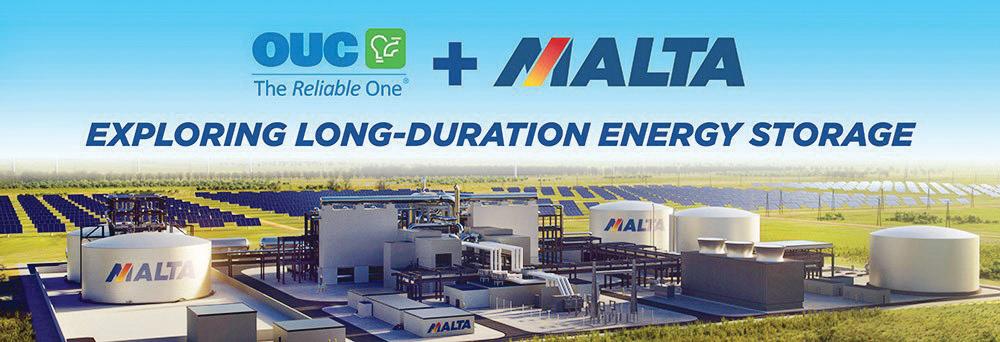
The Malta plant will store electricity as thermal energy from eight hours to eight days or longer, later returning it to the grid to meet hourly, daily, and weekly needs. The system also provides clean heat.
The Malta power plant would be situated at the OUC’s Indian River Plant in Brevard County.
“Long-duration energy storage is vital to the OUC’s clean energy plans and our commitment to significantly reduce CO2 emissions. Malta’s innovative energy storage solution has the potential to help us reduce our CO2 emissions and provide a cleaner, greener energy future for our customers,” said Clint Bullock.●
Ten years ago, the Northwest Florida Water Management District first implemented a cost-share program designed to protect the water resources in the largest agricultural area of Florida’s panhandle.
Known as the Precision Agriculture Systems Solution (PASS) program, the project calls for the District to work directly with growers who operate in the contribution area for Jackson Blue Spring, which is about 60 miles west of Tallahassee in Jackson County. The goal was — and remains — to improve the quality of water in the area while reducing water usage.
Since the program’s launch in 2013, 144 projects have been implemented with 83 unique producers to date. In total, these projects have been completed on 69,935 acres.
As part of the PASS program, the District began a cost-share initiative to motivate growers to install technology upgrades that provide increased efficiency with regards to the amount of fertilizer and water used each growing season.
These upgrades focus on improving fertilizer applications, which help reduce the total amount of nitrogen needed without a loss in productivity for crops such as corn, cotton, and peanuts.
Improvements to irrigation systems may include pump upgrades, remote control systems, control panel upgrades, flow meters, end gun shutoffs, and more.
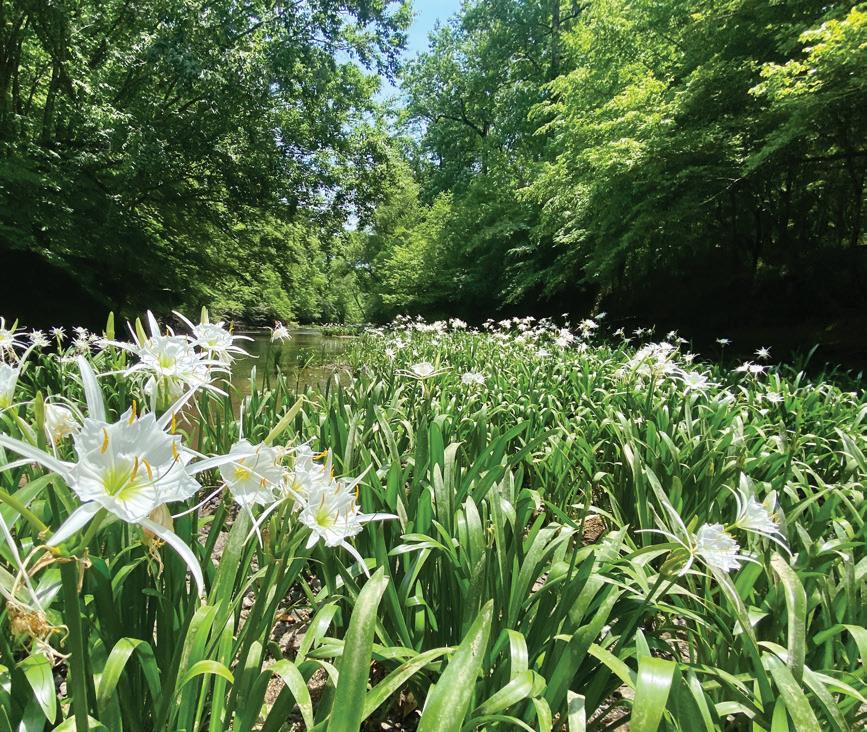
One key reason for the program’s success is in the cost-share process. The District funds 75 percent of the cost for qualified projects; producers are expected to provide a match up to 25 percent.
Since 2013, the District has contributed
slightly more than $10 million in funding for cost-share projects; growers have contributed nearly $3.7 million. The PASS program has produced results.
Growers who participate in the program say they are saving money by using less water and fertilizer while also seeing increases in production. The District judges the success a bit differently, and points to a savings of about 800,000 gallons of water per day during the average annual growing season (120 days).
The program has also reduced the total amount of nitrogen used in the area by 3.2 million pounds. That means less water is
being withdrawn from the Jackson Blue Spring contribution area and less nitrogen is entering the system.
In 2016, the District added a crop-based rotation project to the PASS program, encouraging producers to plant grasses such as Bermuda or Bahia in place of row crops for two years during a four-year cycle.
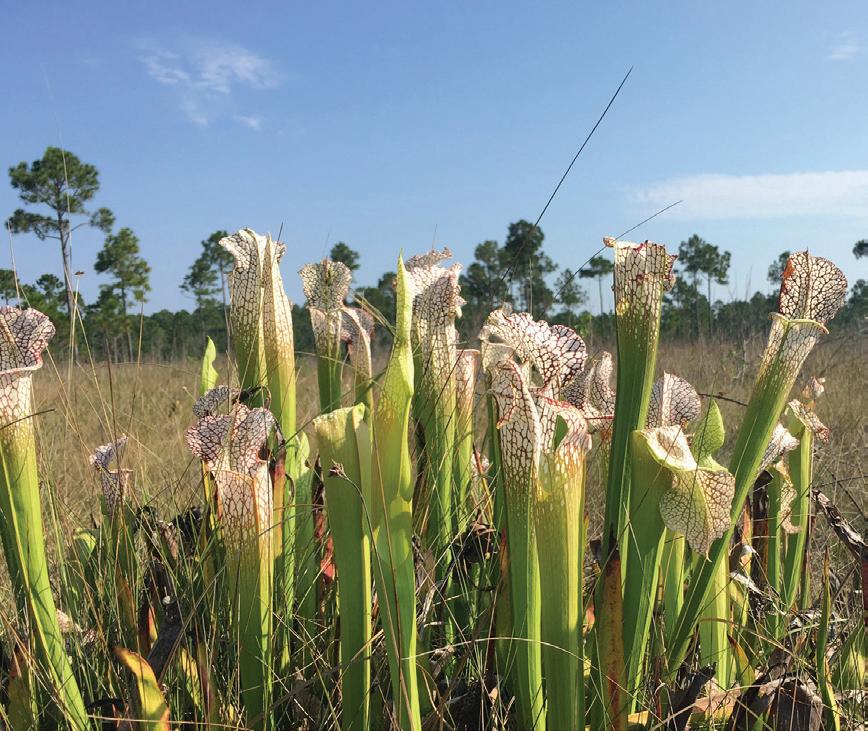
The rotation reduces the amount of fertilizers used and creates a better growing environment when row crops are re-introduced to the land.
The District reimburses producers to con-
vert up to 160 acres of their land to grass. Fencing and other qualifying equipment and tools are also covered under the program with the same 75/25 breakdown. ●
For more information about the District’s PASS program, email public.information@ nwfwater.com
In the mid 1980s, the drive through central Florida was still through rolling hills of orange groves. However, the arrival of Disney’s theme park the decade before was beginning to be felt in the region. Service industry people flocked to the interior of the state. Retirees kept coming as well, and as the beaches became crowded, they moved inland.
Florida was growing at a breakneck pace, adding nearly 3 million people from 1980 to 1985.
In Tallahassee, the political climate was changing as rapidly as Florida was growing during that period. State leaders responded to the state’s rapid population gains with swift growth management and environmental regulations. New processes were added to limit environmental

37th Annual Environmental Permitting Summer School

July 18-21, 2023
impacts and control growth. Even more significant proposals were being considered by the Florida Legislature, including more comprehensive growth management legislation.
Most businesses at the time were unaware or just starting to take notice, and the Florida Chamber of Commerce and other business organizations began to get engaged. For many, it was the first time they needed Tallahassee representation, and it set the stage for frequent skirmishes between business groups and the Florida legislature over these policies.
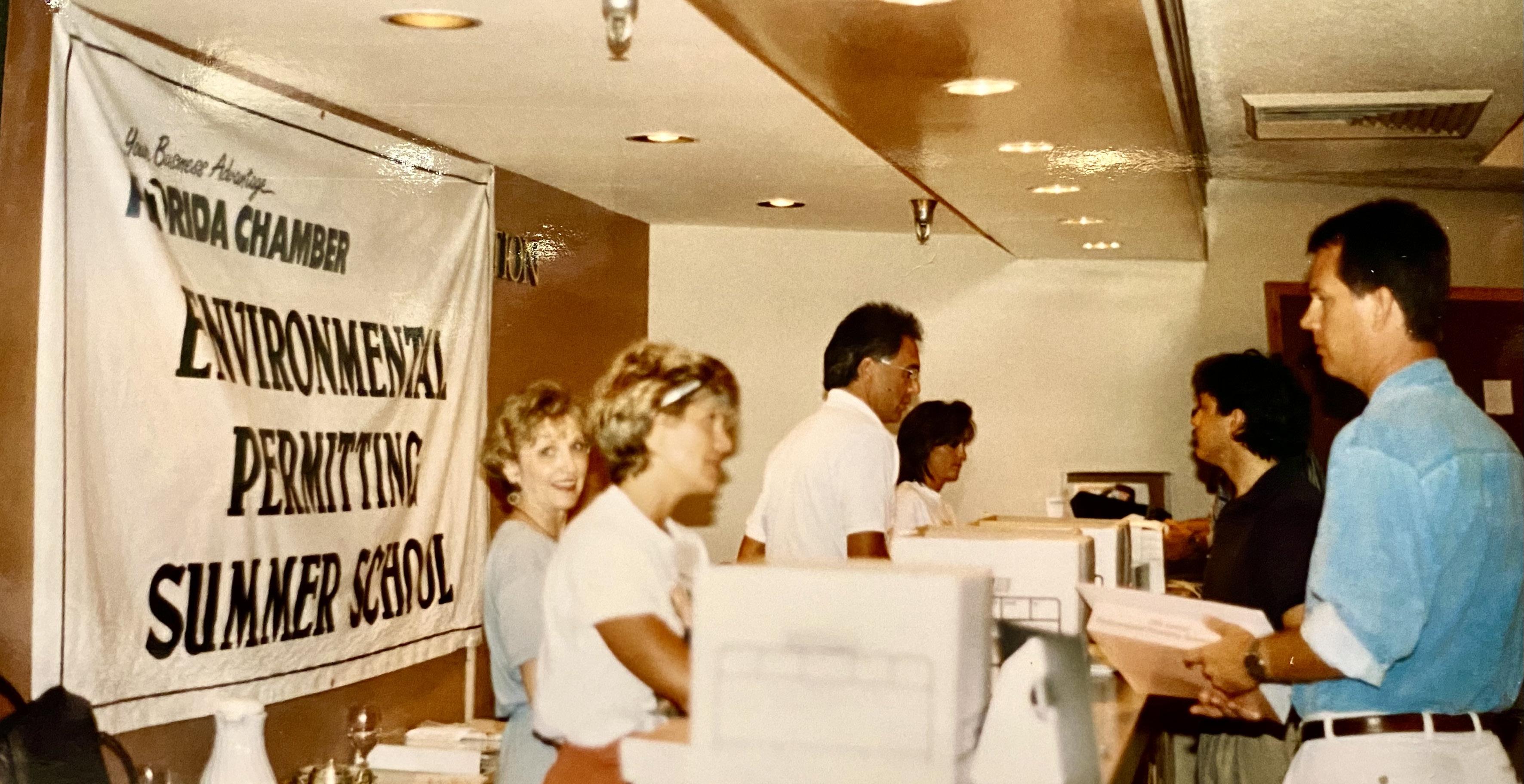
The emerging regulations were overwhelming to many to many businesses and practitioners alike. For example, a single project could require approvals from the Department of Environmental Regulations, Department of Natural Resources, water management district, municipality, county, federal government and the Game and Fish Commission. Regulatory agencies and regulations were expanding quickly, and Florida’s businesses and
industries were struggling to keep up. In July 1983, the Florida Chamber turned to Chuck Littlejohn to represent them on environmental and growth management issues and field members’ questions about Florida’s new regulations. Businesses were turning to technical experts like Littlejohn to navigate the complex regulatory environment. It also helped to hire a former state employee who understood the inside workings of government.
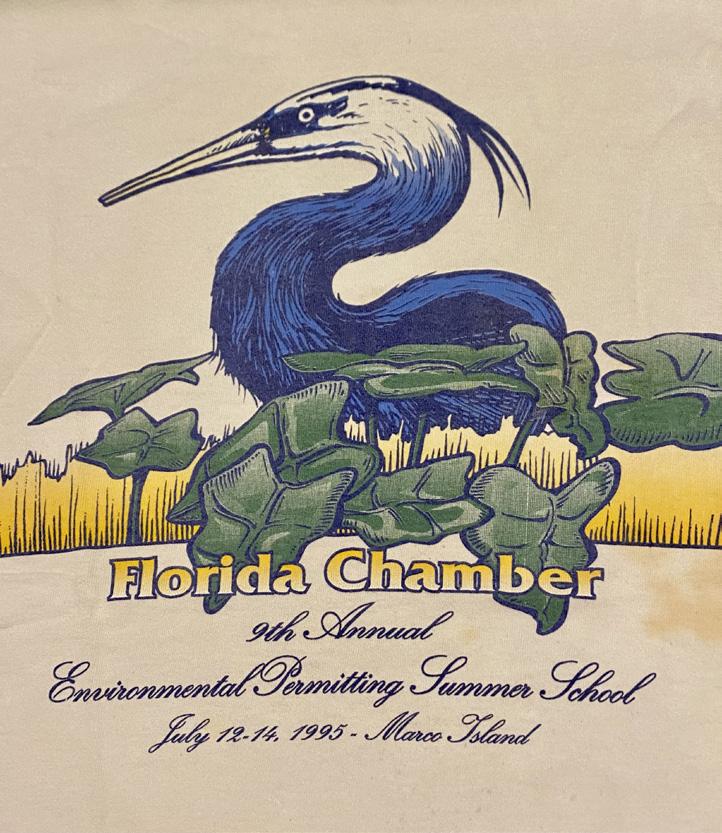
When Florida environmental legislation first surfaced in 1972, Littlejohn was at the University of Florida working on a graduate degree in Environmental Engineering. He was quickly hired by Governor Reubin Askew’s administration to be a part of the newly-formed Division of State Planning. From there, he went to DER as its bureau
Secretary, Florida Department of Environmental Protection
Shawn Hamilton has worked at the Florida Department of Environmental Protection since 2007, where he has risen through the ranks of the department.
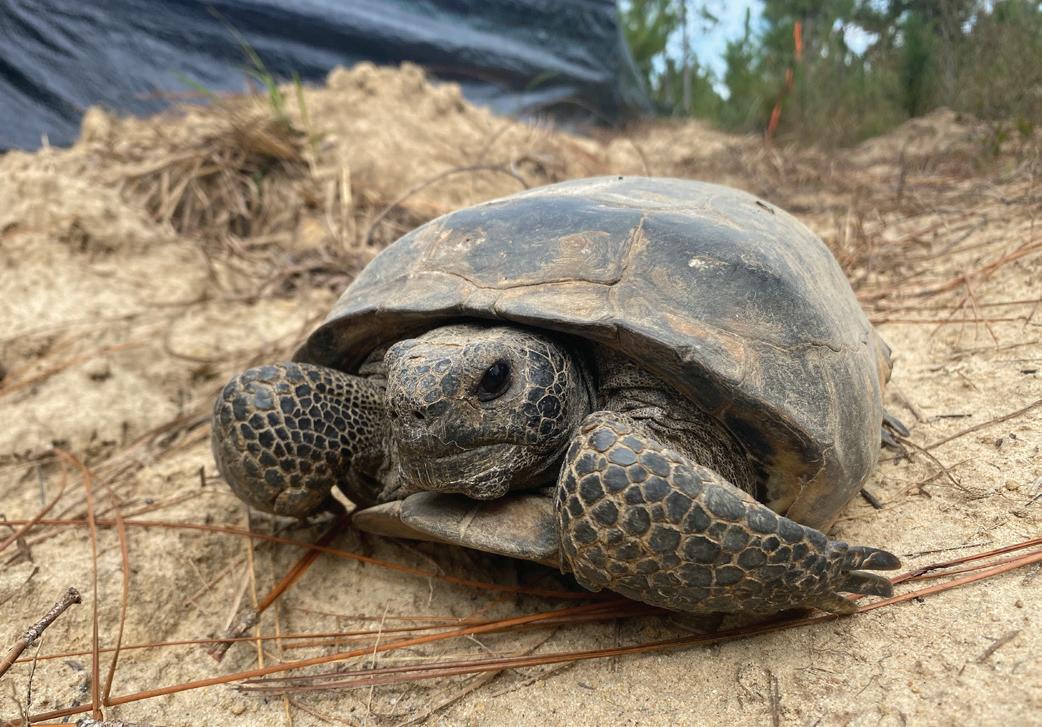
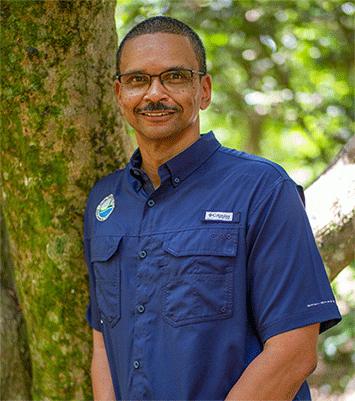
Early in his career he served as ombudsman and public affairs manager in the DEP’s Northwest District Office. He was promoted to assistant district director in 2010 and was appointed district director in 2011, and was subsequently promoted to interim deputy secretary of Land and Recreation in 2020 and formally appointed as deputy secretary in 2021.
Mr. Hamilton has 20 years of experience in the public and private sectors, where he has proven to be an effective and driven leader with the ability to influence and build trusted and constructive connections with community stakeholders, elected and appointed municipal officials, and organizational team members.
He served as the agency’s environmental justice coordinator with responsibility for
providing statewide guidance on sensitive environmental justice issues and was appointed as the principal state liaison for the U.S. Environmental Protection Agency’s Office of Environmental Justice.
industrial emergencies to include Deepwater Horizon oil spill, International Paper Mill explosion, and hurricanes Irma and Michael.
He also led the creation and execution of reoccurring partnership meetings with the U.S. Air Force, U.S. Navy, Gulf Power, Emerald Coast Utilities and Escambia County.
Mr. Hamilton has a bachelor’s degree in computer science from Troy State University with a minor in business. He and his wife Charlene have three sons, Christopher, Brandon and Joshua.
Shawn had provided effective leadership, incident command, and focused recovery during multiple large-scale natural and
The secretary works alongside more than 2,900 full-time and 1,300 OPS employees to protect Florida’s water and natural resources. Along with oversight of the agency’s strategic and executive leadership teams, the DEP’s regulatory programs, ecosystem and restoration programs and land and recreation programs. ●
Westervelt Ecological Services, established in 2006, is dedicated to providing our clients across the United States with mitigation and conservation solutions to meet local, state and Federal requirements.
At the Chamber, Littlejohn quickly found himself immersed in telephone calls from members. He knew he needed help and hired Linda Barrentine (now Dickinson) from the Governor’s Office. Theirs would be a working relationship that would last over 35 years.
Littlejohn began looking for a better way to educate Florida’s businesses. By demeanor, he was a coalition and consensus builder, and his answer was to reach out to representatives from all sides of the issues, including the regulatory agencies, attorneys and engineers, and business groups.
In 1984, Littlejohn pitched a novel idea to the Chamber. Littlejohn would design a series of seminars to cover all aspects of permitting, emphasizing recent changes in environmental and growth management requirements. Introductory and advanced courses would be offered, featuring speakers from throughout the state. The target audience would include Chamber members, but the seminars would be open to anyone interested in state, federal, and local permitting and planning issues.

The Chamber agreed, and in January 1985, the first Florida Environmental Permitting Short Course was held in Tallahassee. Wade Hopping moderated. Special guest speakers were DER Secretary Vicki Tsch-
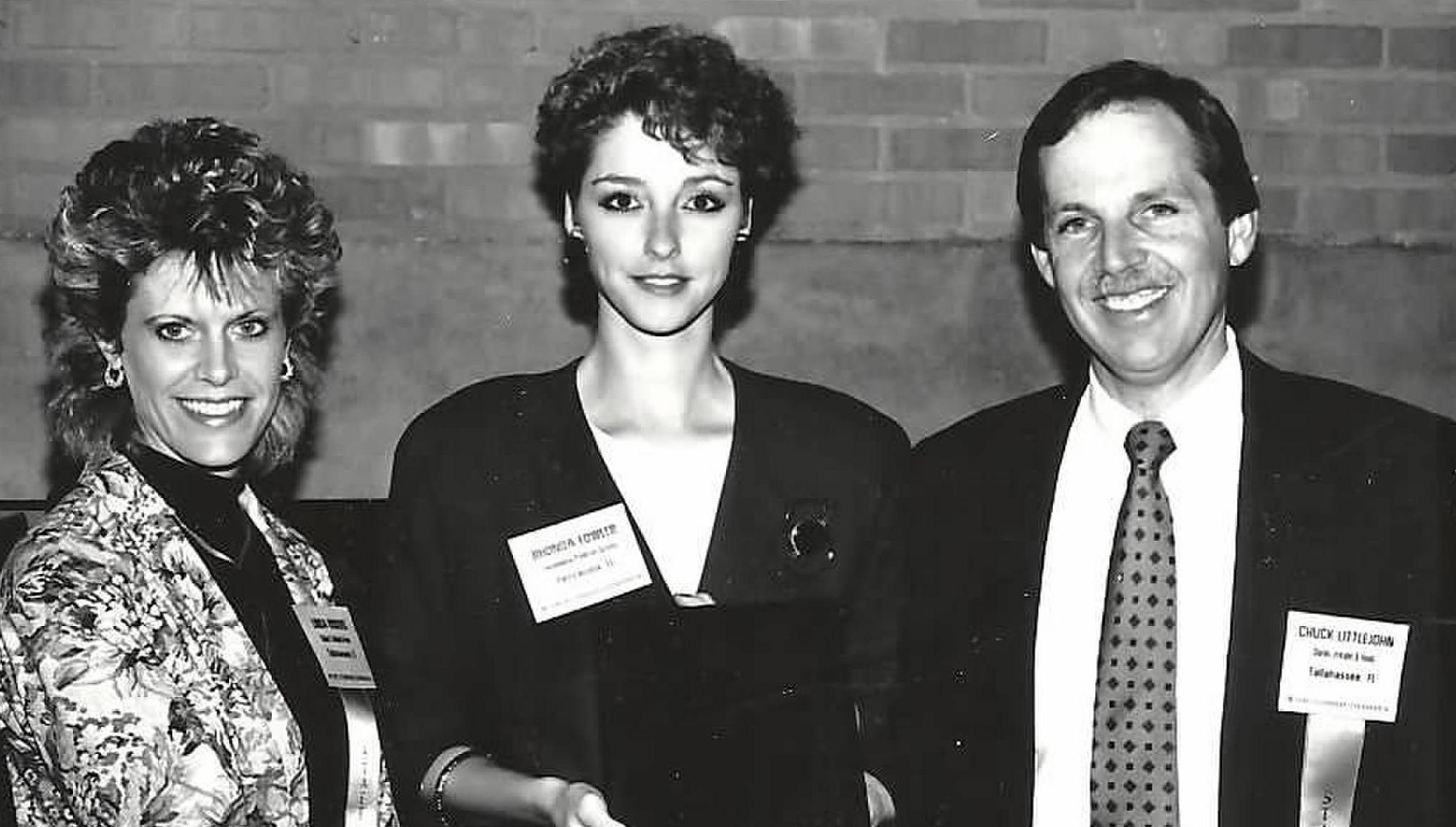
inkel and DCA Secretary John DeGrove.
Later, when South Florida members were calling for another conference downstate, the Chamber suggested Miami. Littlejohn did his own reconnaissance (with a fishing rod!), and the landing of a snook off the beach at the Marco Island Marriott cemented the new location. The first Environmental Permitting Summer School was held in Marco Island in 1987.
Together, Littlejohn and Dickinson designed and produced the conferences. In the days before the internet, the handouts were a significant feature, and attendees kept the assemblage of agency rules, policies and reference materials in their offices for use throughout the year. Every speaker turned in a syllabus, including their talking points. These early reference books were thick, three-ring binders with tabs for each of the many different subjects. These conferences, and the collections of the latest reference materials provided each year, were the only way to keep up with the growing body of laws, regulations, and cases.
I worked for the Chamber then and remember how all the clerical staff met in the conference room in Tallahassee to work all day on assembling these reference books. Every car headed south for Marco was loaded with boxes of these books. Packing was a chore. There was hardly room for our luggage and beach gear.
When asked which was most important - networking or learning, Bill Preston, a speaker at the first short course, said “both.” The conference format was innovative, the content was the best available and very useful to the regulated community and the regulators. He also quickly realized the opportunities to interact with agency personnel. “It was a hell of a place to work on your project,” Preston said.
Today, the primary goal of the Florida En-
STAFF & WIRE REPORTS
TheFlorida Specifier is launching a podcast to bring a fresh perspective on the issues and people environmental professionals want, and need, to know about the most. The new show will be hosted by Brett Cyphers - host of the Water for Fighting podcast - and veteran lobbyist and former Secretary of the Florida Department of Envi ronmental Protection, Ryan Matthews.
“Water for Fighting is at its core a podcast about people and the stories about their motivations and experiences”, says Cyphers. “It has been a popular format, and that won’t change. However, Ryan and I want the Florida Specifier podcast to be more about current policy issues and governance, as well as the people at the center of the action.”
Matthews and Cyphers will be the primary hosts, and they’ll incorporate guests
and guest hosts into the conversations.
Those will include policymakers, lobbyists, non-governmental organizations, stakeholders, and environmental professionals who are close to the action.
“Our team wants to provide environmental professionals straightforward information with a wide range of perspectives”, says Jeff Littlejohn, founder of the revamped Florida Specifier. “As part of the Specifier Online, this new podcast and Water for Fighting represent an integral part of that mission.”
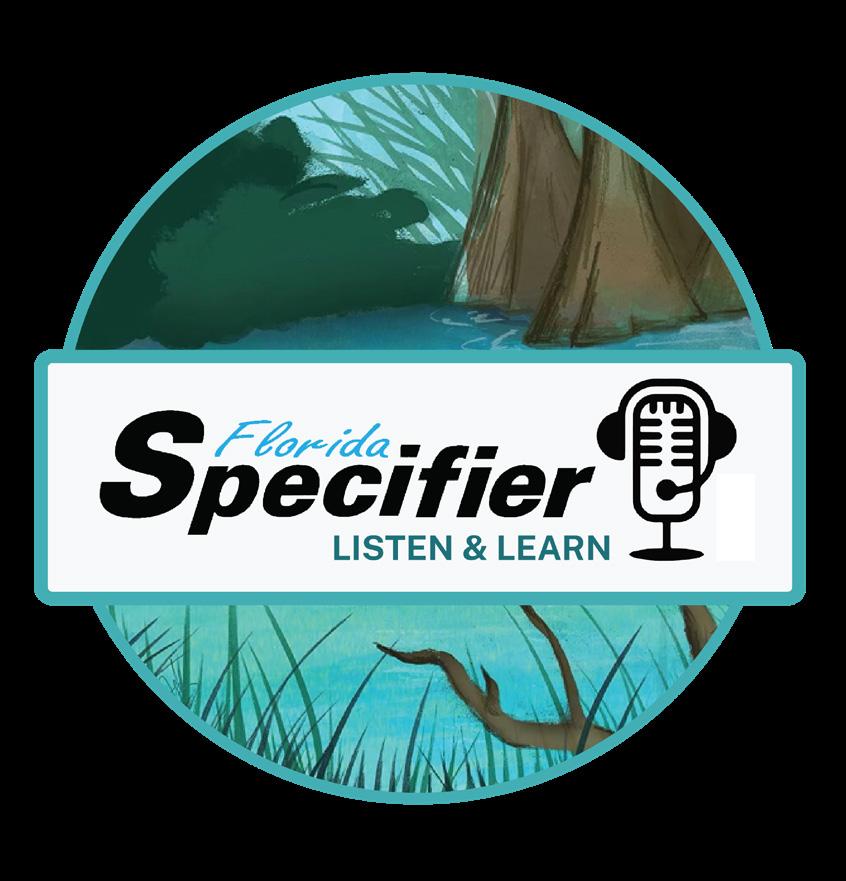
In addition to the scheduled slate of guests and topics, subscribers to the Florida Specifier Online will have access to exclusive interviews and other content not available to the public. Along with Water for Fighting, the new show will be available at FloridaSpecifier.com. ●
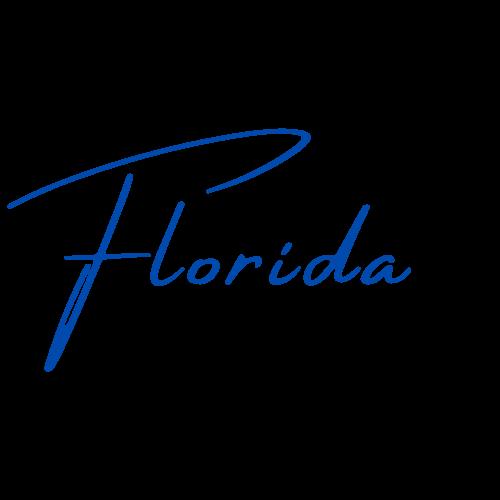

vironmental Permitting Summer School is an ongoing effort to keep the Florida Chamber membership and other interests informed of the numerous environmental, growth management, energy, and resiliency programs, laws and regulations affecting Florida’s citizens and businesses. More than 1,200 attorneys, consultants, engineers, state and local government officials, developers, landowners, and others come together at this event to discuss these issues affecting Florida.
The conference has grown into the largest environmental conference in Florida and still features its original “breakout” format. It has expanded to over 75 unique courses, taught by over 300 of Florida’s most knowledgeable practitioners from every background and corner of the state.
Most importantly, it is still held in Marco Island, just a short stroll away from where Chuck Littlejohn caught a nice snook off the beach almost 40 years ago. ●
STAFF & WIRE REPORTS
Those who participate in the Florida Environmental Permitting Summer School can receive continuing education credits for their respective fields. If your group is not listed, kindly inform us and we will gladly provide you with a general certificate of completion.
FLORIDA BAR – Attendees of the Summer School program will have a chance to obtain Continuing Legal Education credits through the Florida Bar’s Designation Plan. The program has been approved for 20 hours of general credit, and an added 5 credits for attendees of the “early bird” discussion session “B” with regards to ethics (2.5 credits) and technology (2.5 credits). The conference program, which will be given to attendees, will contain the course number and information on how to obtain these credits.
ENGINEERS – Florida Environmental Network, Inc. is an approved provider (0003339) of continuing education credits for registered engineers through the Florida Board of Professional Engineers. By attending the Summer School program, you can earn up to 20 Professional Development Hours (PDHs). If you’re interested in applying for credit, the necessary forms
Since our fathers were involved in the Summer School from its beginning, Ryan Matthews and I have been coming to Marco Island most of our lives. I’ve always known this was a special place, and over the years, I’ve come to appreciate this conference as a great place to bring your family, catch up with friends and colleagues, and learn from the best and brightest in our environmental industry.
of the first state-based news sources in the country published for environmental professionals and has thousands of readers. When we had the opportunity to acquire the Specifier, we jumped at it.
Specifier Publishing is the new owner group, and we have assembled a great team of professionals and contributors to upgrade the Specifier’s news quality, with the goal of establishing “Florida’s Environmental News Source of Record.” The Specifier will continue to be focused on news content of interest to the environmental industry, and we will expand our coverage of state and federal regulations that affect Florida, emerging policies, significant water or land projects being discussed by state and local governments, key upcoming events, and other interesting topics to our readers. We will tell the many environmental stories that are happening in Florida and often not being told.
The newspaper is currently published six times a year and is delivered to about 5,000 subscribers. Last year, FloridaSpecifier.com was created to reach our readers online, and the digital version of the Florida Specifier is available there. This year, we are recording several of our Summer School courses for rebroadcast on demand, and going forward, we will expand our online library with the high-quality content you come to see here in Marco.
ences and knowledge with our audience, so FloridaSpecifier.com is the first place environmental professionals go for timely and relevant news about our industry.
We hope you agree that the Summer School is an ideal time to announce these changes and either introduce or re-introduce you to the Florida Specifier.

The new owner group provides a connection between these two great institutions, and our hope is that the Specifier can grow
in quality and draw new and varied readers as we refresh the publication.
Ultimately, we believe that firms, associations, businesses, government agencies, and others will look to the Specifier to provide key environmental news in Florida and as an opportunity to get their message out. We are also interested in ideas you may have to improve the publication and the way we connect with the environmental community in Florida. Please come talk to us. ●
Much like the Environmental Permitting Summer School, the Florida Specifier in continuous publication since 1979 has been a constant in the Florida environmental ecosystem for much of my life. I think I first saw the Florida Specifier in my dad’s office, and as I’ve grown up in this industry, I’ve always appreciated its environmental focus and relevance. The Specifier is one
Over time, the Specifier will expand its online presence with staff-produced and expert-submitted content that is more relevant, timelier, and more comprehensive. We will also expand our social media presence, produce exclusive content, and cross-collaborate with podcasts, such as Brett Cyphers’ fantastic Water for Fighting podcast.
We will also provide a platform for contributors to share their unique experi-

can be obtained at the conference, along with instructions in the program distributed to attendees. In addition, the Board of Engineers requires 1 hour of credit for Board Laws and Rules and 1 hour of credit for Ethics. You can obtain the Board Laws and Rules and Ethics credit by attending Early Bird Session “A”.
LICENSED ENVIRONMENTAL PRO-
FESSIONALS – This course has qualified for continuing education (CE) credits through the International Society of Technical and Environmental Professionals, Inc. (INSTEP). Credits apply to those currently registered by this association. Participants will receive 1 CE credit for every actual hour of instruction. LEPs may enter their credits on the LEP Center Section of the INSTEP website.
CERTIFIED ENVIRONMENTAL PRO-



FESSIONALS – Certified Environmental Professionals qualify for continuing education credits by attending the Summer School. Details on how to obtain your hours will be posted in the conference program, which will be distributed to attendees at the conference. ●


EPA Notice of Proposed Rulemaking:
On March 14, 2023, the EPA issued a Notice of Proposed Rulemaking that proposes to set the individual Maximum Contaminant Levels (MCL) of four parts per thousand for PFOS and PFOA, along with perfluorooctane sulfonic acid and perfluorooctanoic acid.
An MCL is an enforceable regulatory level for public drinking water systems established as close as is feasible to the Maximum Contaminant Level Goal (MCLG), taking costs into consideration.
The EPA also proposes to regulate the mixture of hexafluoropropylene oxide dimer acid and its ammonium salt, HFPO-DA or GenX Chemicals; perfluorobutane sulfonic acid, PFBS; perfluorononanoic acid, PFNA; and perfluorohexane sulfonic acid, PFHxS, using a Hazard Index approach. For these PFAS,
• Cleaning products.
• Water-resistant fabrics, such as rain jackets, umbrellas and tents.
• Grease-resistant paper.

• Nonstick cookware.
• Personal care products, such as shampoo, dental floss, nail polish, and eye makeup.
• Stain-resistant coatings used on carpets, upholstery, and other fabrics.
water systems would use an established approach called a hazard index calculation, defined in the proposed rule, to determine if the combined levels of these PFAS pose a potential risk.
While the EPA estimates the monetary benefits of setting a low MCL will slightly outweigh the costs of treating PFAS/ PFOA-related injuries, the recent passing of the Bipartisan Infrastructure Law will provide $9 billion to invest in drinking water systems impacted by PFAS and other emerging contaminants.
To date, the Florida Department of Environmental Protection (FDEP) has not elected to pursue formal rulemaking to develop PFAS standards for soil, groundwater, surface water, or sediments. Instead, it is widely anticipated that the FDEP will await the EPA’s final rule and likely propose that rule as it’s PFAS standard for groundwater. The FDEP has until January 1, 2025, for its proposed standard.
A-C-T Environmental & Infrastructure - 208
Actalent Services - 510
AECOM Technical Services, Inc. - 528
Akerman LLP - 402
Alpha-Omega Training and Compliance, Inc. - 214
Apex Companies LLC - 307
Applied Sciences Consulting, Inc. - 501
APTIM - 113
AquaTech Eco Consultants, LLC. - 422
Ardaman & Associates - 102
Association of Florida Community Developers - 414
Atkins Global - 524
Atwell, LLC - 530
Bilzin Sumberg Baena Price & Axelrod LLP - 308
Bio-Tech Consulting Inc. - 420
Birkitt Environmental Services, Inc. - 403
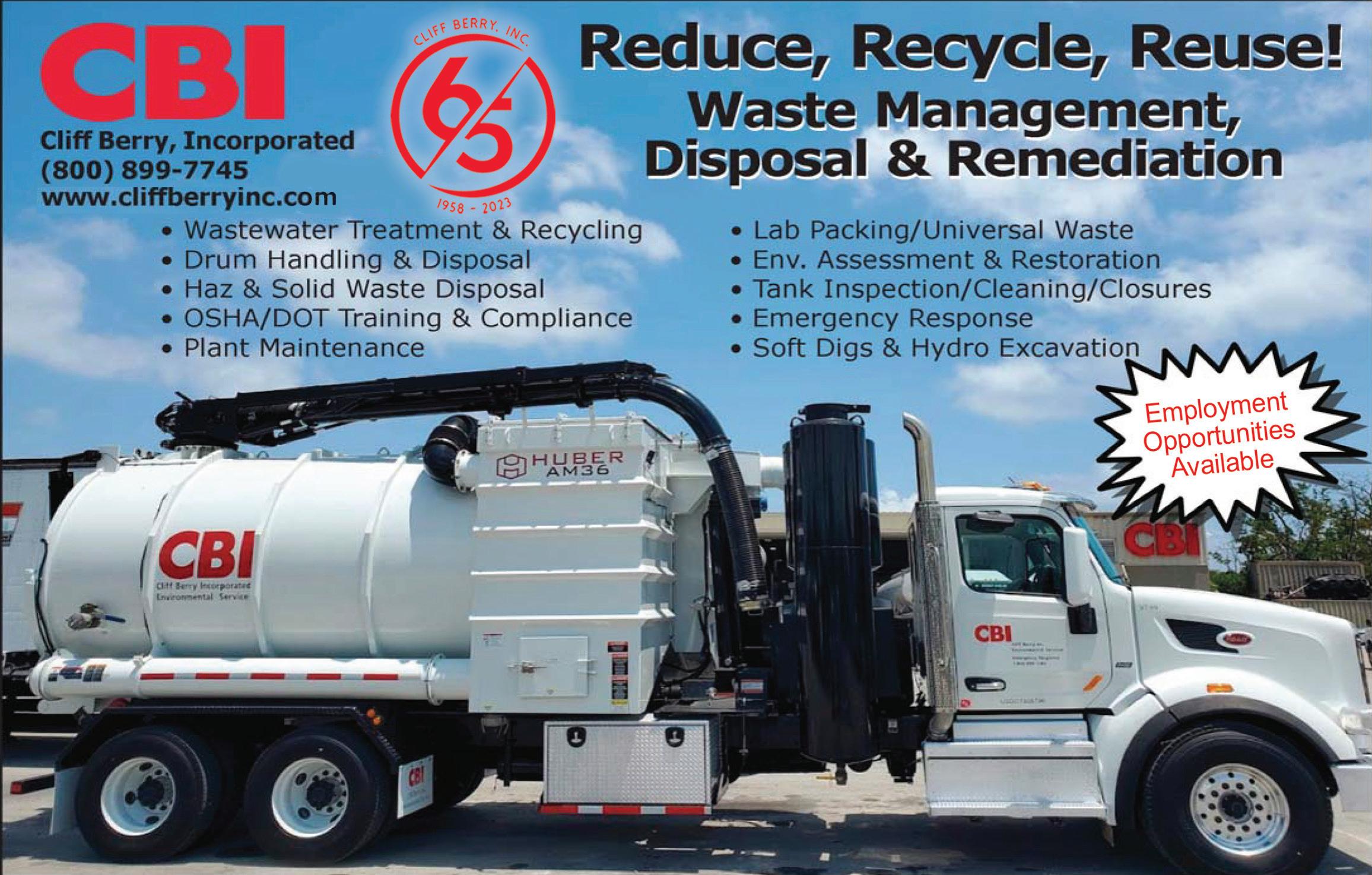
Cameron-Cole | Envirosite - 502
CDM Smith Inc - 506
Chen Moore and Associates - 322
Chronicle Heritage - 117
CMS Environmental Solutions - 529
Colliers Engineering - 115
Columbia University - Climate School - 507
Compass Environmental - 505
Cultec - 500
Cummins Cederberg - 504
Darlene Shuman Inc. - 520
Dewberry - 103
Dudek - 423
EarthBalance - 216
Ecobot - 412
EcoCredit Marketing - 317
Ecological Associates, Inc. - 417
Ecosystem Investment Partners - 512
EcoWild Consulting Group - 217
Environmental Conservation Solutions, LLC - 120
Environmental Consulting & Design, Inc. - 514
Environmental Consulting & Technology, Inc. - 201
Environmental Solutions & Innovations, Inc. - 425
Erin L. Deady, P.A. - 314
ERIS - Environmental Risk Information Services - 312
ERM - 415
ESA - 206
FL Association of Environmental Professionals - 118
Flatwoods Consulting Group Inc. - 411
Florida Association of Mitigation Bankers - 315
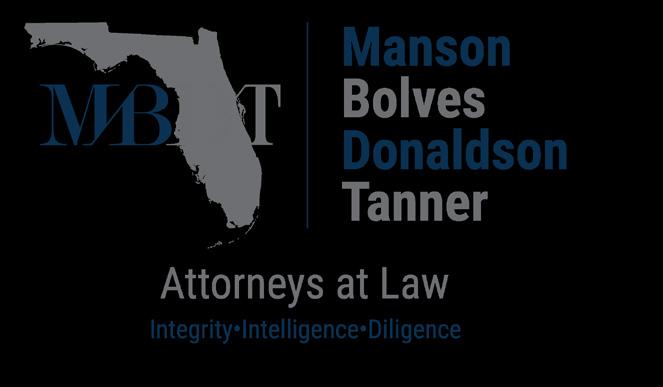
Freese & Nichols - 223
Geosyntec Consultants - 203
GHD - 421
Green Source Environmental Professionals, Inc. - 321
Greenberg Traurig, P.A. - 104
Greyter Water Systems USA - 122
Gulf Coast Underground, LLC - 522
Gunster - 101
Halff Associates, Inc. - 215
Holland & Knight LLP - 526
Hulls Environmental Services, Inc. - 413
Inwood Consulting Engineers - 213
JSA - 320
K&R Weigh Systems - 518
Kleinfelder - 516
Lewis, Longman & Walker, P.A. - 401
LightBox - 108
Manson Bolves Donaldson Tanner - 300
Mechanik Nuccio Hearne & Wester - 114
Miller Legg - 306
Mitigation Marketing, LLC - 202
Mitigation Resources of North America - 121
Modica & Associates - 503
Moffatt & Nichol - 309
Nason Yeager Gerson Harris & Fumero - 523
NClear, Inc. - 109
NorthStar - 302
Pace - 107
Passarella & Associates, Inc. - 509
Phillips and Jordan, Inc - 400
Pine Environmental Services/Xylem/YSI - 112
Pond & Co. - 116
Pure Polymer Solutions, LLC - 527
Quire - 323
R. H. Moore & Assoc. - 124
RES - 408
RESPEC - 419
SCS Engineers - 110
Sea & Shoreline Aquatic Restoration - 511
SEARCH - 406
Shutts & Bowen LLP - 220
Smart-Sciences Environmental Consulting - 222
Southern States Land & Timber, LLC. - 521
Southern Waste Information Exchange - 508
Spangler Environmental - 525
Stantec - 212
Stearns Weaver Miller Weissler Alhadeff &
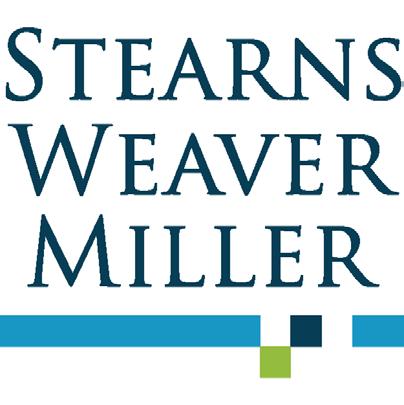
Sitterson, P.A. - 405
SurvTech Solutions, Inc. - 409
SWCA Environmental Consultants - 303
Taylor Engineering - 123
Terracon - 100
The Mitigation Banking Group - 106
The Wetlandsbank Company - 313
Titan Environmental & Construction Co. - 316
Trihydro Corporation - 221
Trinity Consultants - 207
Vanasse Hangen Brustlin, Inc. - 200
Verdantas - 209
Westervelt Ecological Services - 407
WGI Inc - 416
WSP - 301
The EPA has vowed to ensure that states, tribes, and communities get their fair share of this federal water infrastructure investment - especially in disadvantaged communities. The EPA is requesting public comment on the proposed regulation.
The public comment period will open following the proposed rule publishing in the Federal Register. Public comments can be provided at that time at www.regulations.gov under Docket ID: EPA-HQOW-2022-0114.
Multidistrict Litigation/City of Stuart Bellwether Trial:
This month, all eyes are on the City of Stuart Bellwether Trial. The City of Stuart v. 3M Company, et al., case was set for trial June 5, 2023; however, the Court has granted the Parties Joint Motion for Continuance which gives Parties 21 days or until June 26 to reach a binding settlement agreement or else the case will promptly be rescheduled for trial.
CONTINUED ON PAGE 16
The Notice of Funding Opportunity (NOFO) is pending for the Charging and Fueling Infrastructure Discretionary Grant Program (CFI Program).
This is a new competitive grant program created by the Bipartisan Infrastructure Law.
The CFI Program will make available $700 million.
The funding is proposed to assist in the creation of publicly accessible and convenient electric vehicle charging and alternative fueling infrastructure.
Consideration will be given to urban and rural areas in publicly accessible locations, including downtown areas and local neighborhoods, particularly in underserved and disadvantaged communities, and in designated Alternative Fuel Corridors (AFCs).
“This is a major step toward a world where every EV user will be able to find safe, reliable charging stations anywhere in the country,” said U.S. Transportation Secretary Pete Buttigieg. “We’re establishing common, universal standards for EV
“This is a major step toward a world where every EV user will be able to find safe, reliable charging stations anywhere in the country. We’re establishing common, universal standards for EV charging stations just like the ones for gas stations, so that recharging an EV away from home will be as predictable and accessible as filling up a gas tank.”
charging stations just like the ones for gas stations, so that recharging an EV away from home will be as predictable and accessible as filling up a gas tank.”
Eligibility for the grants is broad and includes states or political subdivisions of states, metropolitan planning organizations, local governments, special purpose districts or public authorities with a transportation function, including port authorities, Native American Tribes, U.S. Territories, and entities owned by the listed acceptable applicants including publicly accessible transportation facilities.
The program will invest in sustainable
infrastructure that is accessible to drivers of electric, hydrogen, propane, and natural gas vehicles.
Two funding categories will be included in the grants, Community Charging and Fueling Grants (Community Program) and Alternative Fuel Corridor Grants (Corridor Program).
Community Program and Corridor Program projects may cover development phase activities, including planning, feasibility analysis, revenue forecasting, environmental review, preliminary engineering and design work, and other preconstruction activities.
The acquisition of real property and related construction and reconstruction costs for the installation of publicly accessible charging and fueling infrastructure for vehicles also are eligible to apply for the grant funding.
Both Programs cover contracting with a private entity for operations and maintenance costs of infrastructure directly related to the vehicle charging and fueling, propane fueling infrastructure for medium- and heavy-duty vehicles, and the installation of traffic control devices in the right-of-way to provide directional information to infrastructure acquired, installed, or operated with grant funds.
Community Program projects are expected to reduce greenhouse gas emissions, expand or fill gaps in access to publicly accessible charging and alternative fueling infrastructure, and may conduct educational and community engagement activities through partnerships with schools, community organizations, and vehicle dealerships to support the use of zero-emission vehicles and associated infrastructure.
Community Program applications will be prioritized within rural areas, low-and moderate-income neighborhoods, communities with low ratios of private parking spaces, and communities with high ratios of multi-unit dwellings. Market demand, accessibility, and charging speed will also be considered.
Selection consideration within the Corridor Program will be given only to projects funded under the CFI Corridor Program.Projects proposed under this category need to improve automated fare collection networks by converting corridors from corridor-pending to corridor-ready, provide infrastructure redundancy to meet excess demand and reduce congestion in existing high traffic locations.
Corridor Program applicants need to meet current or future market demands for charging and fueling infrastructure, support a competitive market without impairing existing providers, improve access, enable or increase construction that may not be completed without Federal assistance, and create charging and fueling infrastructure for medium- and heavy-duty vehicles along the National Highway Freight Network and near intermodal transfer stations.●
supports:
Mainly, the bill:
• Requires a county/municipality within a basin management action plan (BMAP) to include within its capital improvement element of the local government comprehensive plan a list of projects necessary to achieve the pollutant load reductions available to the local government as established in the BMAP;
• Prohibits the installation of new septic tanks within a BMAP, RAP, or pollution reduction plan where connection to a publicly owned or investor-owned sewerage system is available;
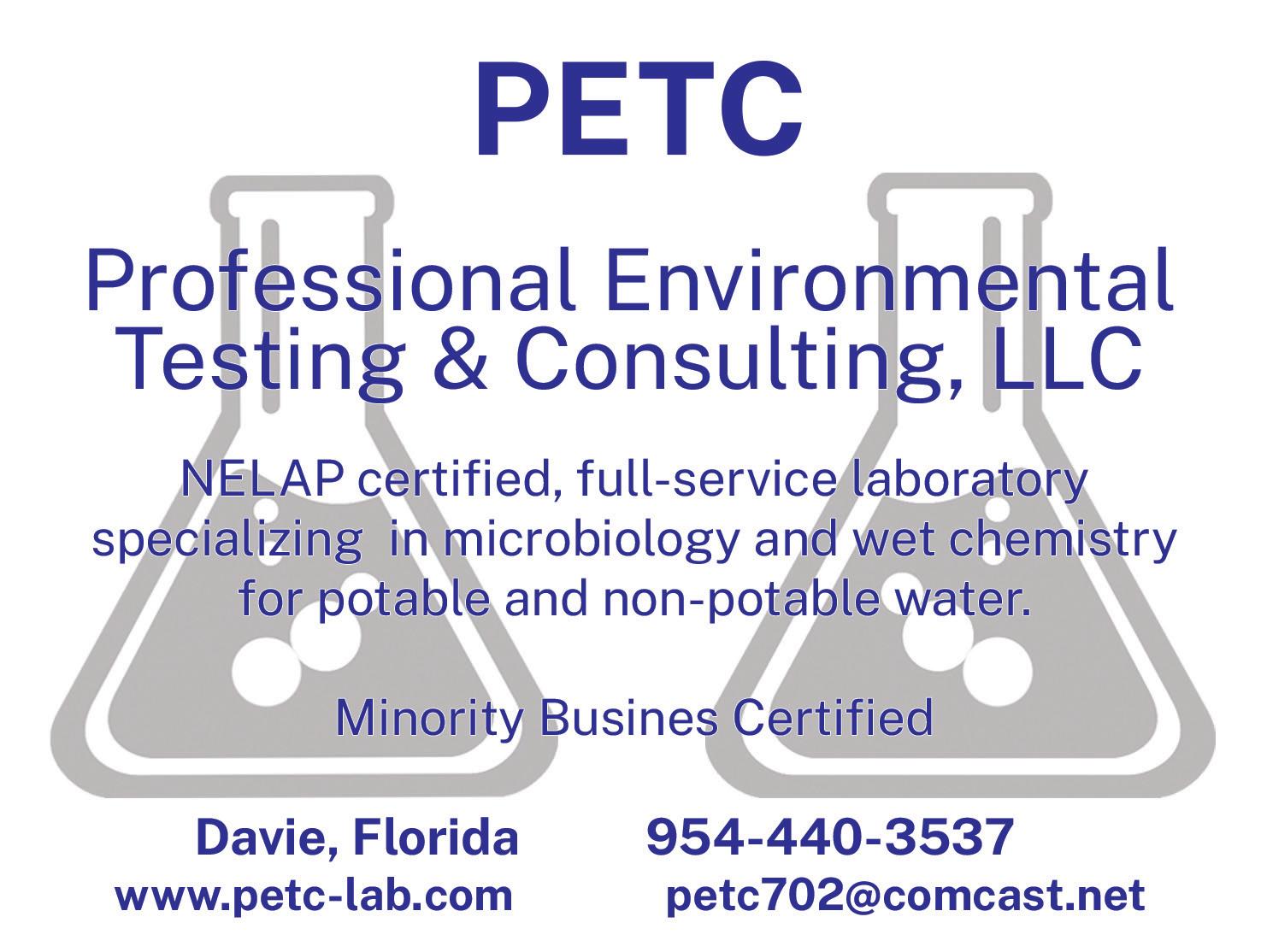
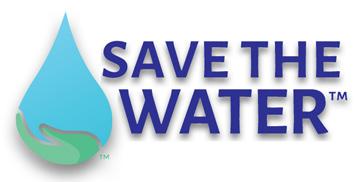
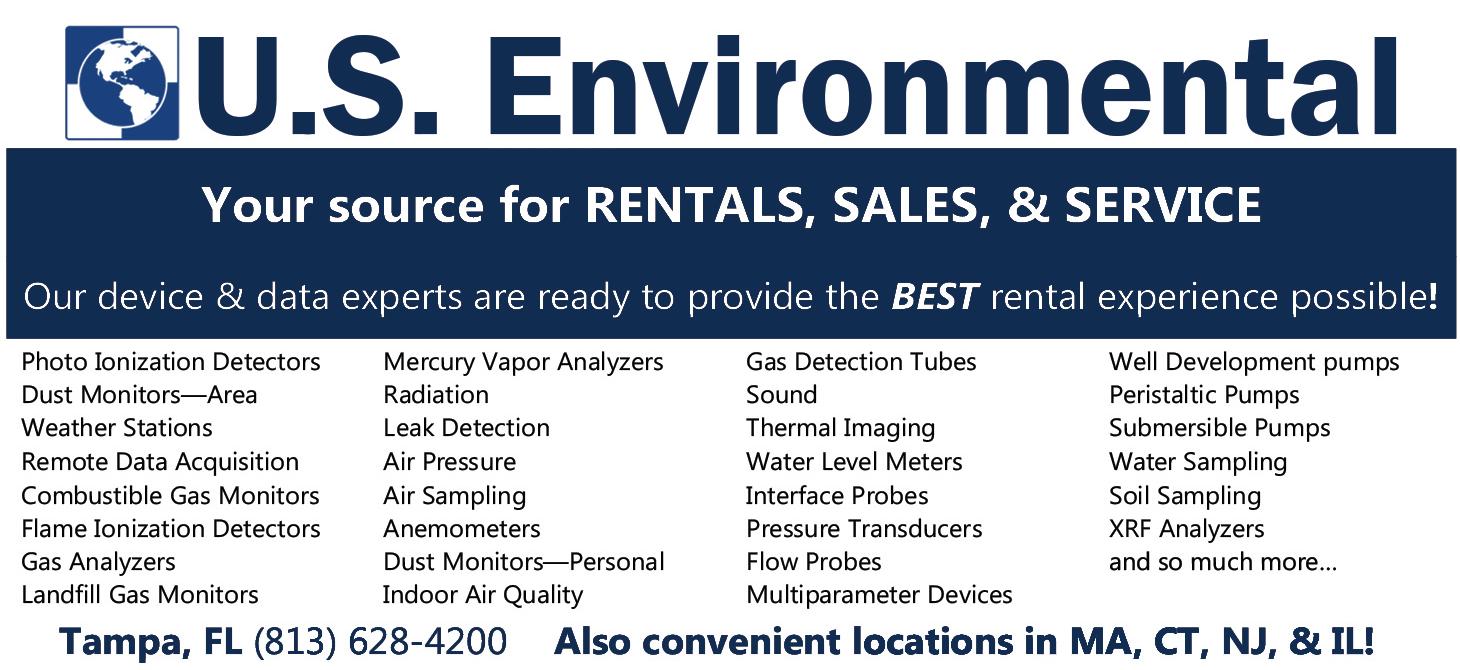



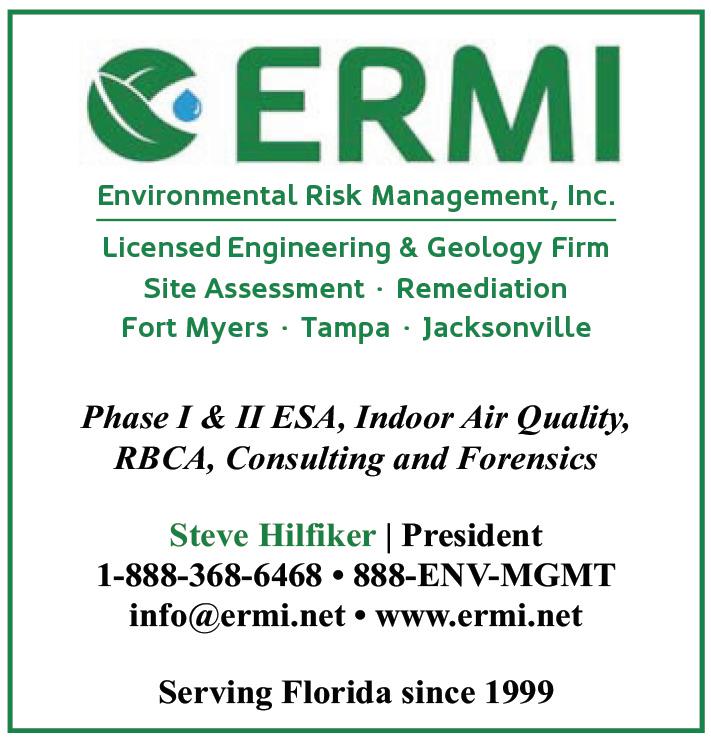



• Expands the current wastewater grant program for projects that reduce the amount of nutrients entering waters that are not attaining nutrient standards, i.e., stormwater projects; have an established total maximum daily load; are located within a BMAP, RAP adopted by final order, an accepted alternative restoration plan, or a rural area of opportunity;
• Establishes the newly created Indian River Lagoon Protection Program, which will provide $105 million in grants for water quality protection; and
• Dedicates $100 million annually to FDEP from the Land Acquisition Trust Fund for the acquisition of lands through the Florida Forever Program.

FROM PFAS PAGE 15
The counsel for the Plaintiff and counsel for 3M Company have been in serious settlement discussions to reach a global resolution of the claims for the water district plaintiffs pending against 3M. The full scope of the potential settlement is still unknown. As for now, initial discovery and depositions have been concluded in the City of Stuart Case.
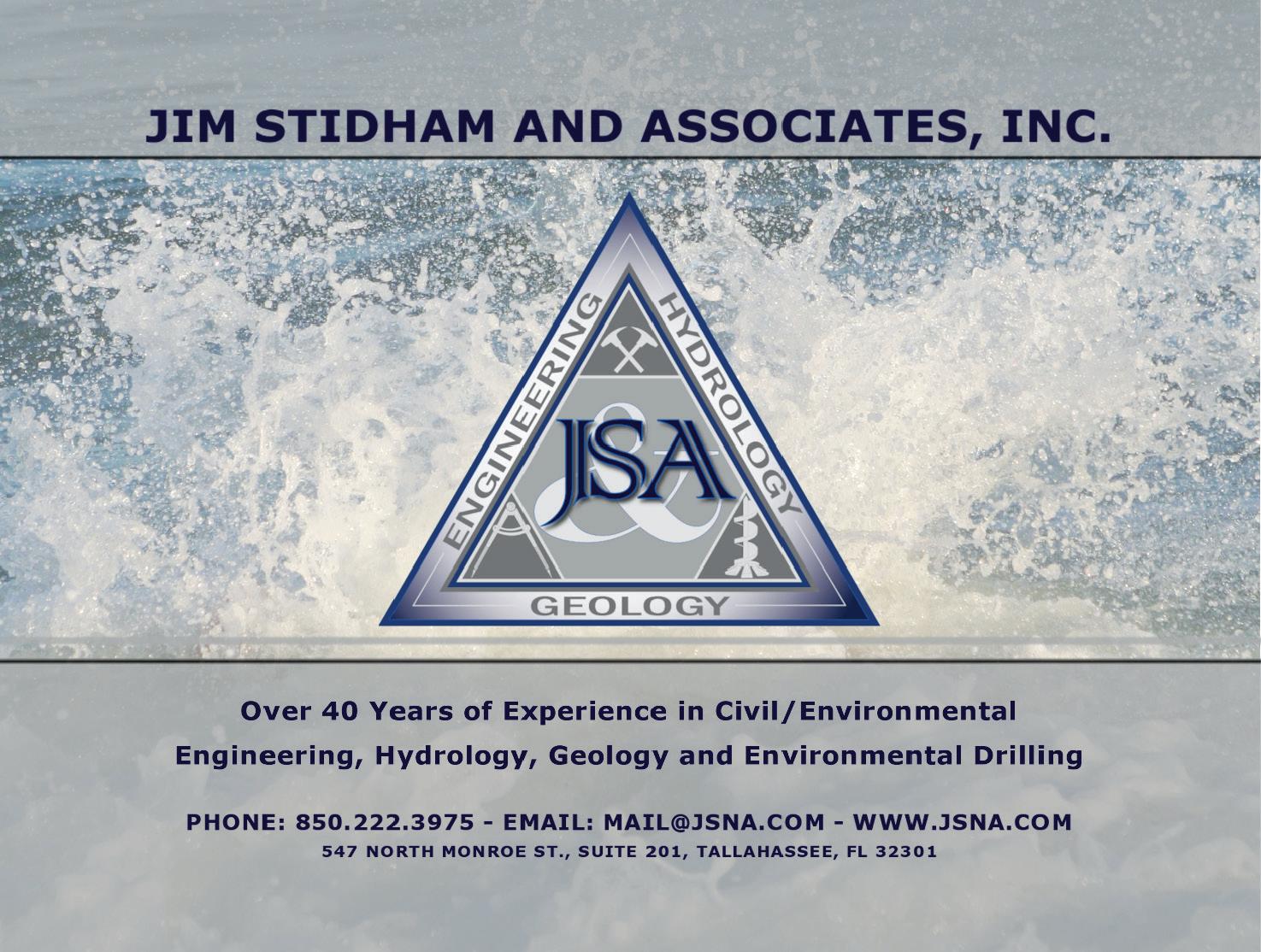
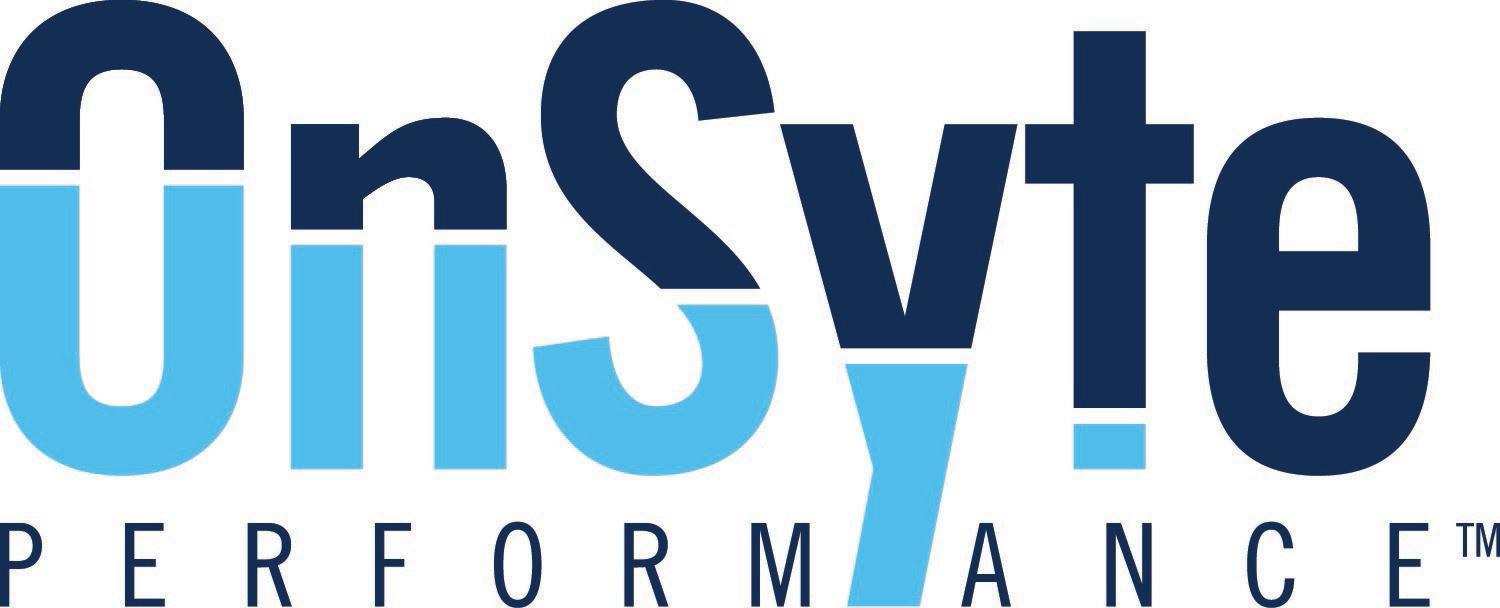
The Court also has issued orders regarding the Defendant’ Daubert Motions and Motions for Summary Judgement. While the court did minorly limit the Plaintiff’s claims and arguments, the Court primarily sided with the Plaintiff.
Federal Legislation:
The EPA and Congress continue to consider whether to list PFAS constituents as “hazardous substances” under The Comprehensive Environmental Response, Compensation, and Liability Act (CERCLA), 42 U.S.C. § 9601 et seq. The potential implication of this, should it occur, are worrisome.

Given the widespread nature of PFAS, which has been ide ntified at commercial airports, fire stations, landfills, wastewater treatment plants, and other common facilities, the listing under CERCLA would result in an explosion of regulation and litigation. Furthermore, states would
FROM FL NOTES PAGE 3
amendment that restricts local governments from implementing fertilizer management restrictions. This addition prevents local officials from enacting "fertilizer management ordinances" that limit fertilizer application, thus keeping fertilizer management under state control.
The Miami Waterkeeper are opposed to this amendment and have previously supported ordinances such as the county-wide fertilizer ordinance in Miami-Dade County in 2021. This ordinance is one of the strictest in the state and prohibits the use of fertilizer during the rainy season to prevent fertilizers from washing into stormwater collection systems. This runoff can cause
HB 1405 by Representative Kaylee Tuck establishes a bio-solids grant program within the FDEP and provides that, subject to the appropriation of funds by the Legislature, the FDEP may provide grants to counties, special districts, and municipalities to support projects that: evaluate and implement innovative technologies and solutions for the disposal of bio-solids; or construct, upgrade, expand, or retrofit domestic facilities that convert wastewater residuals to Class AA bio-solids, nonfertilizer uses or disposal methods, or alternatives to synthetic fertilizers.
There were multiple rule ratifications expected in 2023, however, only one was able to cross the finish line;
HB 7027, a rule promulgation administering requirements of the septic tank remediation plan, as well as required rulemaking stemming from the 2020 Clean Waterways Act related to reducing domestic wastewater treatment facility overflows.
A highly anticipated stormwater rule ratification did not occur in 2023. The 2024 Legislative Session, which begins in January, is sure to continue the trend of robust environmental funding, additional conservation measures, as well as increased attention to infrastructure funding. ●

be faced with the additional problem of whether to take direct enforcement action to address PFAS under CERCLA and state environmental law equivalents.
State Legislation:
Florida, like many states, has been wrestling in the Legislature with how to address, through lawmaking, the PFAS problem.
In 2022, the Florida Legislature passed a law, which was signed by the Governor, that prohibited the FDEP from taking enforcement action against local governments for PFAS contamination, pending the development of the FDEP’s own cleanup standards or adoption of the federal standard.
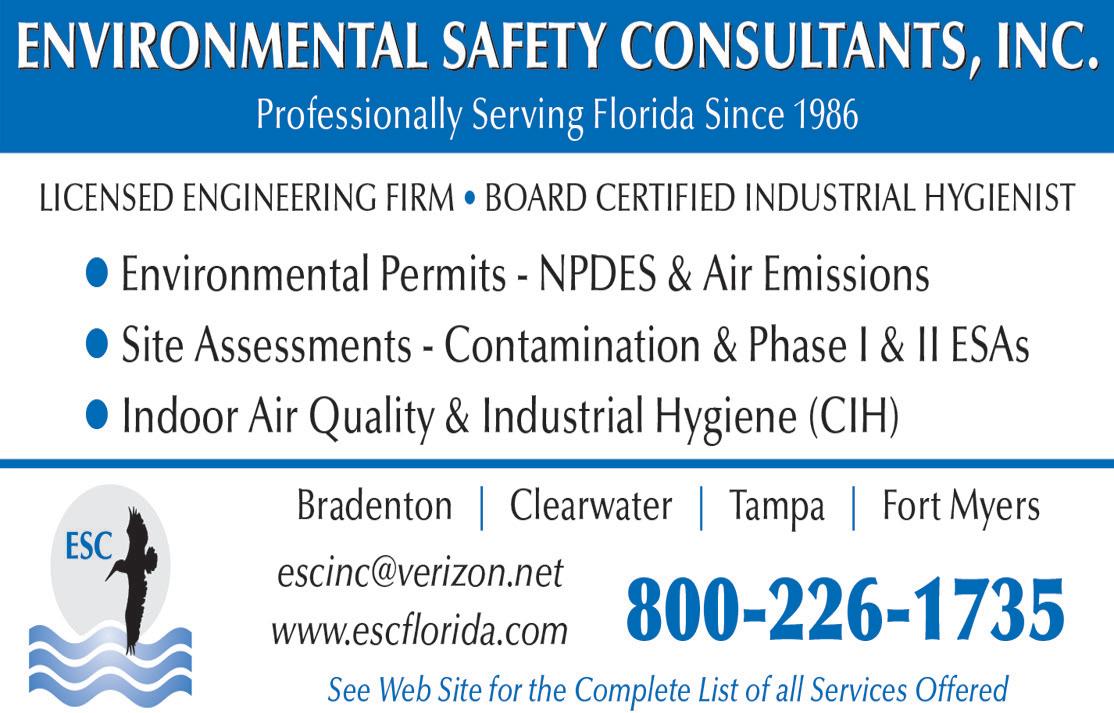
The legislation further provided that the FDEP should report back to the Legislature by Jan. 1, 2025, with its proposed rule for approval by the Legislature.
In the meantime, the FDEP has informed local government facilities which have identified PFSA contamination, that the FDEP will undertake assessment if the local governments do not wish to do so. To date, some local governments have chosen to conduct the investigations on their own, and some have allowed the FDEP to do so.●
The Hub will award five scholarships for its inaugural year this fall.
According to the National Renewable Energy Laboratory, the industry needs more than 44,000 workers in offshore wind energy and nearly 33,000 additional workers in communities to support offshore wind energy by 2030. Currently, there are fewer than 1,000 workers in the country’s offshore wind sector.
Pilot Project by Entergy Mississippi Seeks to Cut Emissions
Entergy Mississippi has installed a high-voltage clean air circuit breaker at one of its substations in Vicksburg, marking a milestone for both Entergy and Siemens Energy.
The installation was the first of its kind in Entergy’s four-state service area and only the second U.S. dead-tank BLUE Circuit Breaker manufactured by Siemens Energy.
The breaker uses a clean air mix of 80% nitrogen and 20% oxygen as its insulating medium, rather than sulfur hexafluoride, which is a potent greenhouse gas. It replaces a high-voltage oil circuit breaker that was used to control the flow of power on Entergy’s transmission system.
The Siemens Energy BLUE Circuit BreakerTM is manufactured in Richland, Mississippi, and is a pilot project that will help Entergy understand how this type of technology can help reduce its greenhouse gas footprint and emissions.
Timberland Investment Group founder, Bill Harris, is working to increase diversity in the natural resources industry. Harris has launched a scholarship program for students from underrepresented communities at Mississippi State University, where he studied forestry.
The scholarship will provide financial support for students pursuing a degree in forestry or related fields.
Employment opportunities for students would include positions such as forestry financial analyst, geographical information specialist, environmental manager, wood products mill manager, and forest economist.
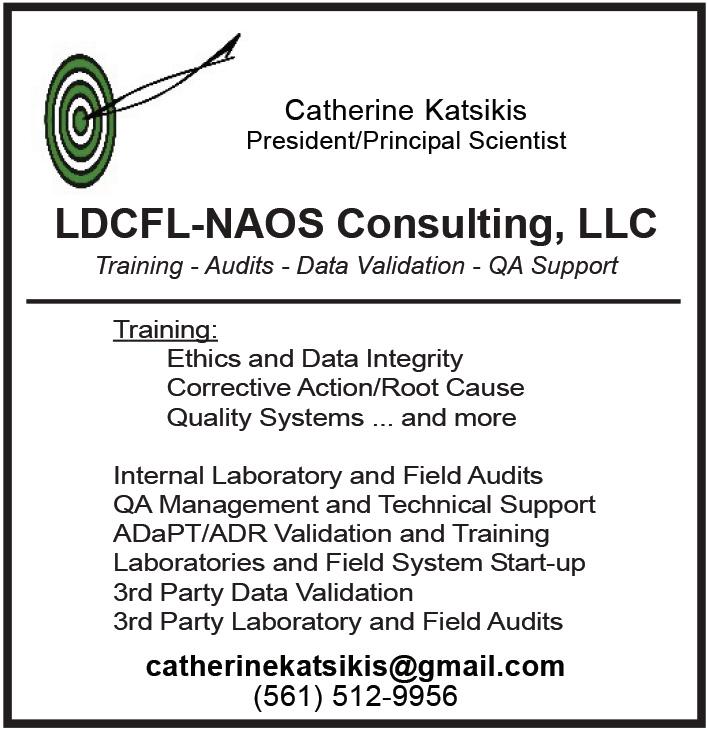
The Huntsville factory of Polaris Inc. has achieved a significant milestone as the first fully electric Ranger XP Kinetic off-road vehicles have been dispatched to dealerships. Production of the electric vehicles began at the 900,000-square-foot facility in early April.
Polaris, the Minneapolis-based maker of all-terrain vehicles, snowmobiles, and sideby-side vehicles, has partnered with Zero Motorcycles on its electrification project.
Toyota Huntsville Plant to Install 130 Acres of Solar
The Toyota plant in Huntsville, Alabama, is set to go green with a $49 million solar project. The project will see the installation of over 22,000 solar modules across 130 acres of land, making it one of the largest solar arrays in Alabama. The solar panels will generate 9.8 megawatts of electricity, which will be used to power the plant’s operations, including the production of engines for Toyota’s hybrid vehicles.
Tuscaloosa Mercedes-Benz Plant Adds Luxury EV Production
Mercedes-Benz U.S. International (MBUSI) in Alabama is preparing to produce the all-electric Maybach SUV.
The production of the battery-electric Maybach is part of Mercedes-Benz’s commitment to transition its entire lineup to electric vehicles by 2030.
The Maybach will be built on the same line as the electric GLE SUV, which has been produced at the Tuscaloosa plant since 2019.
The Tuscaloosa plant has invested $1 billion in the expansion of electric vehicle production, including the construction of a new battery facility. MBUSI has also announced plans to build a new global logistics center at the Tuscaloosa plant, which will support the production of electric vehicles.
The batteries powering the new EV will come from the Mercedes battery plant in Bibb County, just minutes away from the assembly plant.
algae blooms, seagrass die-off, and fish kills in surface waters.
With the addition of this legislative language for 2023-24, more than 100 local governments will be prohibited from adopting or changing their fertilizer management ordinances. The Miami Waterkeeper advocates for other locations to replicate Miami-Dade's strong fertilizer ordinance. They warn that waterways across the state are approaching a dangerous tipping point and immediate action is necessary to preserve them.
“Miami-Dade County’s strong fertilizer ordinance should be replicated in other locations. While they say it’s only a year-long
The Mississippi Department of Environmental Quality (MDEQ) is calling for restoration project ideas for 2023 funding consideration. The MDEQ will consider projects that restore, enhance, or protect natural resources, including water resources, fisheries, and wildlife habitats.
The MDEQ will review the proposals and select projects for funding based on their potential to improve natural resources in Mississippi. The funding for the projects comes from the Gulf Coast Restoration Trust Fund, which was established to support the restoration of natural resources in the wake of the Deepwater Horizon oil spill.
Anyone interested in submitting a project can do so via the Mississippi Restoration Project Portal.

Drive Electric Alabama, the statewide EV education and awareness campaign administered by the Alabama Department of Economic and Community Affairs (ADECA), hosted five showcase events throughout the state where people could experience up close the different EV makes and modeals and have their questions answered about EVs.
Each of the five events featured electric vehicle owners showcasing their car and chatting with anyone who wanted to learn more about owning an EV.
“These EV showcases provide a great opportunity for Alabamians interested in EVs to kick the tires, see firsthand the technology featured in these vehicles, and ask EV owners about their experiences with this new generation of vehicles." said ADECA Director Kenneth Boswell. ●
Thecity of Gainesville is taking significant steps toward achieving its zero waste goals by expanding its residential food waste composting program.
The city aims to more than double the number of program participants by the end of June 2023, with a target of enrolling 200 to 230 new households in the current and expanded pilot areas.
Residents in this pilot program set out their yellow buckets full of banana peels, egg shells, moldy bread, coffee grounds, and other kitchen scraps once per week.
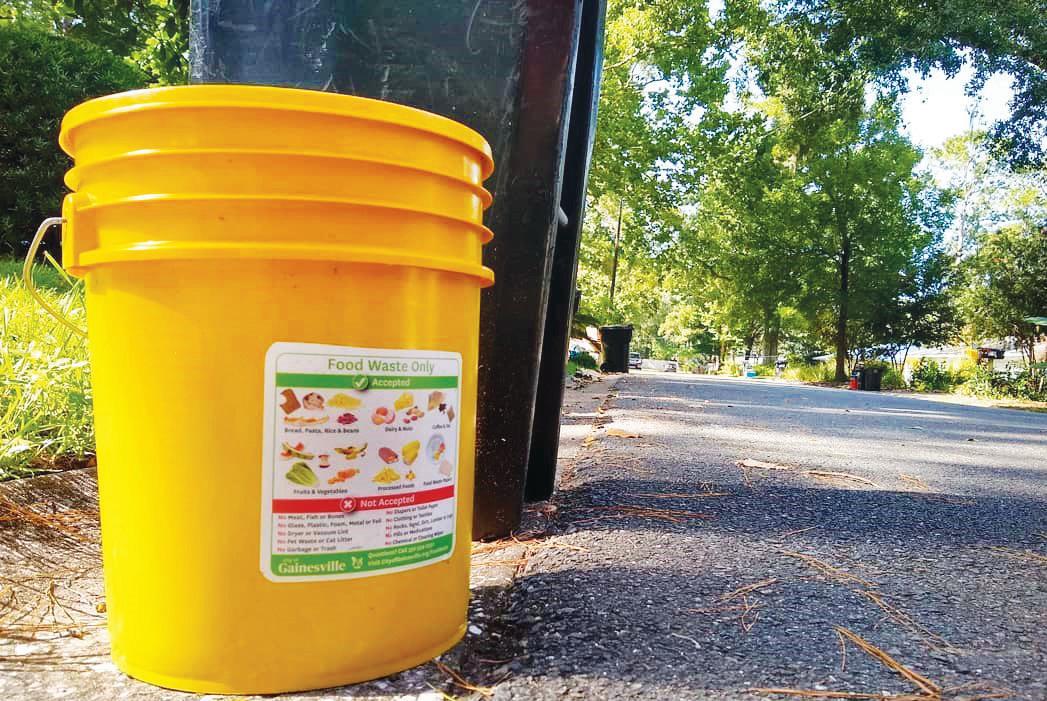
These valuable resources are then collected curbside by the dedicated workers at Beaten Path Compost, who transport the food waste to their composting facility in northeast Gainesville.
By carefully managing nitrogen, carbon, and microorganisms, the food waste undergoes a transformative process, resulting in high-quality compost.
The city has witnessed a remarkable reception from participants, debunking
For more information on Gaineville’s residential food waste composting program, visit gainesvillefl.us/FoodWaste
The finished compost product is sold in bulk to local gardeners and farmers, offering a natural and nutrient-rich solution to enhance soil quality.
The benefits are evident, as the compost improves soil structure, enhances water retention, promotes soil aeration, and supplies essential nutrients for optimal plant growth.
Dignitaries, elected officials, and local stakeholders alike recently gathered for a ribbon cutting celebrating a new Distributed Wastewater Treatment (DWT) installation. While the innovative technology is significant for its positive environmental impact, an even greater result may be how it transforms the lives of our veterans.
On May 17, OnSyte Performance unveiled its largest DWT deployment to date at Otter Springs Park and Campgrounds. The single unit replaced 27 aged septic tanks and virtually eliminates the threat of excess nitrates being introduced to local waters, including the Floridian Aquifer and nearby Suwannee River.
To date, the food waste pilot program has diverted over 58.50 tons of food waste from landfills, reducing greenhouse gas emissions by 36.96 MTCO2E (metric tons of carbon dioxide equivalent).
any concerns about potential odor issues sometimes associated with food waste.
Tom Strickland, Recycling Coordinator for the City of Gainesville, attributes the program’s success to the unwavering commitment demonstrated by residents in
diverting their food waste.
Beaten Path Compost, led by Stephan Barron, provides food waste collection services for residential homes (both in and out of the pilot areas), as well as to restaurants and other food-generating businesses.
The food waste pilot program aligns perfectly with the city’s commitment to divert waste from landfills and mitigate climate change. When food waste ends up in a landfill, it rapidly decomposes and releases methane, a greenhouse gas which is 21 times more potent than carbon dioxide.
To date, the food waste pilot program has diverted over 58.50 tons of food waste from landfills, reducing greenhouse gas emissions by 36.96 MTCO2E (metric tons of carbon dioxide equivalent).●
OnMay 30, 2023, Governor Ron DeSantis signed House Bill (HB) 1379 into law. This legislation is of great importance, as it provides enhanced protections for the Indian River Lagoon (IRL), expands the current wastewater grant program, strengthens Basin Management Action Plans (BMAPs), improves local government long-term comprehensive planning, and creates dedicated funding for the state’s land conservation efforts.
“We have made historic strides in environmental protection, water quality, and land conservation under the leadership of Governor DeSantis and with the support of the Florida legislature,” said Department of Environmental Protection Secretary Shawn Hamilton. “This legislation will allow us to further expedite and advance these efforts.”
The passing of HB 1379 signifies a significant milestone in safeguarding Florida's environment through comprehensive measures. This legislation encompasses various protective measures including:
• Enhancing protection of the IRL by creating the IRL Protection Program and requiring a comprehensive water quality monitoring program. Additionally, this bill creates new requirements for septic systems to protect and restore the IRL.
• Expanding the eligibility requirements for the Wastewater Grant Program to include stormwater and agriculture and expanding the geographic areas of eligibility to include all waterbodies that are not meeting water quality standards.
• Strengthening BMAPs by requiring local governments to identify projects that will help meet nutrient reduction goals and expanding water quality protections from septic tanks and wastewater treatment facilities within BMAPs.
• Improving local government longterm comprehensive planning to support environmental protection and restoration by requiring comprehensive plans to determine the feasibility
of providing sewer over septic in certain areas and upgrading systems to advanced wastewater treatment.
Florida's conservation efforts will be accelerated through the allocation of $100
million annually to the Florida Forever Program, which is the state's top program for acquiring conservation and recreation lands. This bill aims to support and prioritize the preservation of Florida's natural resources. ●
The ribbon cutting signifies new development. ForVets, Inc., a nonprofit organization supporting veterans transitioning back to civilian life, has big plans for the area; plans that have been on hold due to wastewater issues in the Nature Coast area of Gilchrist, Dixie, and Levy counties.
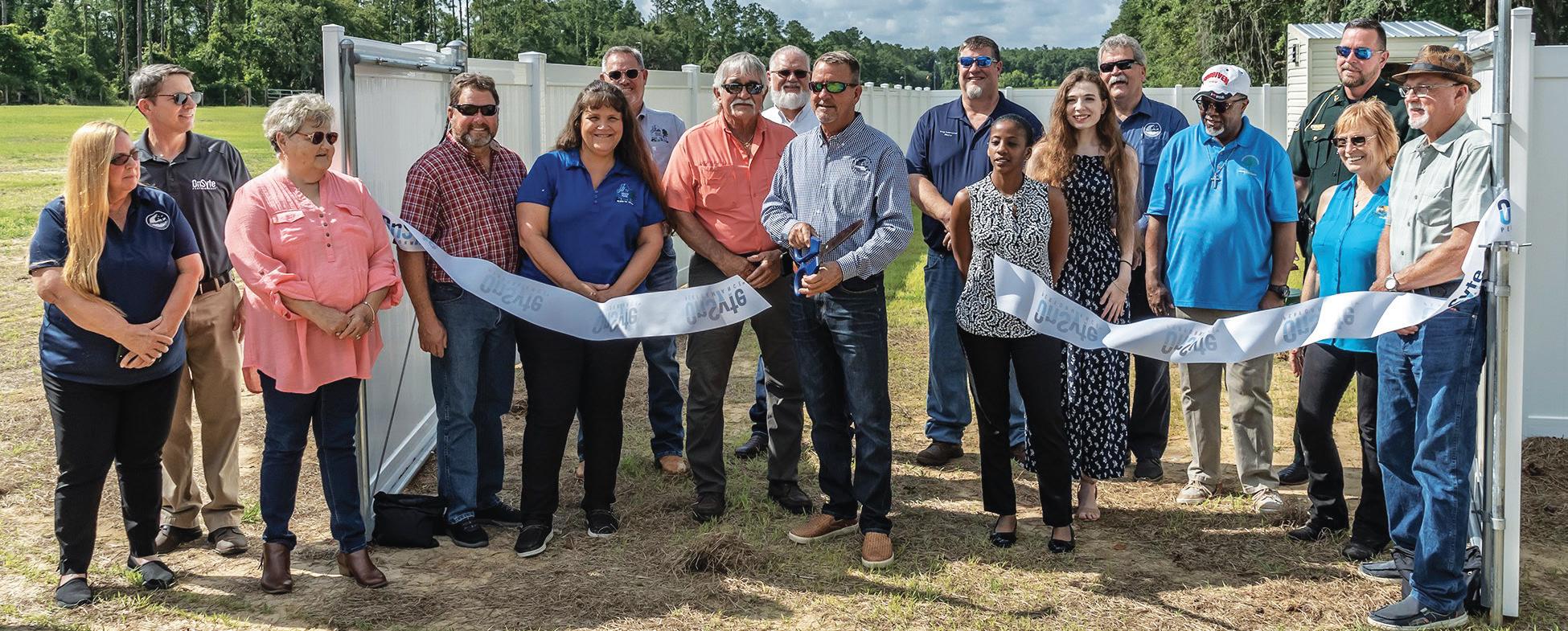
“Our new transitional program will be called Camp Valor,” explained Robert Wells, president of ForVets, Inc., located in Trenton, Florida. “We have significant plans for this location, but they have been delayed for years due to sewage treatment limitations. We’re now ready to start building so we can help more veterans.”
Wells said their first construction project will be a voc-tech school teaching the repair and maintenance of recreational vehicles. That project will be followed by a 100-bed rehabilitation facility and then an event center.
None of this would have been possible without OnSyte Performance’s modern wastewater treatment technology coupled with the partnership of the Suwannee River Water Management District, the Florida Department of Environmental Protection (FDEP), the Nature Coast Regional Water Authority, and Gilchrist County.
On May 17, OnSyte Performance unveiled its largest DWT deployment to date at Otter Springs Park and Campgrounds. The single unit replaced 27 aged septic tanks and virtually eliminates the threat of excess nitrates being introduced to local waters, including the Floridian Aquifer and nearby Suwannee River.
OnSyte’s proprietary technology, Distributed Wastewater Treatment (DWT), provides a much higher level of sewage treatment than septic tanks. For rural areas that cannot afford a municipal wastewater collection and treatment system, DWT is an alternative that is affordable and effective.
“The Otter Springs unit is one of our largest installations in Florida,” said Jeff Littlejohn, the Vice President of Regulatory Affairs for OnSyte Performance. “We have units for individual homes that are about the size of a normal septic tank. We also have larger systems for schools, churches, assisted living facilities, and similar-sized development. Our technology works in areas where municipal wastewater systems are not feasible. DWT units protect the environment and can promote economic development.”
An important technological aspect of OnSyte’s DWT systems is that individual units are remotely monitored by trained personnel. Should an adjustment or repair be required, a technician is notified immediately. In such a proactive manner, DWT systems operate like a municipal sewer system, with

ongoing monitoring and maintenance.
“The time has come to integrate new, efficient systems that address potential nitrate contamination of our water resources here in North Florida,” said Hugh Thomas, Executive Director of the Suwannee River Water Management District. “We are working closely with the Nature Coast Regional Water Authority, Gilchrist County, the legislature, and FDEP to fund more projects like the one at Otter Springs.”
Nitrate pollution is a significant problem in many parts of Florida. Large numbers of septic tanks in close proximity often leach nitrates into the environment. The nitrates cause excessive algal blooms that choke out aquatic plants and harm marine life. Local waters can even become unsafe for human use. As a result, real estate values and tourism decline.
DWT units process wastewater similarly to municipal sewage plants. They utilize a three-chambered, suspended-growth activated sludge sequencing batch reactor where the biological nitrogen is removed. The process creates effluent that can be
safely released into the environment. Multiple university studies have proven the method effective and efficient.
“This project was necessary to protect the springs and allow for development,” said Gilchrist County Administrator, Bobby Crosby. “We had to eliminate the old conventional septic system. Along the way we learned about the OnSyte technology and found it was an affordable alternative for us. It’s just wonderful to be able to protect our natural resources and provide these great facilities for our military veterans who have done so much for us.”
Debbie Destin is Chief Operating Officer of the Otter Springs Park and Campground. She has been waiting for the Camp Valor project to begin for several years, pending a solution to the nitrate pollution problem. “We have had to wait to build the new buildings until we solved the septic tank problem. The new OnSyte treatment system is going to benefit our park and our veterans.”●
STAFF & WIRE REPORTS
The city of Tampa recently has adopted an innovative approach to control algae in the Hillsborough River by installing two cutting-edge LG Sonic MPC-Buoys. These advanced buoys have been specifically designed to curb the growth of bluegreen algae by employing ultrasonic sound waves. By blocking algae’s access to sunlight and nutrients, the ultrasonic waves cause the algae to sink to the riverbed and die off without releasing any toxins.
This technology effectively mitigates excessive algae growth, allowing for the restoration of healthy Dissolved Oxygen (DO) levels in the water. DO levels are crucial for supporting aquatic life, and their improvement results in the revitalization of plant and fish populations. This, in turn, fosters a balanced and thriving ecosystem within the water body.
LG Sonic’s ultrasonic technology is a sustainable solution for addressing algal blooms in large water surfaces. It has been successfully implemented by major utilities in the United States, including American Water, NIPSCO, and the Vallecitos Water District. Although the technology’s effectiveness in moving water bodies like the Hillsborough River still is being evaluated, it has demonstrated
Courtesy photo
While LG Sonic’s ultrasonic technology still is being evaluated, it has demonstrated promising results in various environments, highlighting its broad applicability in tackling algae-related challenges across diverse water ecosystems.
promising results in various environments, highlighting its broad applicability in tackling algae-related challenges across diverse water ecosystems.
Capable of covering a 2600-foot radius, each LG Sonic buoy can emit sound waves that reach up to the riverbanks, preventing algae from growing and spreading.
John Ring, the City of Tampa Water Production Manager, believes this technology will help manage algal blooms without resorting to algaecides. He also noted that the ultrasonic buoys enable the adjustment of frequency according to the specific type of bloom or algae species present, facilitating continuous monitoring and control.
Funded by the Florida Department of Environmental Protection, this pilot program
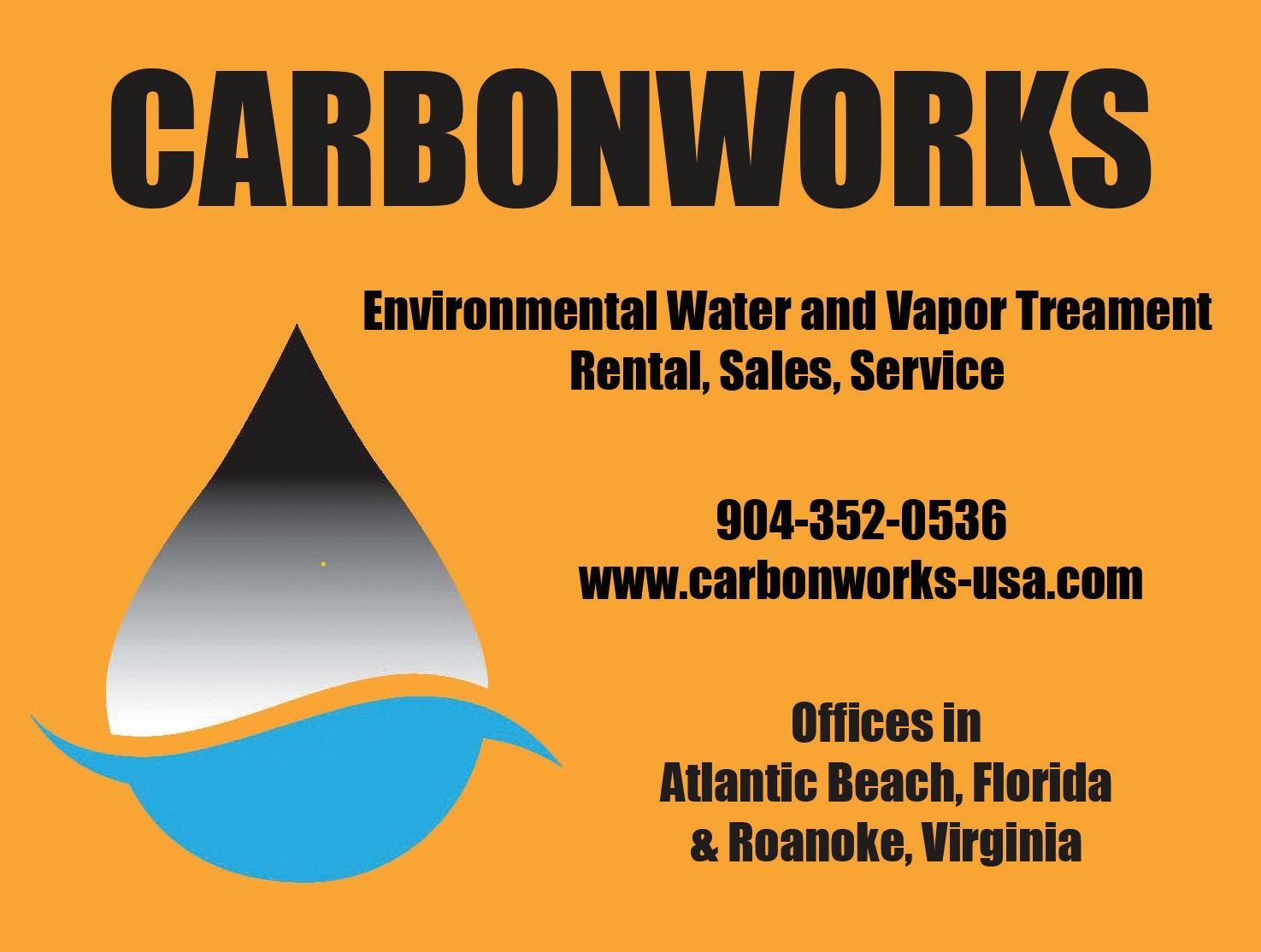
The LG Sonic buoys cover a 2600-foot radius, projecting sound waves to the riverbanks and preventing algae from growing and proliferating. John Ring, the City of Tampa Water Production Manager, stated that this technology offers an alternative to using algaecides for algae control.
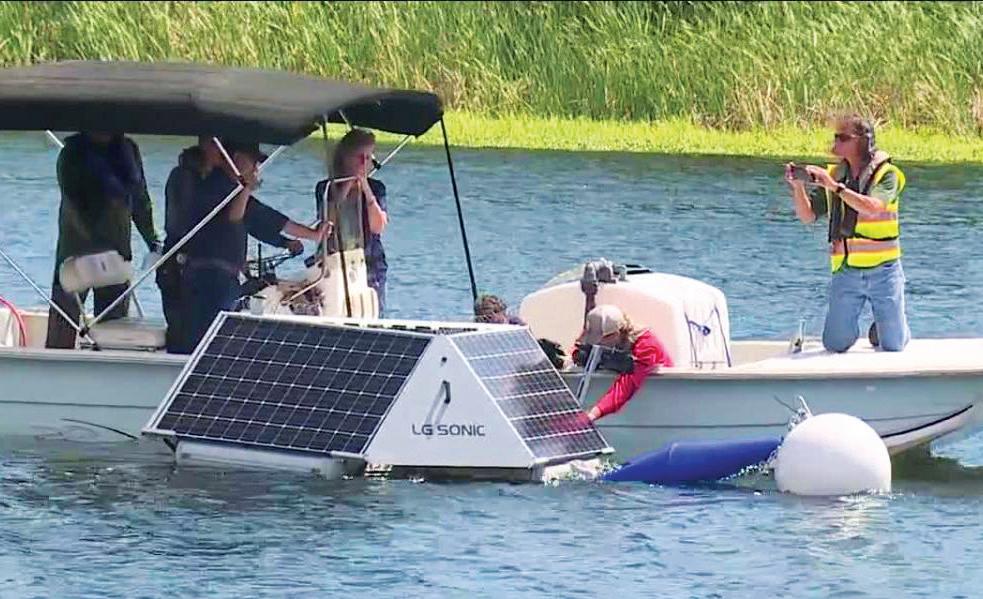
will closely examine the effects of the LG Sonic buoys on the Hillsborough River over the next two years. During this time, the city will test two locations and gather data and samples to assess the ultrasonic method’s efficacy compared to the traditional copper sulfate method.
The primary goal of implementing LG Sonic technology is to maintain high water quality in the city. John Ring emphasized that this non-invasive approach would help ensure good taste and odor in the water supply.
The LG Sonic team is eager to see the pilot program’s results and remains dedicated to offering innovative solutions for algae control and water quality management.●
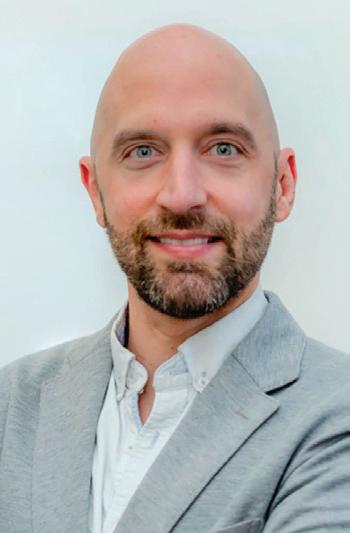
AsArtificial Intelligence (A.I.) and ChatGPT dominate headlines, it’s tough to avoid discussions about how these technologies will transform the role of engineers.
While A.I. is often mystified, our company, Transcend, has been working with engineers to incorporate automated design tools into their professional lives for more than 10 years, and we have learned a lot of lessons along the way.
Rather than fight the inevitable, Engineering Procurement Construction firms (EPCs) and the engineers embracing A.I. enhance their design capabilities, bring more value to clients, and also save money and time on preliminary design phases of projects.
As climate change and rapid development accelerate, the world’s demand for improved water and power infrastructure is bottomless. A.I.-assisted tools like the Transcend Design Generator (TDG) help the world’s EPCs rise to the challenge, and assist them in not becoming the next ‘forgotten about’ companies as technology changes the world around them. Based on our experience, Transcend sees A.I. changing critical infrastructure design in the following ways:
New Ideas
Utilities and their consultants often can’t afford to consider more unique, innovative, sustainable solutions for their projects. EPCs are incentivized to complete preliminary designs quickly and stay within budget.
To achieve these tight deadlines, it’s common for EPCs to use similar designs from past projects. While this practice is time-effective, it inconsistently delivers the best solution.
A.I.-assisted tools such as TDG can generate diverse design concepts for an upcoming capital project by repurposing existing infrastructure and iterating on proposed plans that engineers prescribe.
“Ultimately, A.I. is a tool, and one that isn’t after engineering jobs. New technology will shift engineers’ tasks and roles, as it always has. The world needs dedicated infrastructure engineers to harness A.I. when selecting a project’s best path forward so that more innovative, sustainable options can be assessed for projects rather than what was designed in years past.”
A.I. tools give EPCs holistic insight into how a project could be completed, providing a ‘crystal ball’ to predict bottlenecks and other potential inefficiencies at various phases of the design process. As utilities consider new water treatment and power generation technologies, as well as construction methods, EPCs wanting to lead designs must change their conventional thinking and start assessing all options in the same amount of time and budget they have been allotted.
Time Savings
Computers now are capable of automatically generating drawings, modeling, and preliminary documentation in minutes, as opposed to days or weeks.
Once A.I. completes the necessary work for an EPC’s latest tender pursuit, the team can use this newfound time to analyze, critique, and modify the generated design(s). In the same time it takes other EPCs to complete their proposed design, an A.I.-assisted team can present fully-developed, quality plans on bid day without expending more non-billable hours. From a business development standpoint, this means fewer “NoGos” as A.I. assists your EPC in managing the monotonous side of documentation.
Documentation
Automated design software such as TDG seamlessly connects and integrates each engineering discipline developing thorough preliminary designs. During a traditional design process, the engineering disciplines work together in a “waterfall” fashion to bring a project to life; in the case of wastewater treatment, process engineers will hand off their work to mechanical engineers, who then pass it over to electrical/ controls, and finally to civil.
But as clients request revisions, immense coordination and communication are
required and designs often need a complete ‘do-over’ from each engineering team.
A.I. automatically integrates the process, mechanical, electrical, and civil engineering decisions and calculations needed for infrastructure projects, creating comprehensive engineering plans without the potentially costly and time-consuming back-and-forth between engineering disciplines.
Once the decisions and calculations are completed, required drawings and models for preliminary design reports are generated within minutes. The tedious and often routine documentation of initiating design is more efficient once automated, giving drafters time to perfect drawings and engineers time to dig into details at an earlier stage.
Shorter Timelines
With the time savings from design generation, A.I. will inevitably influence the timeline expectations of local to global infrastructure projects and the expectations of clients. A.I. design tools will enable contractors and utilities to add their input earlier in the design process as well.
The gap between preliminary design and final construction will narrow as the preliminary design phase takes on a more mature role in the initial stages of capital expense projects.
For EPCs competing globally, A.I. provides the tools needed to keep up with the fastpaced world around us. EPCs interested in remaining competitive and conducting
business in this new reality will either adapt or lose out to those who change with the times.
A.I. empowers a larger group of project stakeholders to design infrastructure.
With tools such as TDG, the power to create preliminary infrastructure design is now in the hands of utilities, manufacturers, contractors, salespeople, project managers, and more. This shift in access has implications for the future of EPCs involved in design since, historically, preliminary design reports are expensive and require a consulting engineer.
For example, utility engineers now can leverage A.I. to brainstorm their preferred path for a capital project and hire an engineer later in the design process or influence the bid spec with options that already include process flow diagrams and 3-D BIM models. Access to design is critical for the future of water and power infrastructure because each party involved can bring their perspective. A more complete approach to design also mitigates miscommunication earlier in the process.
Ultimately, A.I. is a tool, and one that isn’t after engineering jobs.
New technology will shift engineers’ tasks and roles, as it always has. The world needs dedicated infrastructure engineers to harness A.I. when selecting a project’s best path forward so that more innovative, sustainable options can be assessed for projects rather than what was designed in years past. Tools such as TDG need guidance and adjustments from engineers’ real-world expertise. Together, A.I. and engineers can introduce a new way of designing and completing infrastructure projects that meet the world’s ever-increasing demands.
If you have questions about how tools like the Transcend Design Generator can help you and your team design better infrastructure, reach out today to see how we’re reimagining water and power infrastructure design.●
TheFlorida Land Use and Cover Classification System (FLUCCS) is a comprehensive and standardized system for classifying and mapping the land use and cover of the state of Florida.
Developed by the Florida Department of Environmental Protection (FDEP), FLUCCS provides a framework for understanding the distribution and patterns of land use and cover across the state, and serves as an important tool for managing and conserving Florida’s natural resources.
What is land use and cover?
Land use refers to the way in which land is utilized by humans. It encompasses a wide range of activities, including residential, industrial, commercial, agricultural, recreational, and conservation-related uses. It also includes activities such as mining, forestry, and urban development.
The concept of land use is closely linked to land cover, which refers to the physical characteristics of the land surface, such as vegetation, water bodies, or urban structures.
Land use and land cover are often studied together as they are closely interrelated. Land use decisions can change the land cover, and changes in land cover can affect how land is used. Land use planning is the process of regulating the use of land in an effort to promote socially and environmentally sustainable development.
Purpose of the Florida Land Use and Cover Classification System
To set a reliable fungible asset market, the mitigation banking industry needs standardized units of measurement and classification. One of these standardized measurements is a methodology for coding habitats.
In Florida, this coding system is the FLUCCS system, Florida Land Use Cover and Forms Classification.
Using a combination of remote sensing data and ground-based observations, the FLUCCS maps and classifies land use and cover into more than 30 different categories, including urban, agricultural, wetlands, forests, and water bodies.
This level of detail allows for a more accurate understanding of the distribution and patterns of land use and cover, and provides valuable information for resource managers and planners.
The FLUCCS helps monitor and evaluate land use planning over time
The system also allows for the collection of data on land use and cover changes at regular intervals, providing valuable information for understanding the impacts of changes over time.
This helps support a range of important management and conservation activities, including wetlands and water resources management, biodiversity conservation, and climate change adaptation.
As mitigation banking is part of an overall plan for land use in Florida, categorizing potential bank sites and permit sites with
this system is a necessity. It helps integrate the industry with other land use plans, such as the Florida Comprehensive Wildlife Conservation Strategy or the Southeast Florida Regional Climate Change Compact.
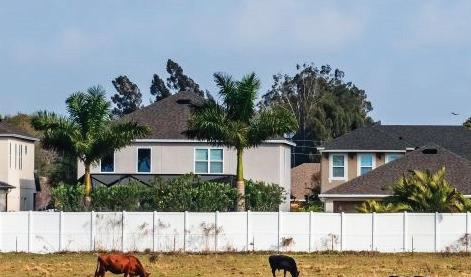
How would an environmental manager use Florida land use codes?
The FLUCCS codes are approved by the regulatory agencies in Florida and are widely used in the state. An environmental manager can conduct a site survey to identify the current land use and cover of an area, and then use the FLUCCS to classify the land use and cover. This can inform the development of a workplan for a proposed project.
In most cases, an environmental manager would need to use the FLUCCS in the permitting paperwork. This information would be used by regulatory agencies such as the FDEP to determine whether the project complies with relevant regulations and guidelines.
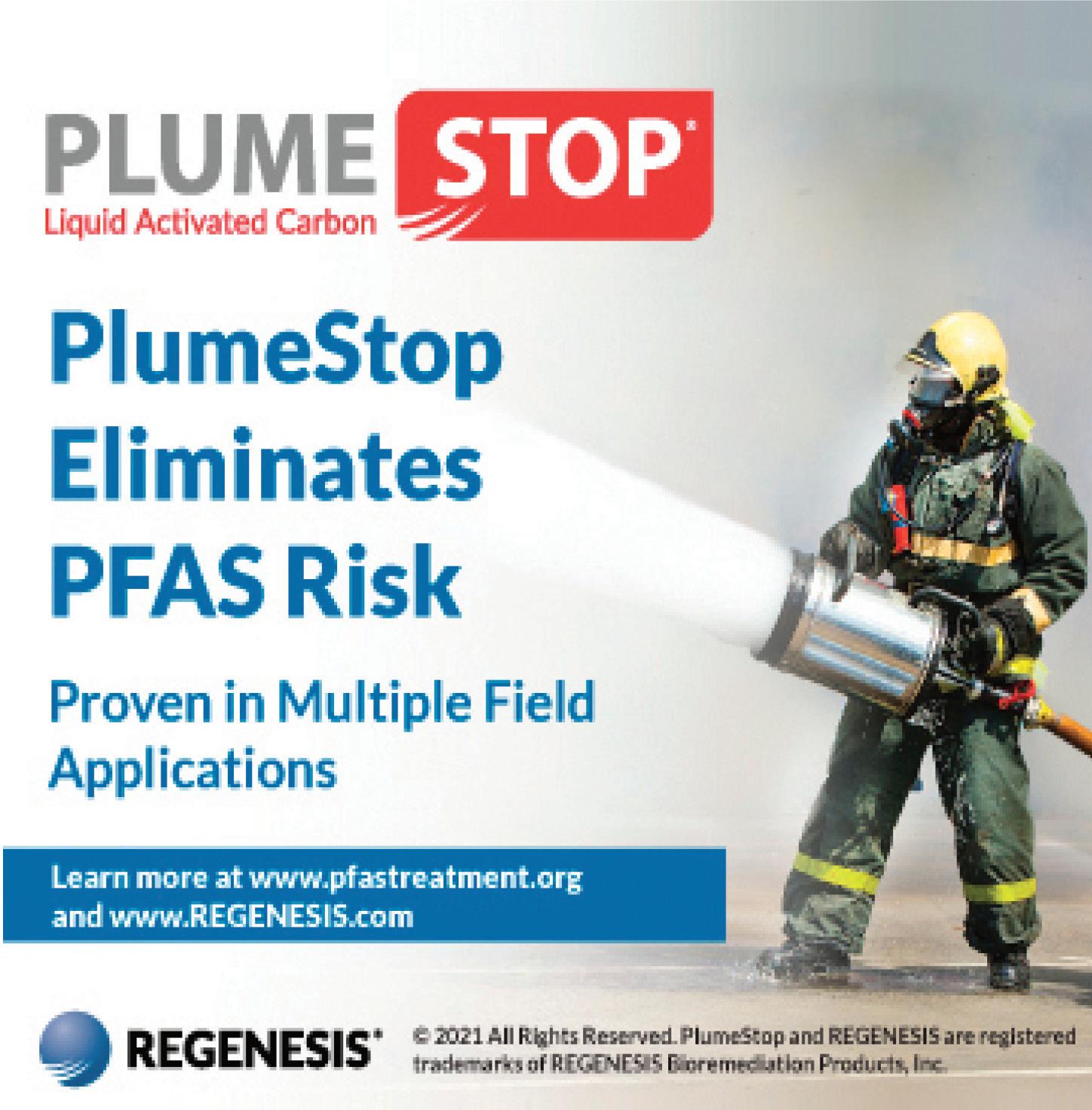
Additionally, an environmental manager may be required to submit a mitigation plan, which outlines the measures that will be taken to minimize or offset any negative impacts of the proposed project on the environment. The mitigation plan would also provide information on how the FLUCCS was used to identify and evaluate potential mitigation opportunities.
An environmental manager can use the FLUCCS to track the progress of a project. This can help to identify any unexpected or unintended consequences, and to make adjustments to the project as needed.
The Florida Department of Transportation (FDOT) FLUCCS manual is a guide for the use of the FLUCCS codes and their application in transportation planning, design and construction projects.

It includes information on how to apply the FLUCCS codes to transportation projects, how to interpret the results, and how to use the information to make decisions related to project design, environmental impact assessment, and permit.
The manual also includes information on how to use the FLUCCS codes in conjunction with other data and tools, such as GIS data, aerial photography, and field observations.
The FLUCCS Crosswalk helps communication and collaboration between agencies
A lot of different US agencies and environmental organizations have their own systems of land cover classification. For this reason, FLUCCS has a crosswalk that connects four different systems to the FLUCCS codes. This makes paperwork and communicating with other agencies a lot easier.
The crosswalk system helps facilitate collaboration between:
1. The National Wetlands Inventory, which overlaps with the Cowardin system and sets the stage for credit classification in Florida;
When determining the appropriate land use code during a site survey or when filling out impact permit paperwork, an environmental manager can use a combination of remote sensing data, ground-based observations, and field measurements to identify and classify the land use and cover of an area.
Each FLUCCS code represents a specific land use or cover type, and is accompanied by a detailed description of the characteristics and attributes of that type.
For example, code 500 represents “Water Bodies,” and includes any land that is covered by water, such as lakes, rivers, and estuaries. The code description for this category would include information on the types of water bodies that are typically found within Florida, such as coastal lagoons and freshwater ponds.
The FLUCCS codes are primarily used to classify and map land use and cover types in Florida. However, certain FLUCCS codes can be used to identify and classify habitats based on their land use and cover characteristics. For example, the FLUCCS code 600 (Wetlands) can be used to identify and classify wetlands habitats. Similarly, the FLUCCS code 400 (Upland Forests) can be used to identify and classify forest habitats.
Florida land use codes help target specific ecological impacts
The Florida Land Use and Cover Classification System code can be used in conjunction with the other necessary assessments, like the Uniform Wetland Assessment Method (UMAM), to provide a more comprehensive understanding of the area.
For example, if a wetland site is classified as code 600 (Wetlands) by the FLUCCS, the UMAM would then focus on the ecological functions of that wetland, such as hydrology, vegetation, wildlife and other characteristics.
If the site is located in an area classified as code 100 (Urban and Built-Up Land) by the FLUCCS, the assessment would also consider the potential impacts of human activities on the wetland, such as urbanization and development.
The FLUCCS code can be used to contextualize the wetland site in the larger landscape and identify any potential connectivity or fragmentation issues, which can have significant impacts on the ecology of the wetland.
2. The Florida Natural Areas Inventory (FNAI), used for defining “community types” that exist within credit classifications;
3. The Florida Fish and Wildlife Conservation Service (FWC), which regulates conservation and habitat banking; and
4. The U.S. Department of Agriculture’s Soil Conservation Service.
Finding Florida land use GIS data to make a Florida land use map
An environmental manager should document and report the results of the land use and cover classification in the impact permit paperwork. This can include a detailed description of the methods used to classify the land use and cover, as well as a map showing the distribution and patterns of land use and cover in the area.
There are several ways to find a Florida land use map or GIS data, depending on the purpose and level of detail required:
1. Online sources: There are several online sources that provide land use maps for Florida, such as The Florida Cooperative Land Cover Map (CLC), the Florida Geographic Data Library (FGDL) and the Environmental Protection Agency (EPA).
2. State agencies: State agencies often have Florida land use maps available on their websites, like the The Florida Department of Environmental Protection (FDEP) Statewide Land Use Land Cover GeoSpatial Open Data map.
3. Local governments: Local governments such as counties and municipalities may also have Florida land use maps available on their websites. These maps can provide detailed information on land use and zoning within a specific area.
4. Create your own: It is also possible to create your own Florida land use map using GIS software and data sources such as satellite imagery, aerial photography, and field observations. This option is more time-consuming and requires specialized skills and knowledge, but it allows for a high level of customization and can provide more detailed and accurate information.
Once you have obtained the Florida land use GIS data, you can use GIS software to create custom maps and visualizations, analyze land use patterns, and perform spatial analysis. These tools can help you to identify areas of concern, evaluate potential impacts of development, and develop mitigation and conservation strategies.●
Energy-efficient buildings, especially those certified by the Leadership in Energy and Environmental Design (LEED) rating system, play a crucial role in reducing global greenhouse gas emissions and mitigating the effects of climate change.
Buildings account for about 40% of global energy consumption, and energy-efficient buildings can help reduce this consumption by up to 50% through the use of energy-efficient lighting, heating, and cooling systems, as well as sustainable materials and better ventilation and air-filtration systems.
LEED certification, developed by the United States Green Building Council (USGBC), evaluates the environmental performance and sustainability of buildings based on a range of criteria, including energy and water efficiency, indoor air quality, building materials, and site sustainability.
The United States Green Building Council (USGBC) provides numerous resources on their website at usgbc.org to aid in the certification process and the fees associated with certification.
LEED-certified buildings offer numerous benefits, including reduced energy consumption, improved indoor air quality, and economic benefits, such as lower operating costs, higher resale values, and premium rents.
LEED-certified buildings enhance energy efficiency by implementing a variety of sustainable design features and technologies; including but not limited to: energy-efficient lighting systems, high-efficiency HVAC systems, improved insulation, and building envelope design. These energy-efficient systems can help lower operating
costs, providing long-term economic benefits for tenants and building owners. In addition to energy efficiency, LEED-certified buildings also prioritize the health and comfort of occupants.
The certification process includes criteria for indoor air quality, acoustic performance, and access to natural light and views. Creating a healthy and comfortable indoor environment is conducive to productivity and well-being. LEED-certified buildings prioritize the use of non-toxic and sustainable materials, which can further improve indoor air quality and reduce the environmental impact of building operations.
Overall, LEED-certified buildings strive to provide a sustainable and healthy indoor environment that benefits occupants, owners, and the environment.
To achieve LEED certification, a typical project might begin by forming a multidisciplinary team that will address LEED requirements and document the outcomes.
Projects earn points by adhering to prerequisites and credits that address carbon, energy, water, waste, transportation, materials, health, and indoor environmental quality.
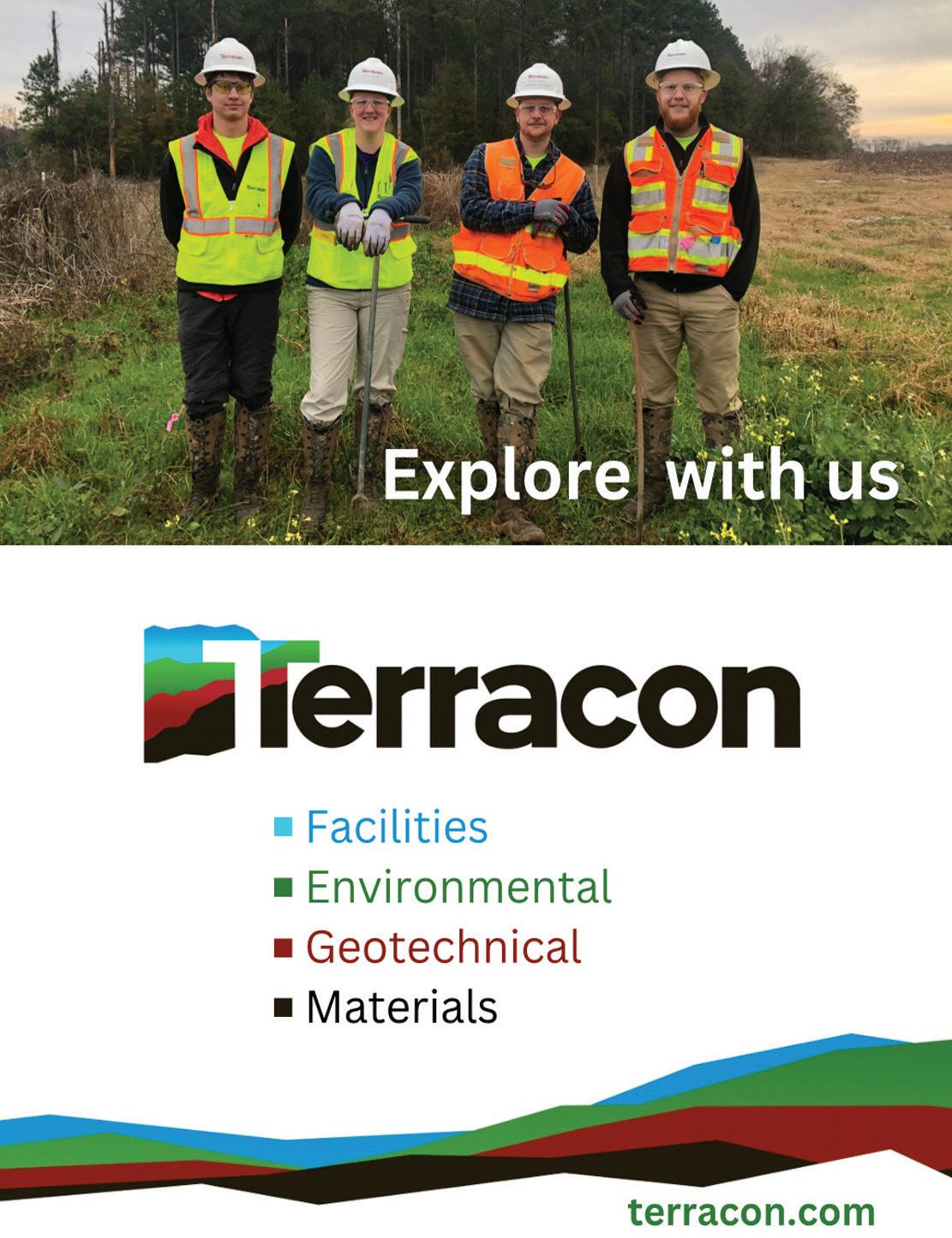
Projects go through a review process by the USGBC and are awarded points that correspond to one of four levels of LEED certification:
LEED Certified (40-49 points)
LEED Silver (50-59 points)
LEED Gold (60-79 points)
LEED Platinum (80+ points).
In 2022, USGBC surpassed 100,000 LEED-certified projects globally, totaling more than 11 billion certified gross square feet.
In the US, the number of projects certified in 2022 was 1,200+ and comprised more than 350 million gross square feet. If you are engaged in building design or are involved in developing a site or construction project, it pays to check out LEED certification.●
Floating photovoltaics (FPV), also known as floating solar, is a technology that involves installing solar panels on floating platforms on water bodies, such as lakes, reservoirs, or ponds.
The floating platforms are typically made of HDPE plastic to ensure durability and resistance to corrosion. FPV uses all the same electrical equipment as other methods of solar energy; the only difference is the racking system. The system is either connected directly to where the power is consumed, a battery storage system, or to the power grid.
One of the most critical aspects of floating solar is the anchoring method, especially in locations with high wind forces, currents, or other challenging environmental conditions.
FPV systems are anchored either using percussion anchors that are installed at the bottom of a reservoir or shoreline, or a ballast system in which concrete blocks are lowered to the bottom of the water body.
Both anchoring methods utilize mooring lines, polyester ropes, and/or chains to connect the anchors to the array of panels. This innovative approach to solar power
generation has been gaining popularity in recent years due to its many benefits.
One of the most significant advantages of floating solar is that it doesn’t require the use of any land, which can be scarce and expensive, especially in growing areas and states such as Florida. Additionally, land not used for solar panels can be devel-
oped or preserved for other uses such as conservation or agriculture.
Floating solar panels also promote an increased energy production compared to other traditional forms of solar; this is due to the cooling effect of the water, which
By LEO CANNYN, PMP, P.E., ENV SP, Principal Project Manager, Beryl Engineering & InspectionConstruction and demolition projects create more than 600 million tons of solid waste annually in the U.S., according to the Environmental Protection Agency (EPA) figures.
Even with substantial efforts to reduce inefficiencies; the industry recognizes excessive waste is a concern. Construction waste-reduction must be a priority and design teams need to be more involved.
Structural engineers play a critical role in delivering sustainable projects in terms of their environmental, social, and economic impact.
Additionally, decisions with zero-waste in mind make significant impacts by reducing the environmental footprint and making the most of the resources specified in a project’s design.
Action can be taken independently on a single project or collectively, as a group, reducing waste and creating environmentally friendly results. Reducing excess and participating in a circular economy reduces demand for new and single-use materials and can lead to better overall investments. Here are just a few zero-waste inspired ideas structural engineers can consider:
Too many buildings are already old before their time. Planned with the best intentions, they can be obsolete before the certificate of occupancy is issued. Structural engineers should ask their teams to design with the future in mind. Designers need to re-think how projects can potentially expand in the future or be repurposed for additional function, potentially increasing the longevity of a building and eventually, possibly, demolition could be avoided.
With the continued advancements in technology, structural engineers can emphasize ‘tech’ to their advantage to minimize the use of resources. New technology, such as mobile apps, drones, and virtual reality,
can help the construction industry improve productivity, increase safety, and create more environmentally-friendly buildings. This can be accomplished while maintaining a high level of performance and overall satisfaction.
Rethinking structural engineering can help reduce waste and the amount of building materials that end up in landfills. Initially, it requires a wider understanding of what is possible. Materials can be chosen and designed to be easily detached, removed and/or separated. When buildings are constructed with the end in mind, it allows for a better success rate in recycling material. Selective disassembly allows building components that are still in good condition to be utilized on other projects.
Evaluate New Projects and Search for Ways to Reduce Waste

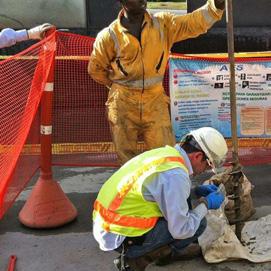
When developing and planning a new project, the engineer draws on several ‘best practices’ as part of the design process. Engineers should consider whether a particular design and layout can be simplified without compromising the overall concept.
Also, identifying a building design that calls for standard material dimensions reduces waste.
Design for Reuse of Materials
Research has shown that the reuse of material components has considerable potential to reduce environmental burdens resulting from the construction and eventual demolition of structures. Additionally, new materials containing a high level of recyclables are beneficial but do not provide as much of an impact as the reuse of salvaged materials and components.
Final Thoughts
The more involved the Industry becomes in ‘the push’ to reduce waste, the better the chances are of it becoming a reality. As a profession, construction is highly dependent on natural resources such as wood, stone, and other materials. To improve the practice and move closer to sustainability, it is critical to find structural engineers who are equally engaged and seeking ways to utilize sustainable resources to lower the carbon footprint. The focus should be on progress, not perfection.●
of harmful algal blooms or the need for chemicals required to treat the water and/ or control such growth.
The shading effect of floating solar also reduces water evaporation. This is particularly beneficial in areas with high temperatures and low rainfall.
By reducing evaporation, floating solar can help to conserve water resources and increase availability of water for other uses, such as agriculture and drinking water supply.
While FPV is not as common in the United States as it is in Asian Pacific countries, it is gaining considerable traction.
Currently, D3Energy has installed the most systems in the United States and all of the systems in Florida.
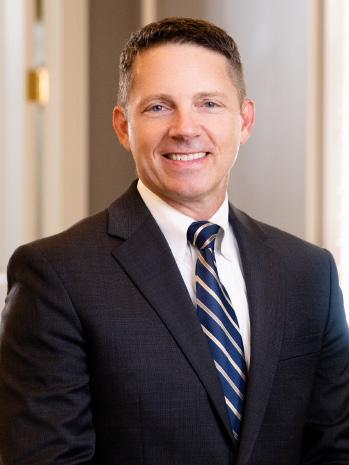
STAFF & WIRE REPORTS
Recently, the Governor and Cabinet gave their approval for the preservation and acquisition of approximately 18,279 acres of agricultural land. This was done through cost-effective conservation easements that amounted to $57,600,705. These easements will prevent any future development of the land and allow agriculture operations to continue contributing to Florida's economy. These operations are essential in the production of food, timber, and other resources that are
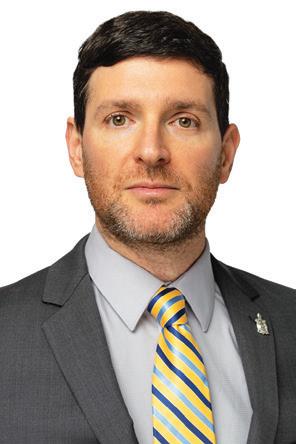
crucial to the prosperity of the state.
Commissioner of Agriculture Wilton Simpson said, “These partnerships will increase the total land preserved by the Rural and Family Lands Protection Program to approximately 86,580 acres
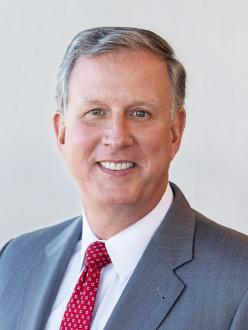
over 67 conservation easements. This is an incredible step forward for our program, and I am confident that it will only continue to grow.
the state of Florida.”
The nine properties are situated in the Florida Wildlife Corridor, which became a state law in 2021 under the Florida Wildlife Corridor Act.
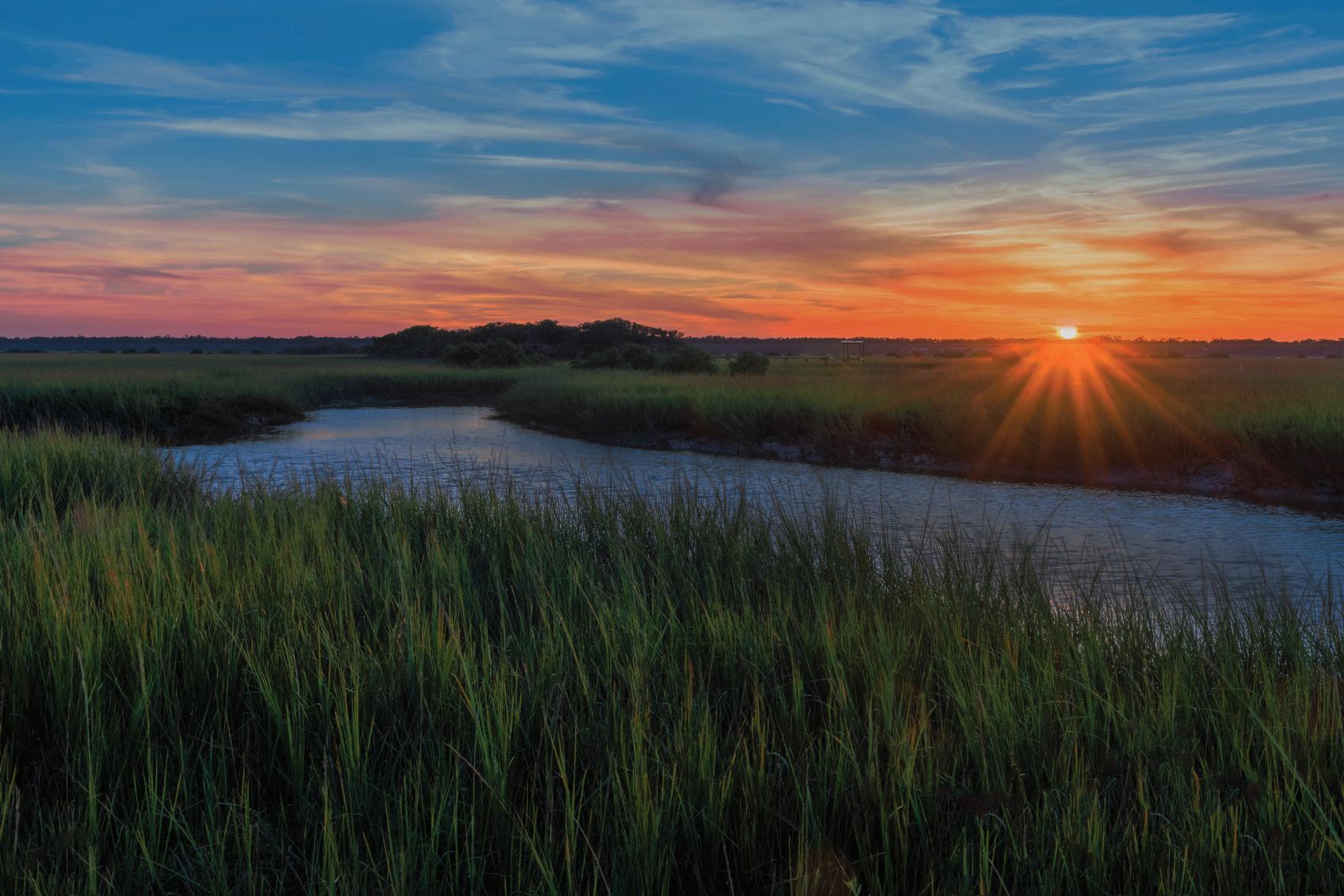
Courtesy photo
Floating solar panels also promote an increased energy production compared to other traditional forms of solar; this is due to the cooling effect of the water, which reduces the temperature of the panels and increases their efficiency, as solar panels tend to perform better at lower temperatures.
reduces the temperature of the panels and increases their efficiency, as solar panels tend to perform better at lower temperatures.
Floating solar has positive impacts on the bodies of water as well. The shade provided by the panels reduces the growth of algae and other aquatic plants that thrive in direct sunlight, preventing the risk
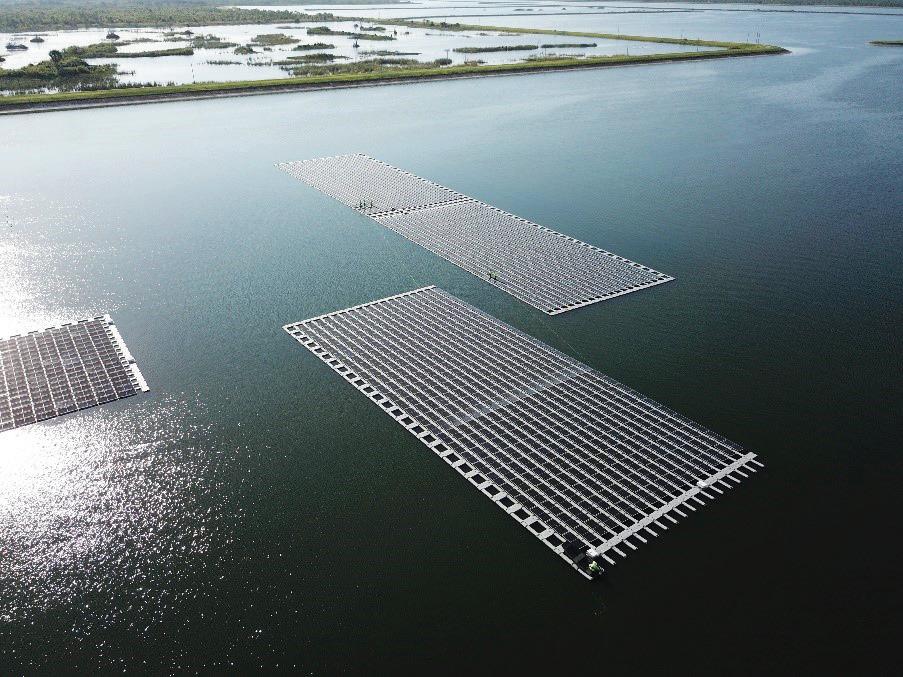
Some of the projects are for major entities like Florida Power & Light, Duke Energy, Comcast, Orlando and Miami International Airports, the U.S. Army, and many others.
The future of floating solar looks promising as more and more countries and communities are turning to this technology to generate renewable energy.
The numerous advantages, such as land and water conservation make floating solar more desirable. Currently all of the solar built in the United States represents about 5% of the power produced.
NREL (nrel.gov) recently performed a study that shows the available non-navigable bodies of water in the United States could float 10% of the power needed.
The future is bright for floating solar.●
The 28th Florida Remediation Conference (FRC 2023)
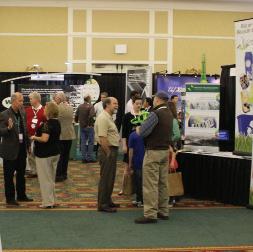
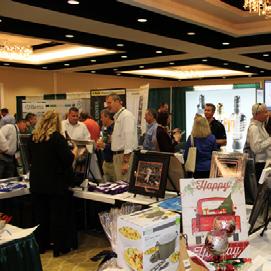

November 1-3, 2023 Rosen Centre Hotel Orlando, Florida One of the Premier Remediation and
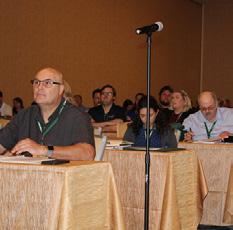

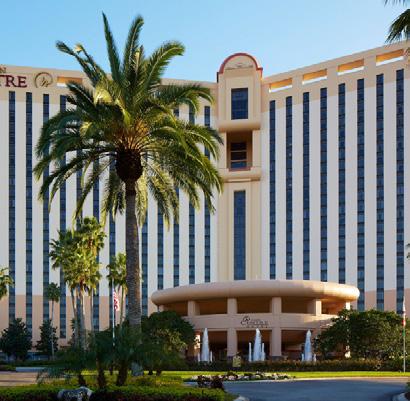
•
Food security is a matter of national security, and by protecting and preserving these lands that have an immense amount of economic impact to food and agricultural production in our state, we are securing the livelihood of Florida.
Thanks to the Governor and my fellow Cabinet members as well as the landowners who are partnering with us on this program, we are working to ensure that 100 years from now we can still farm in
Also at the recent Cabinet meeting, a modification to Rule 51-7, F.A.C. was passed, aimed at improving the guidelines for the Rural and Family Lands Protection Program. The amendment will simplify the process and enhance the experience for both program applicants and managers. Furthermore, the application form has been updated to include the Best Management Practices requirements.
The Florida Department of Agriculture and Consumer Services created the Rural and Family Lands Protection Program in 2001 to protect working agricultural lands threatened by other uses, such as development. ●
environmental attorneys help navigate the complexities of Florida environmental laws.
“This is an incredible step forward for our program, and I am confident that it will only continue to grow."
— Commissioner Wilton Simpson
